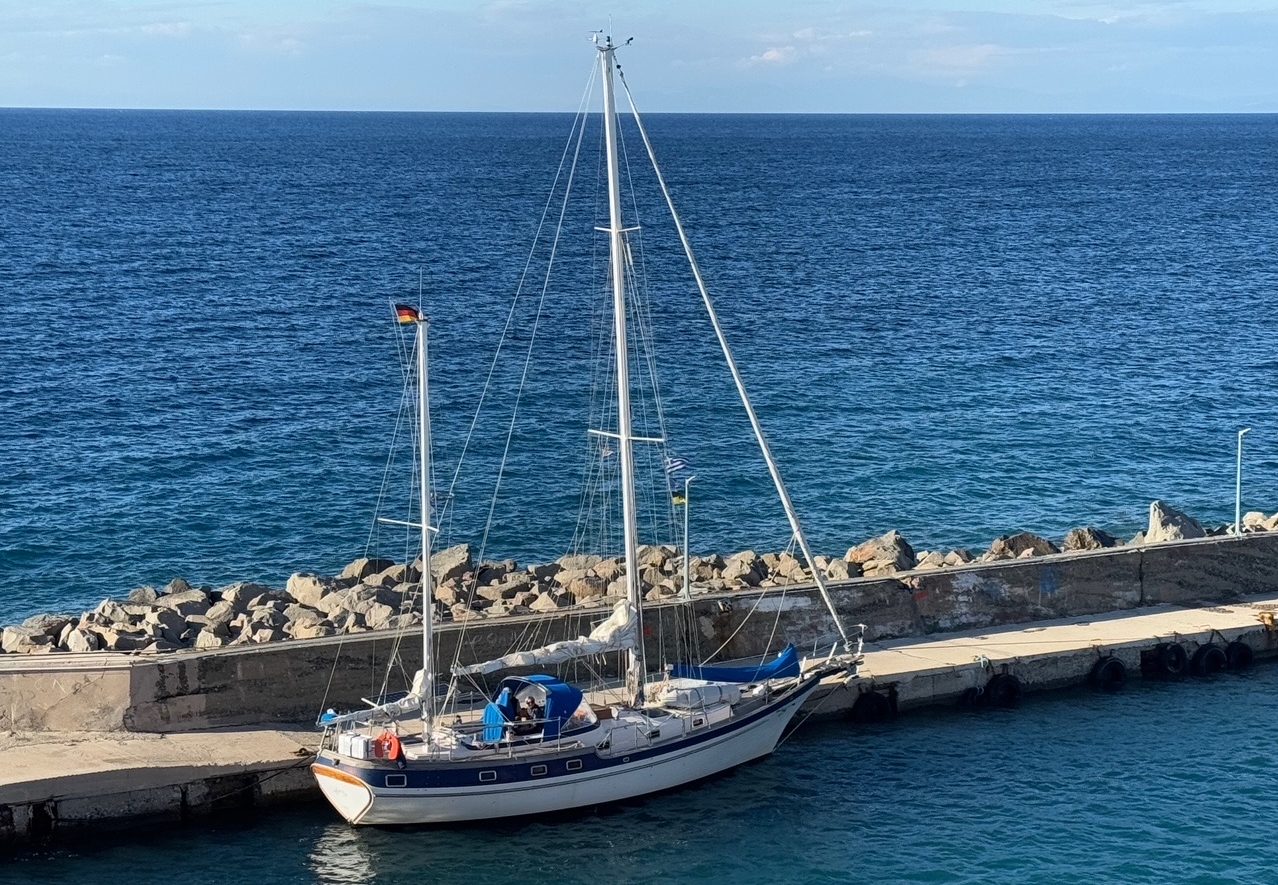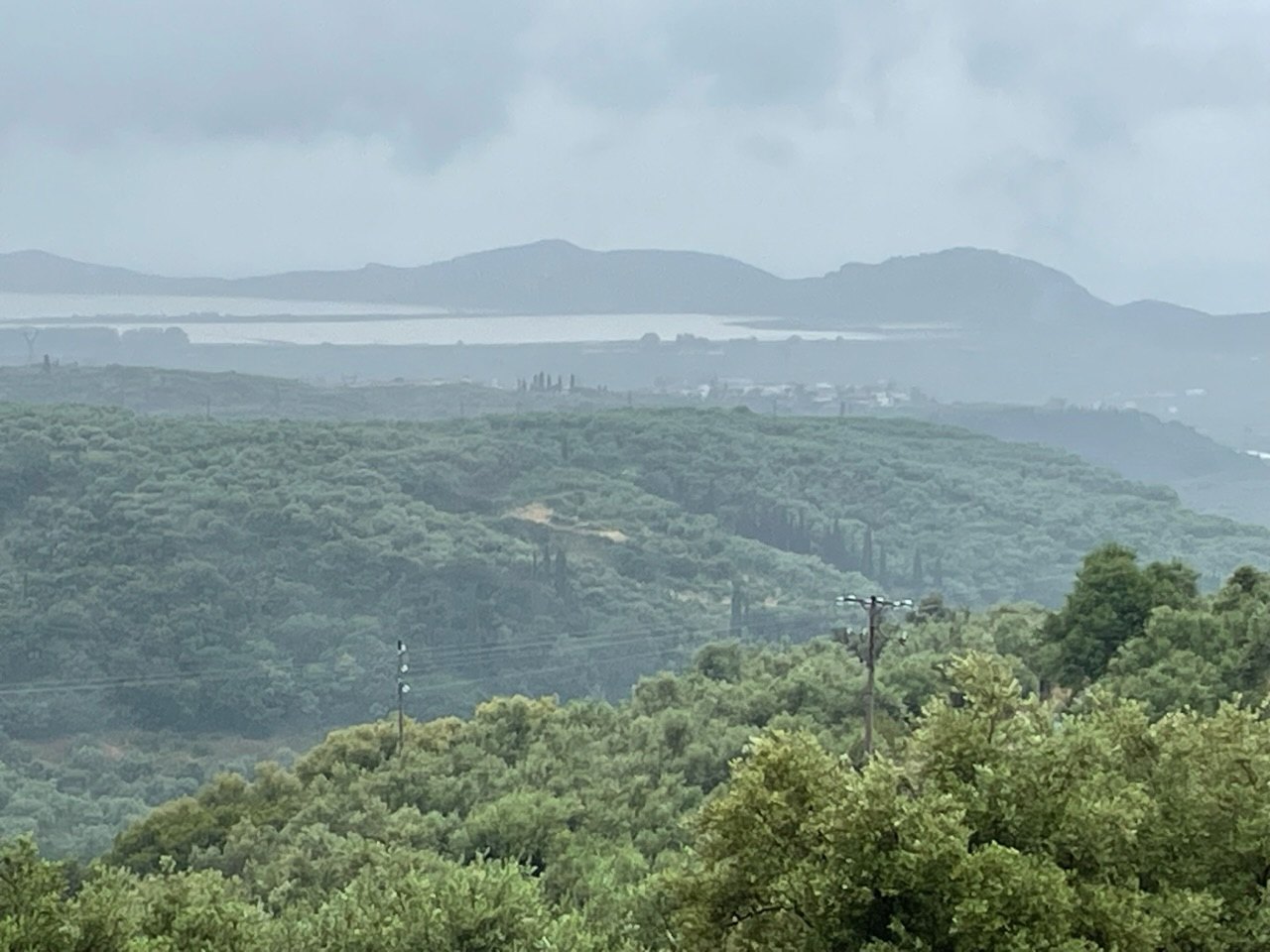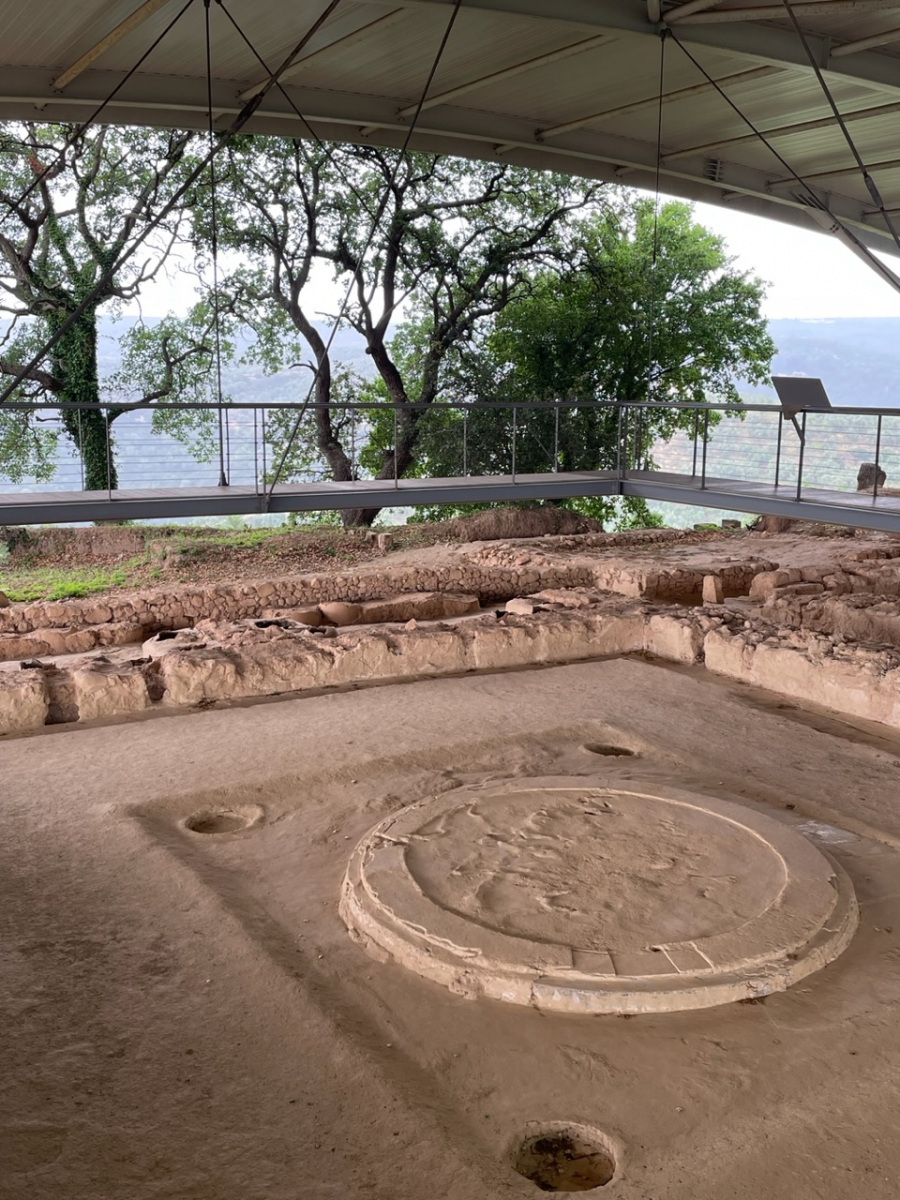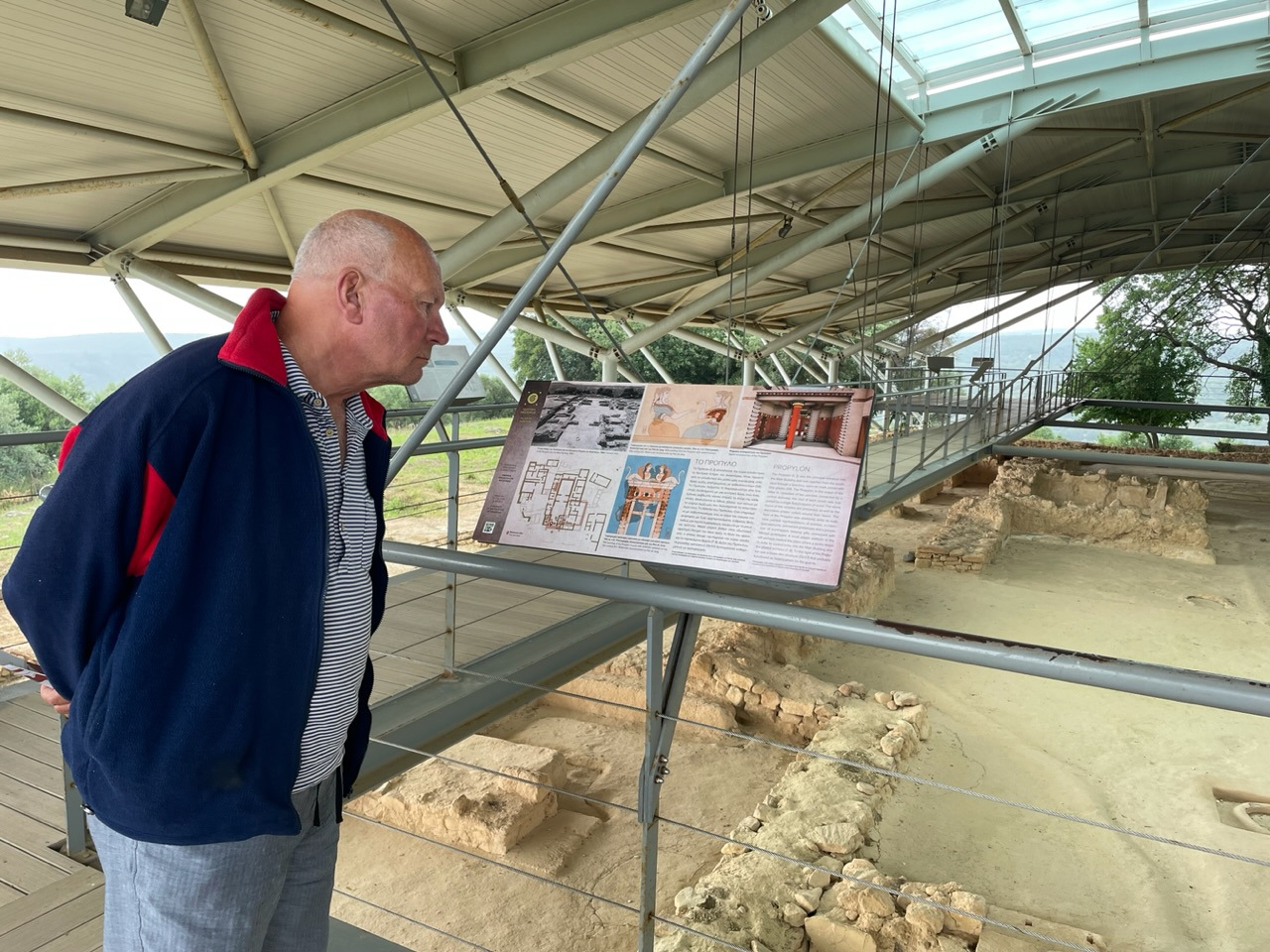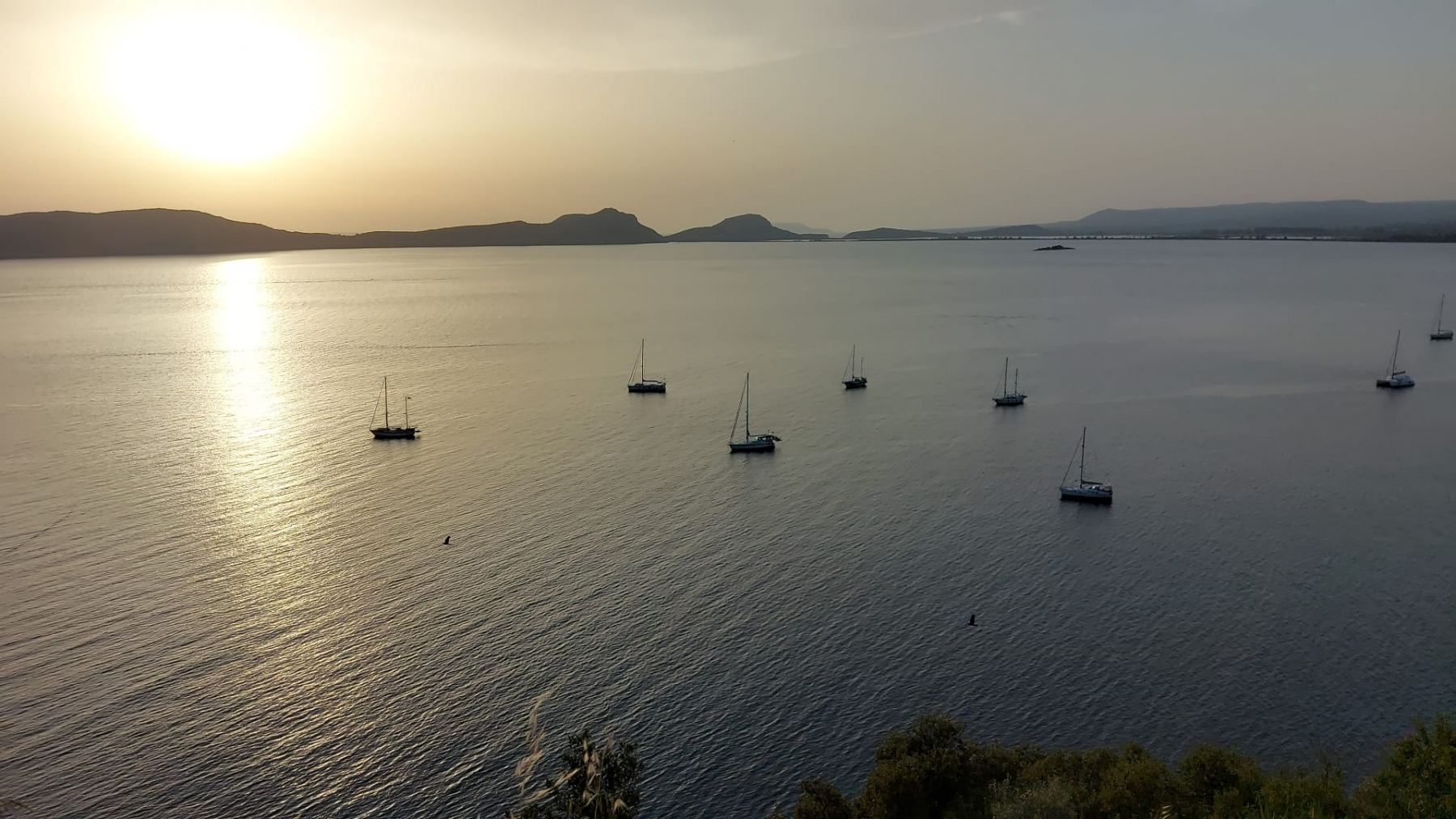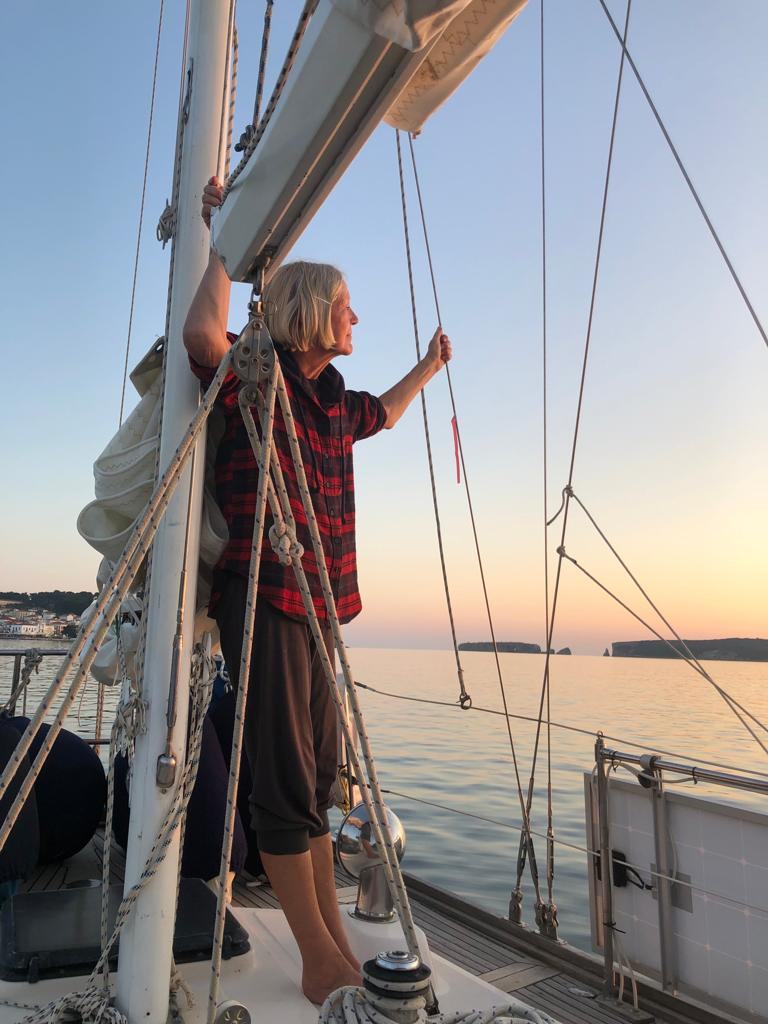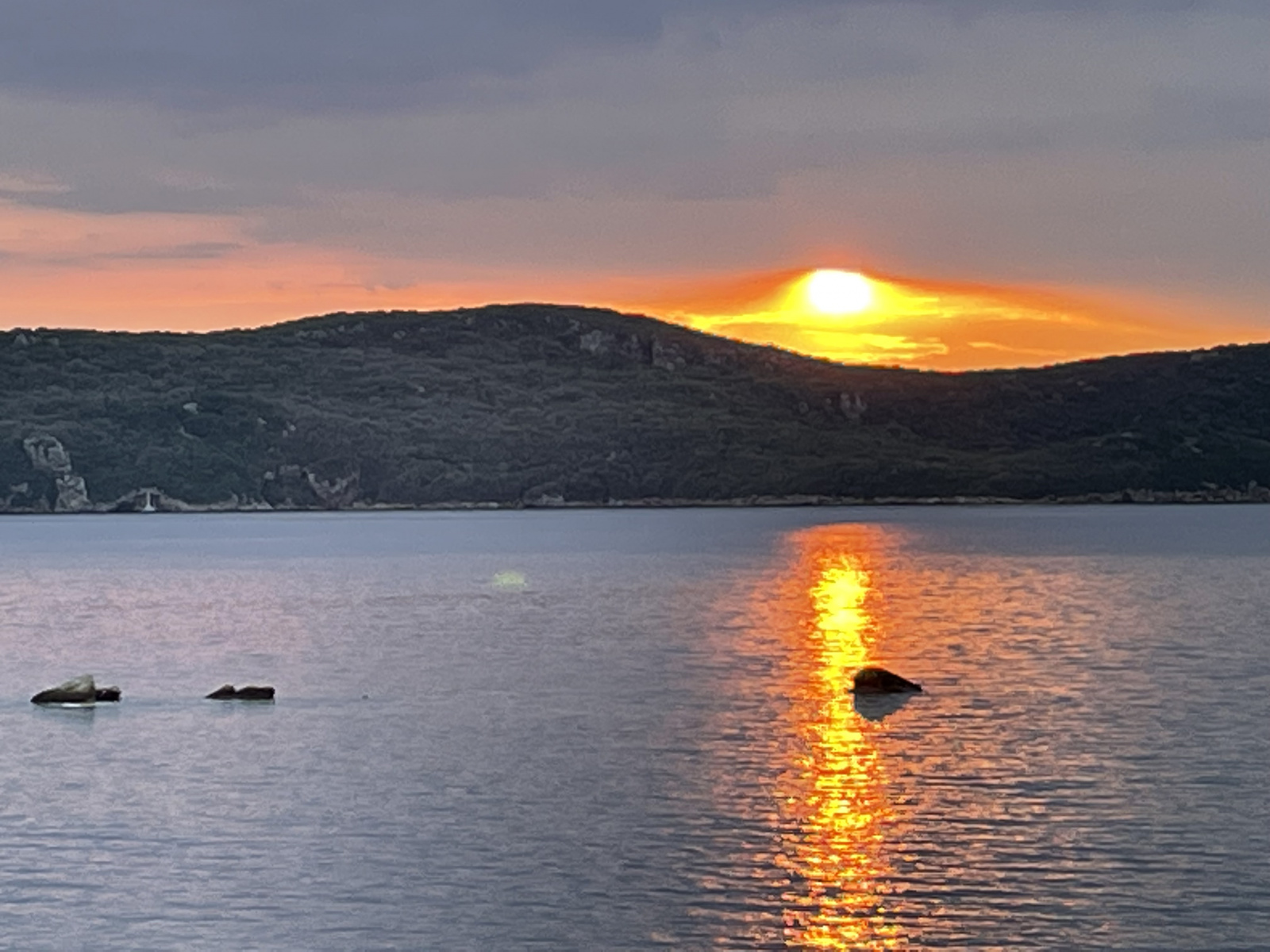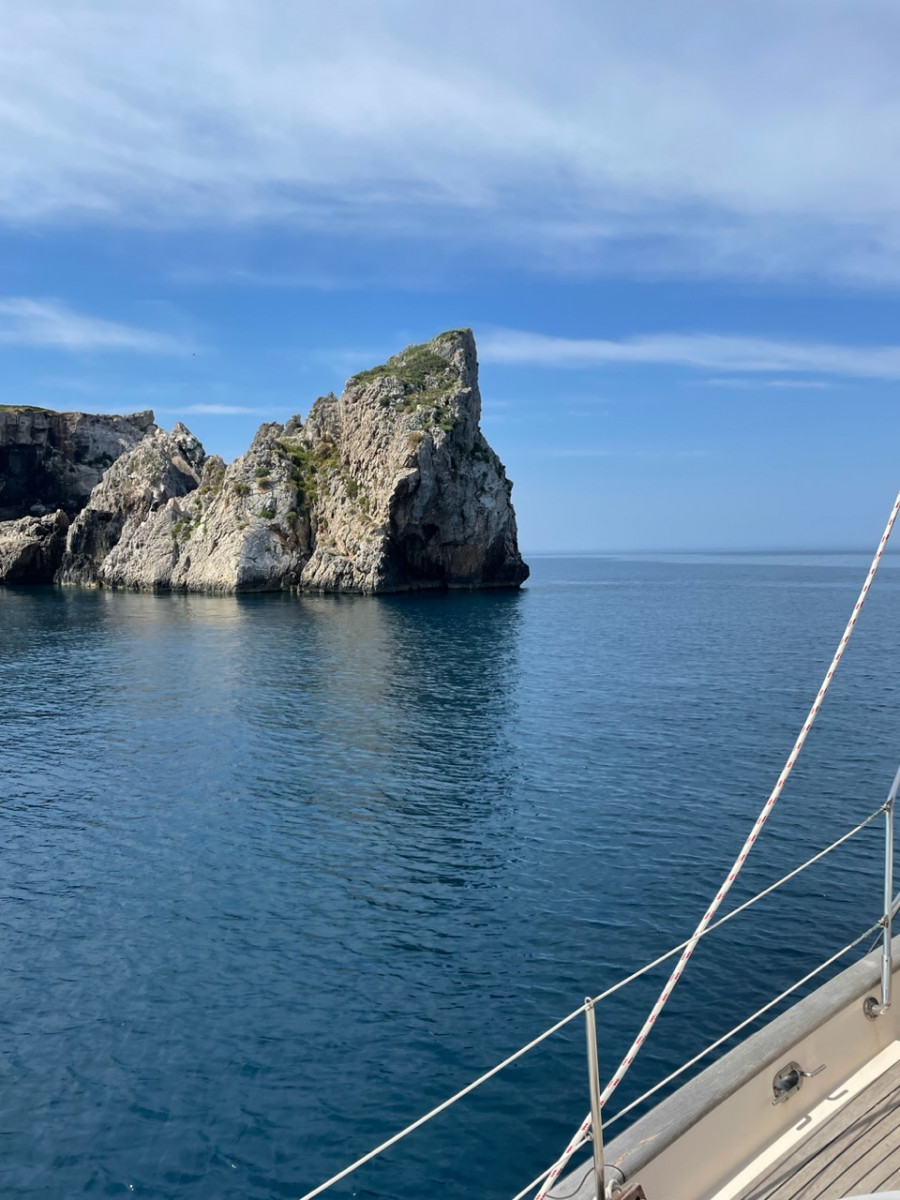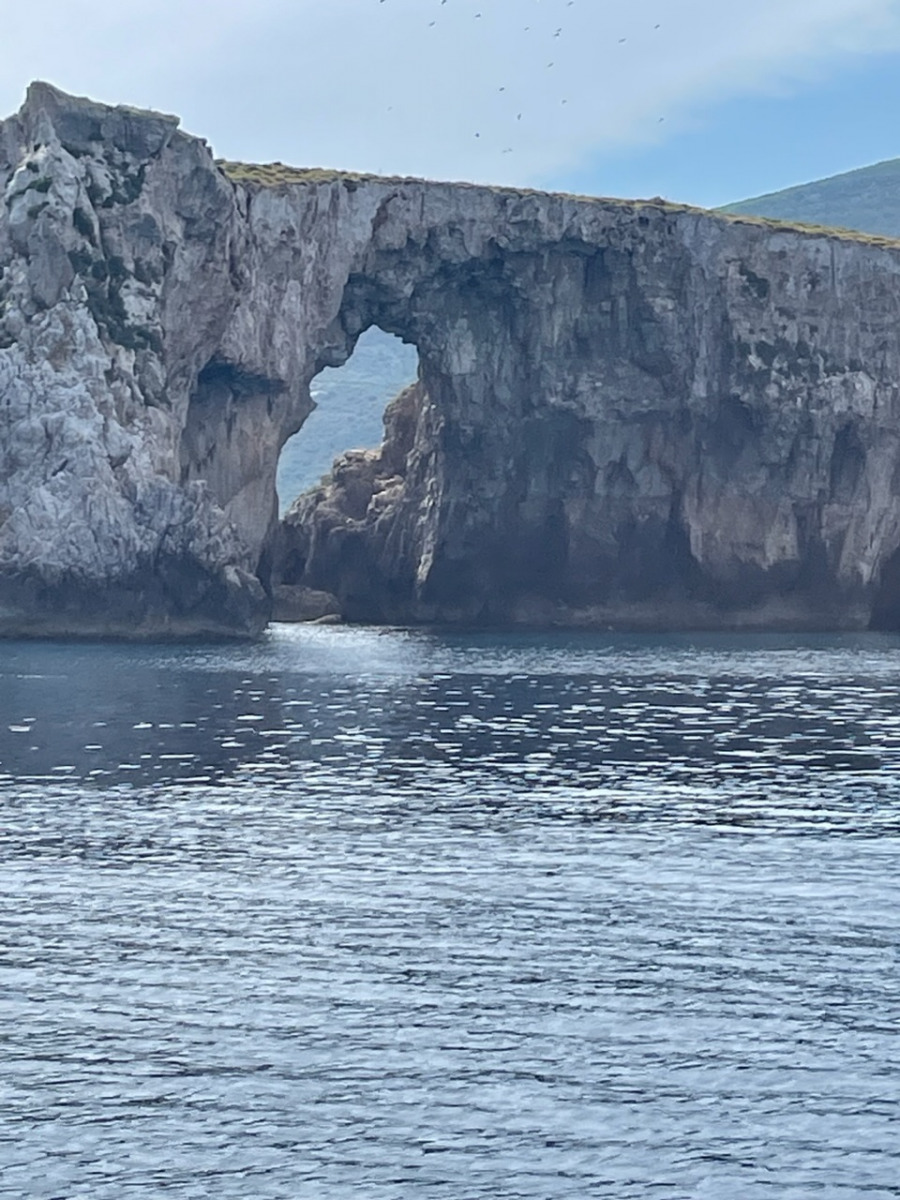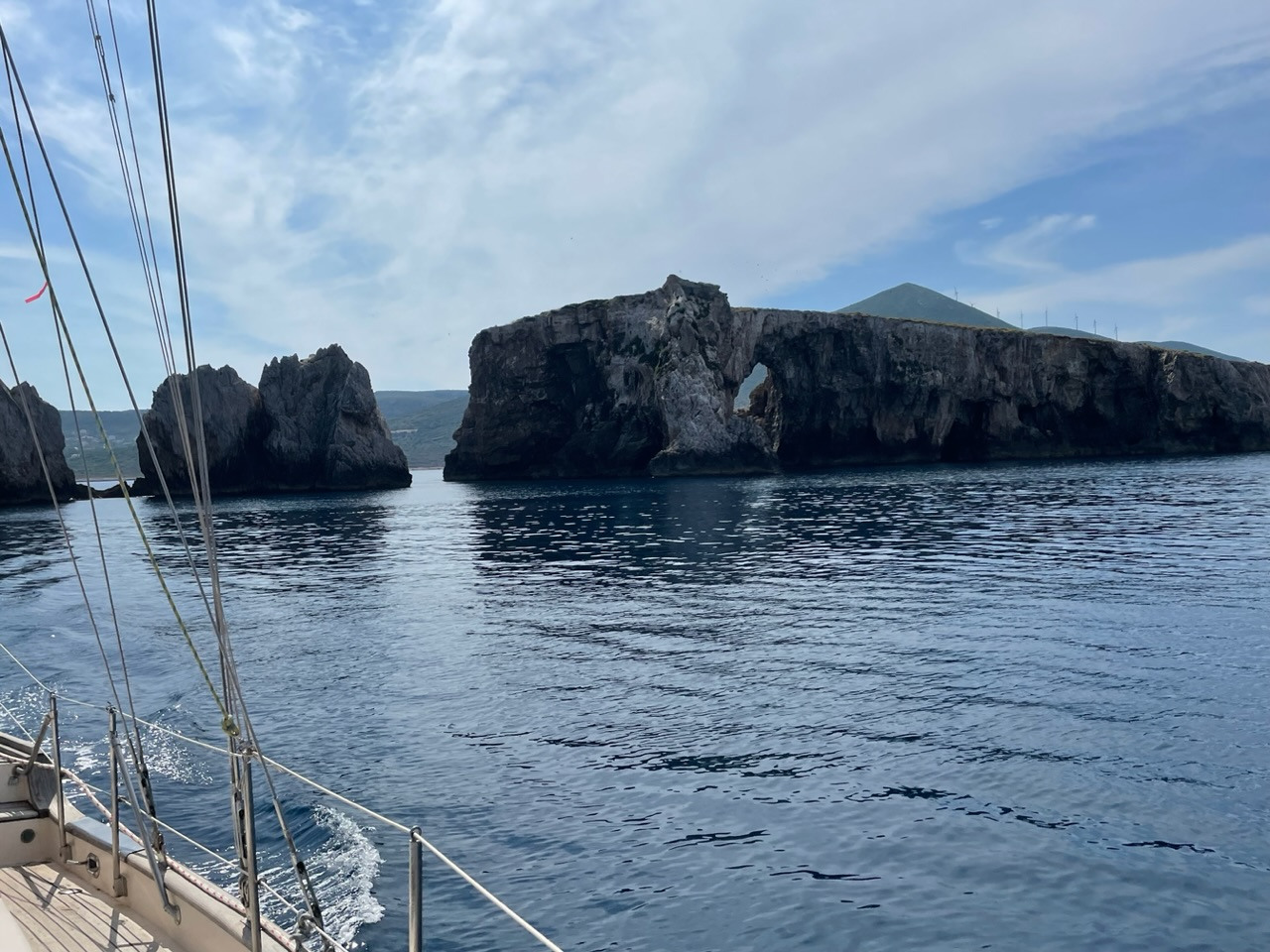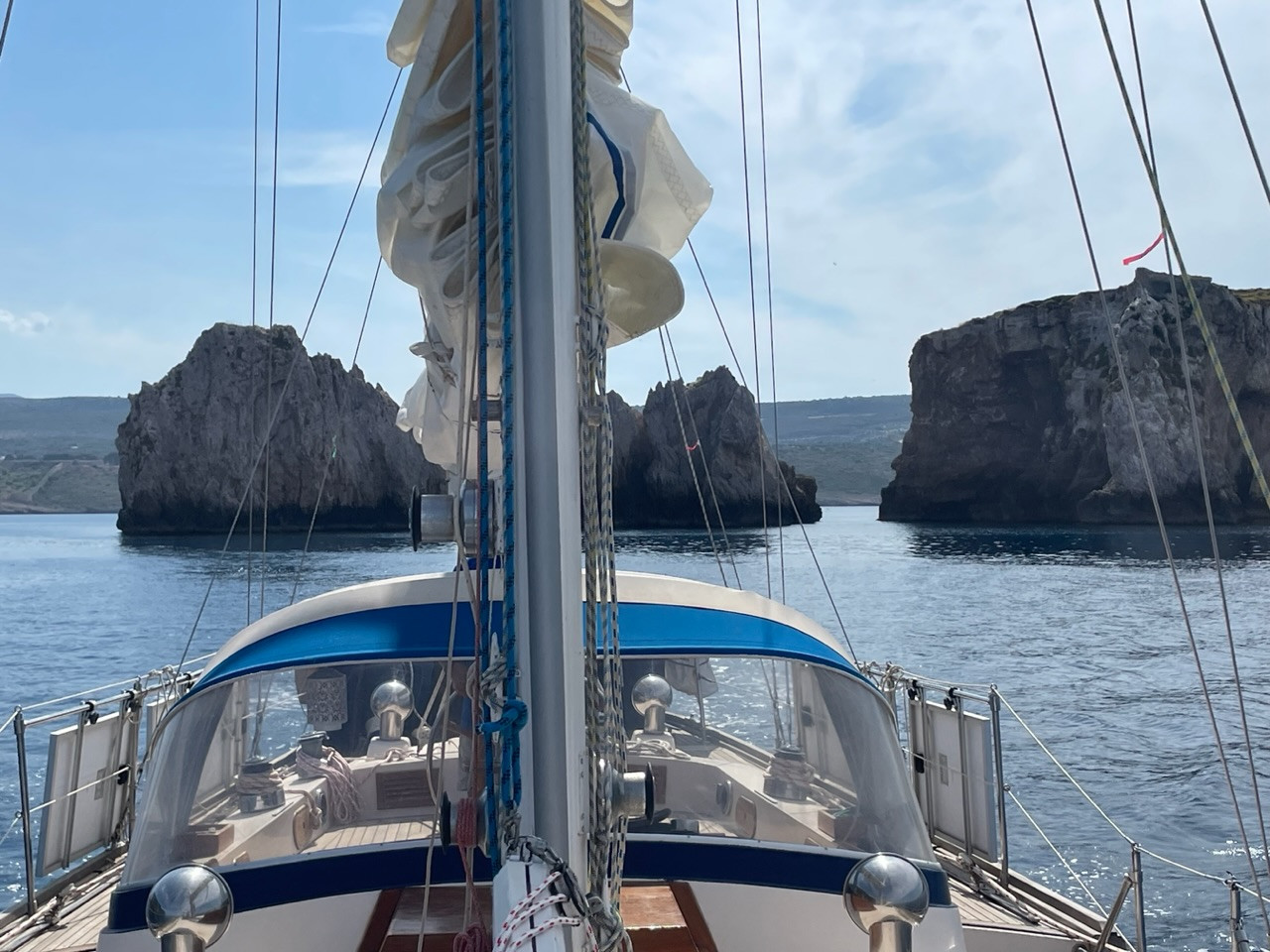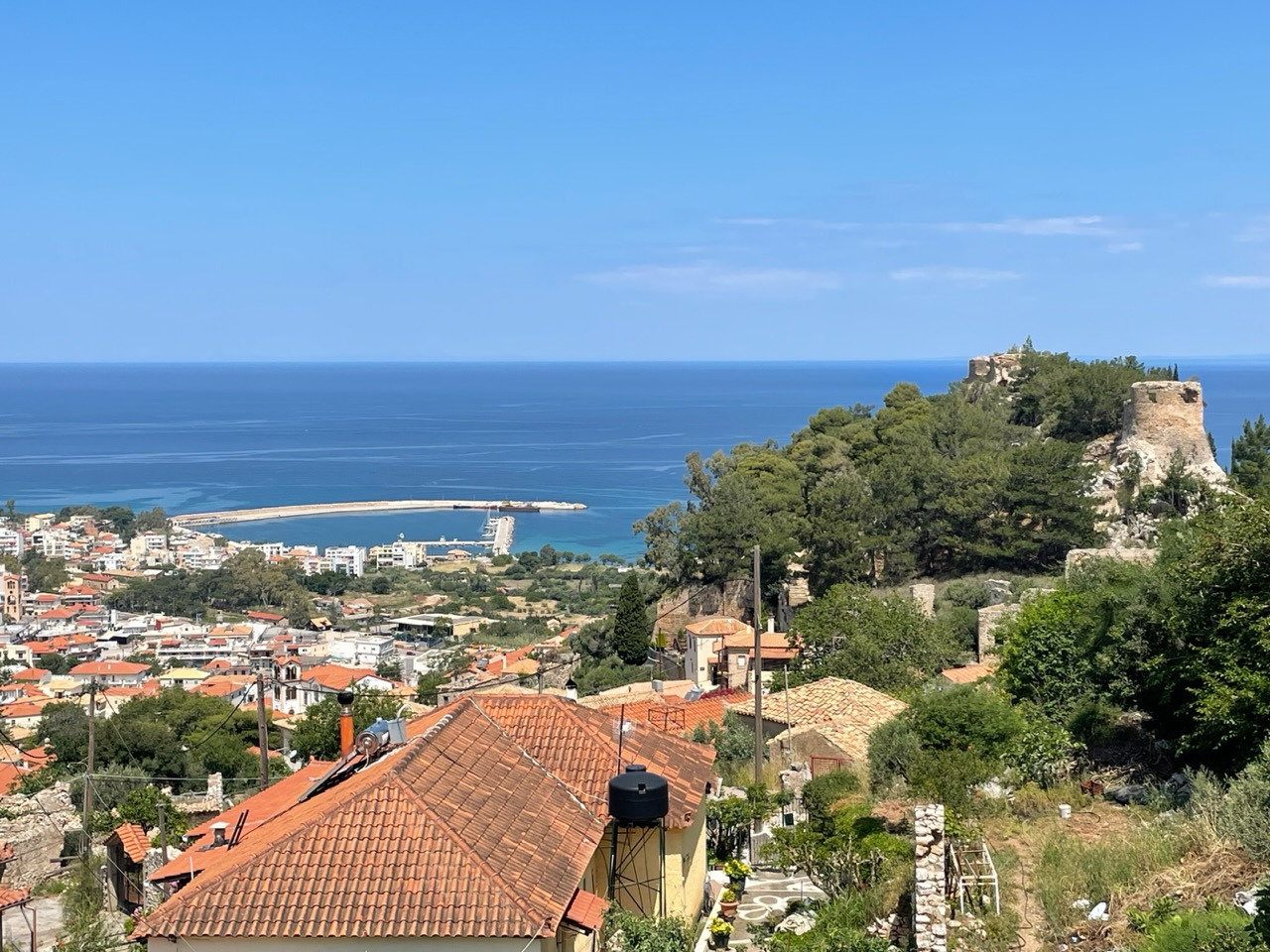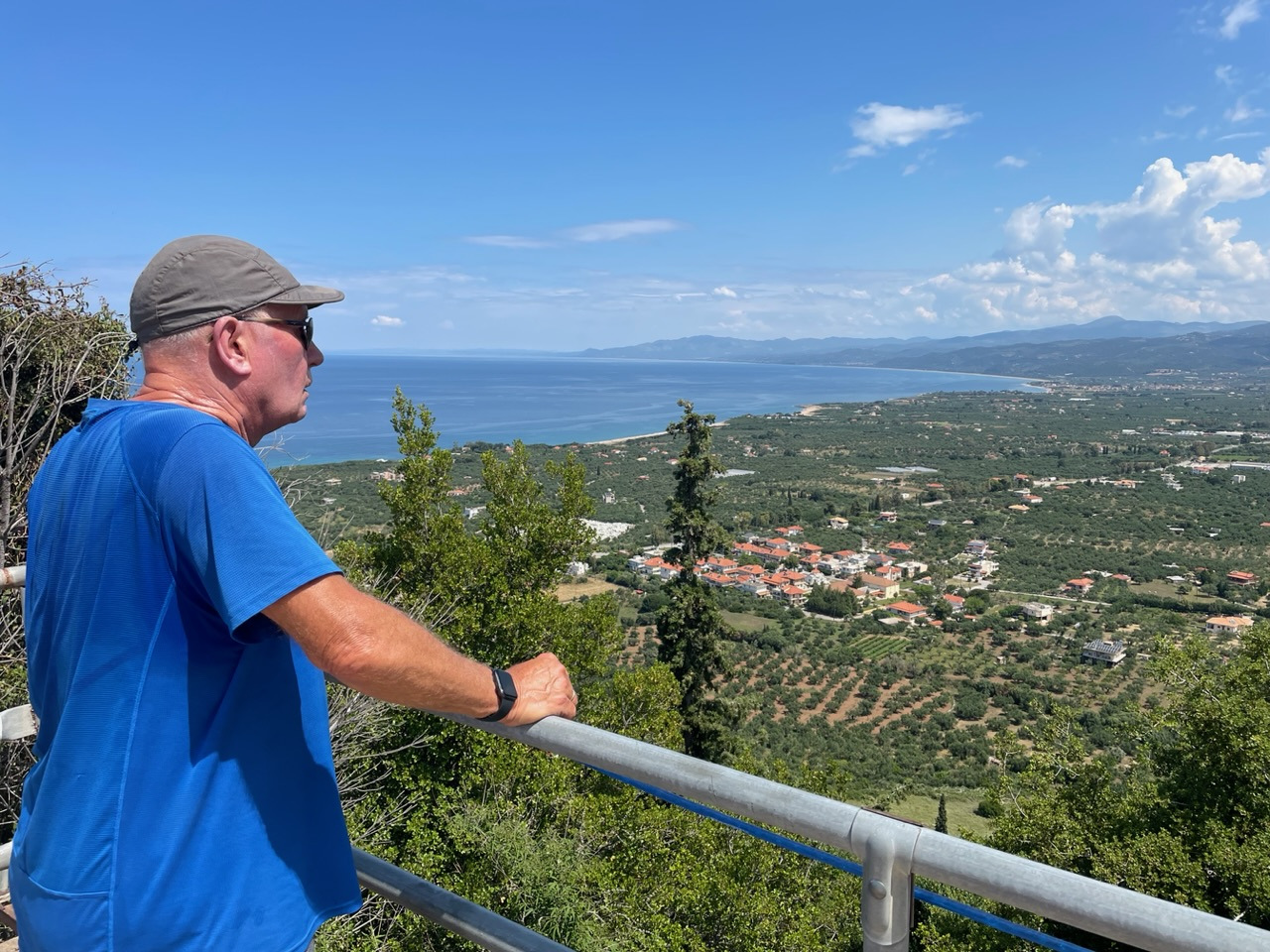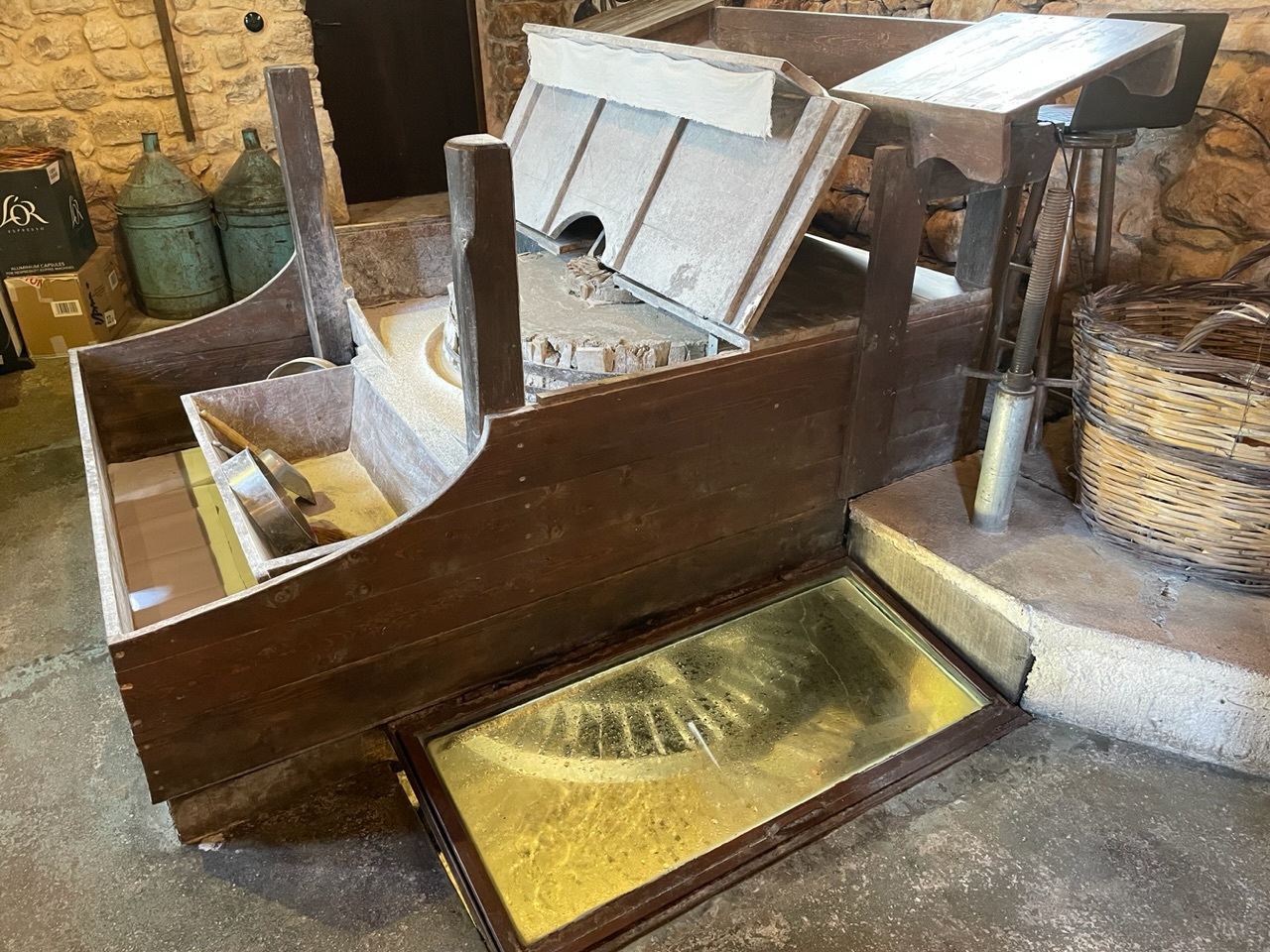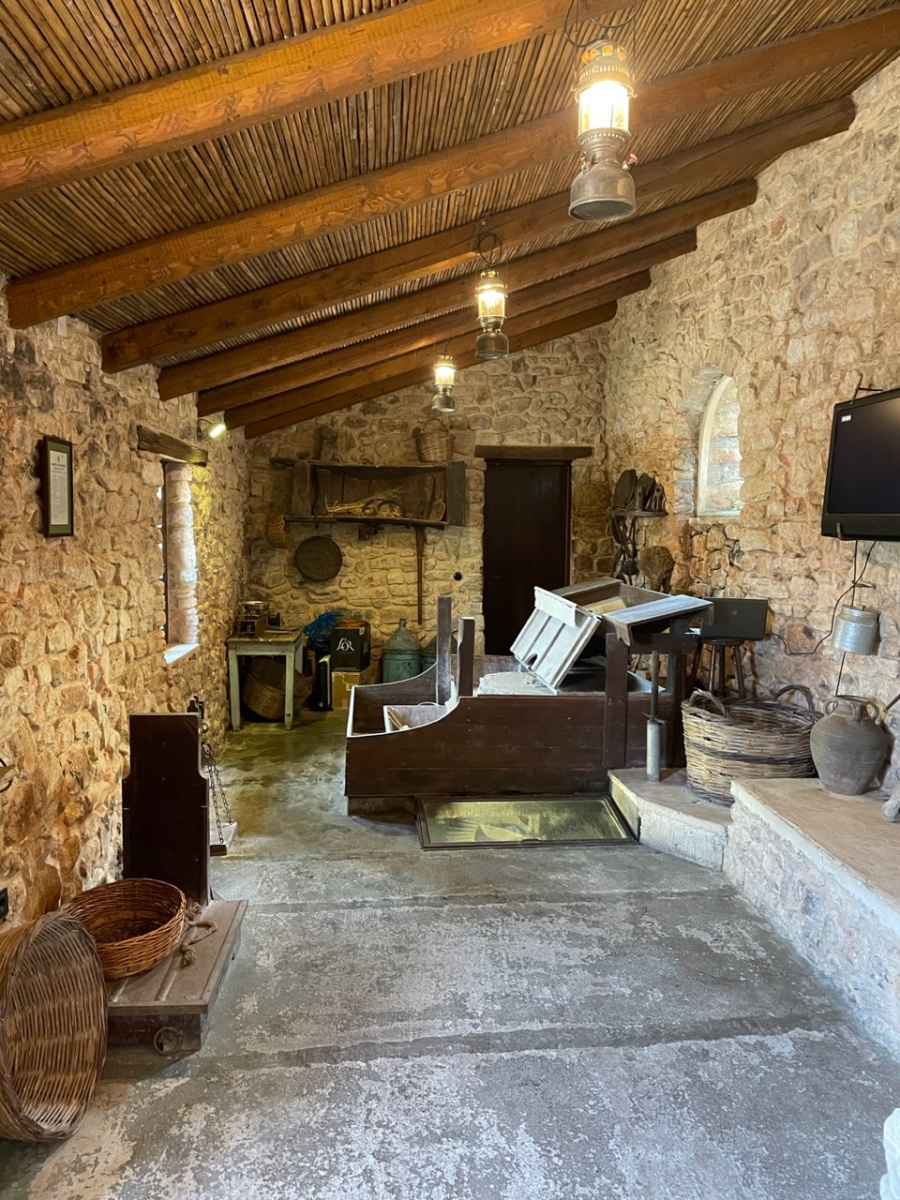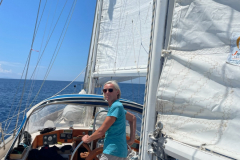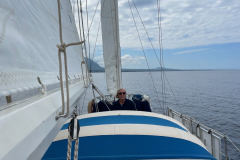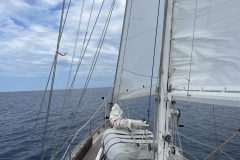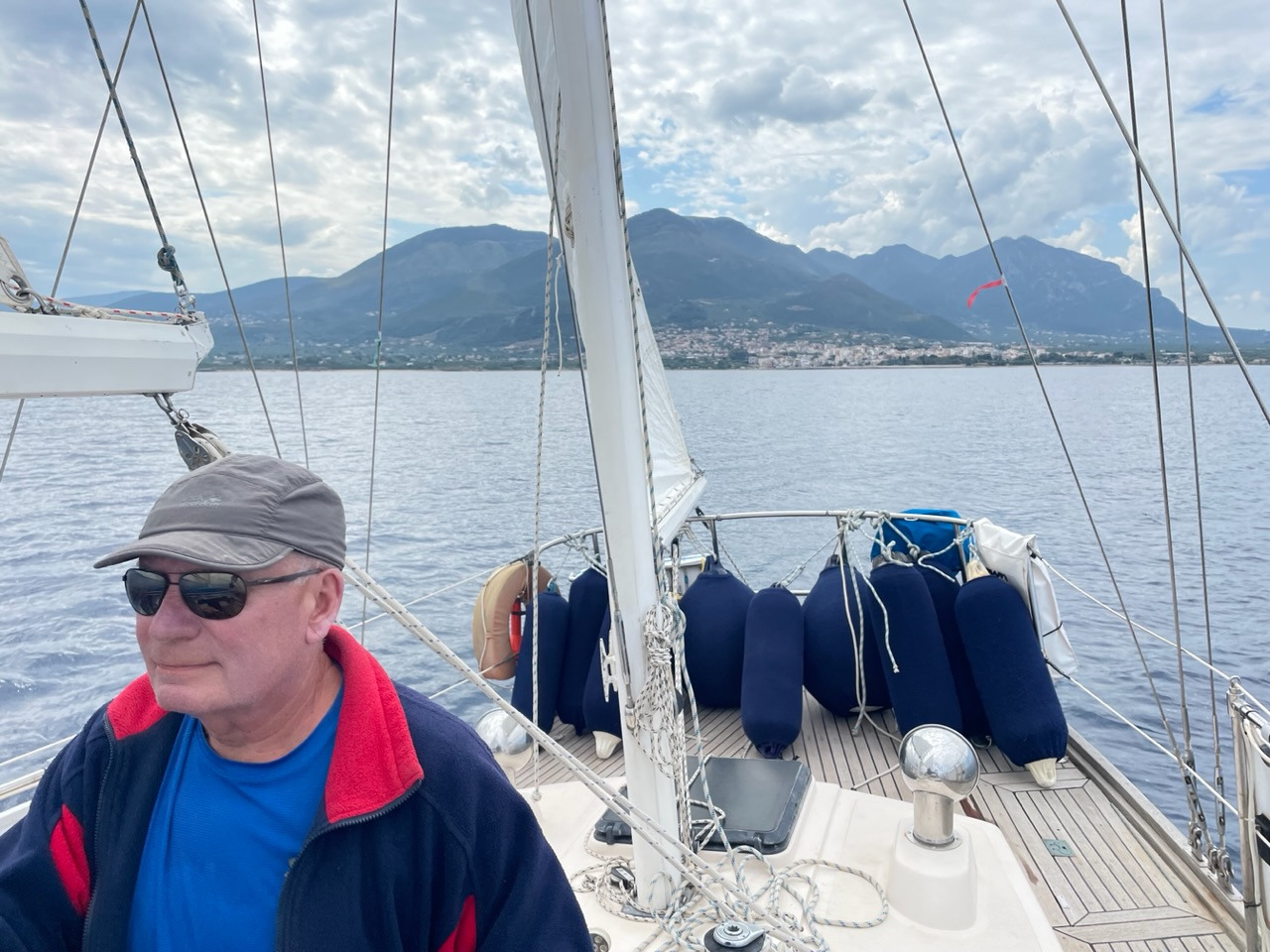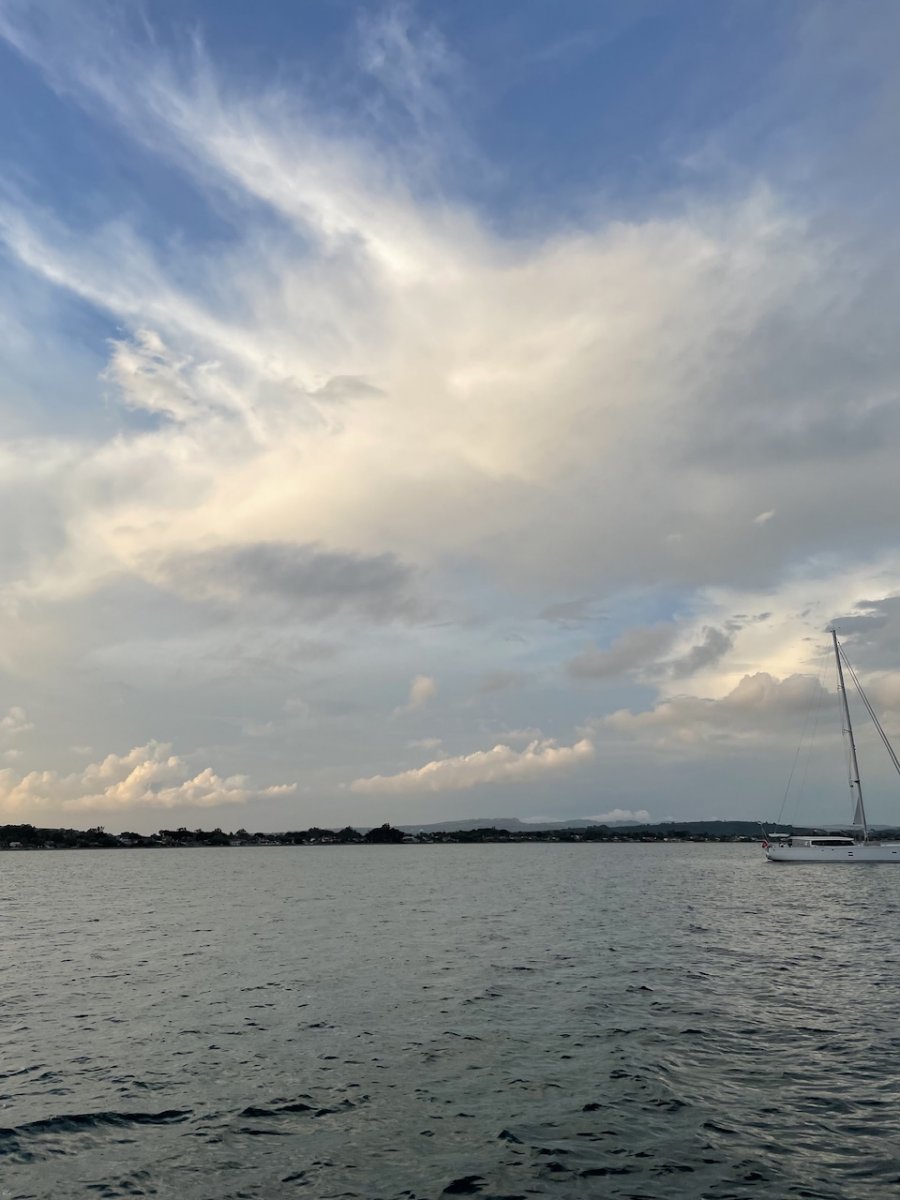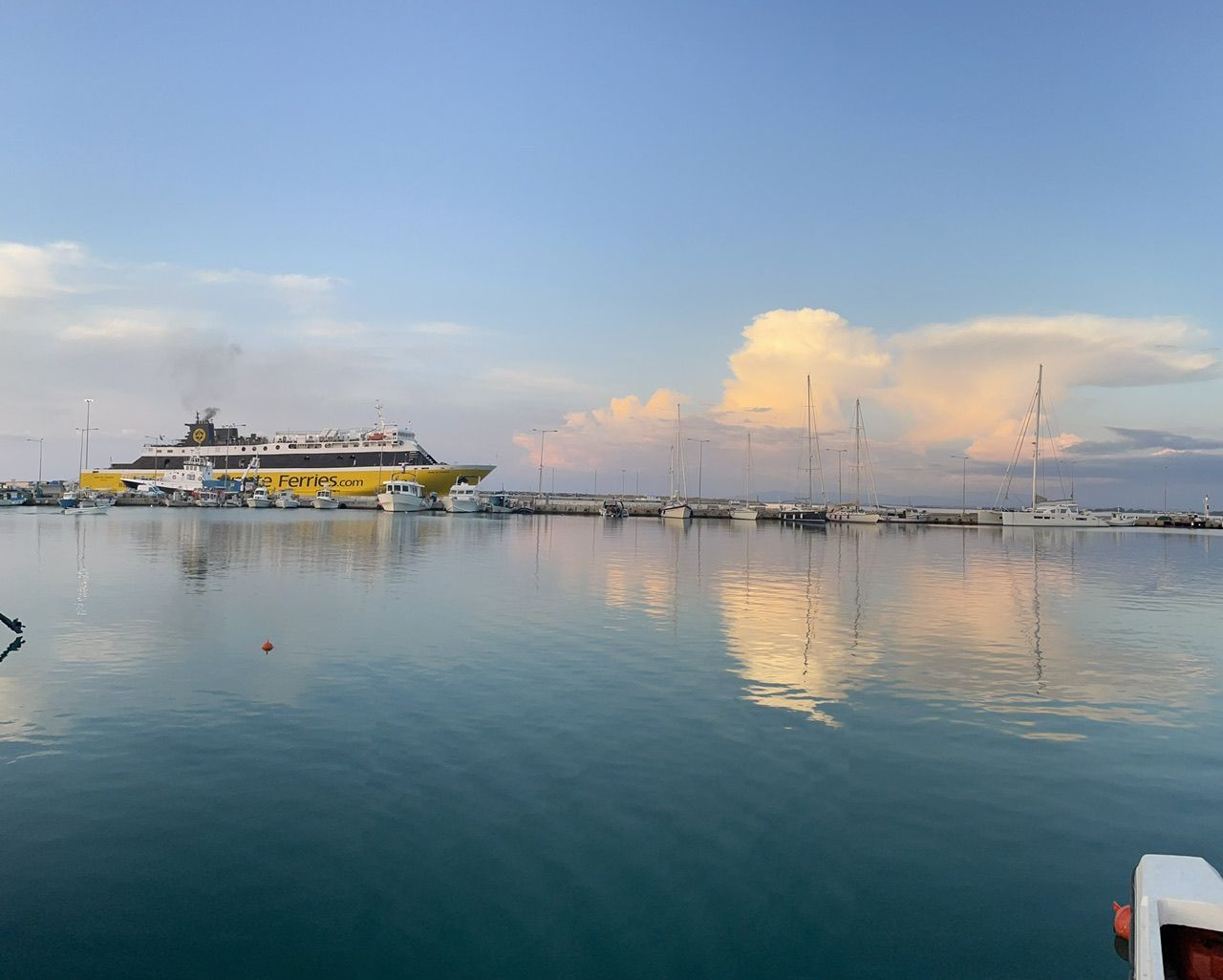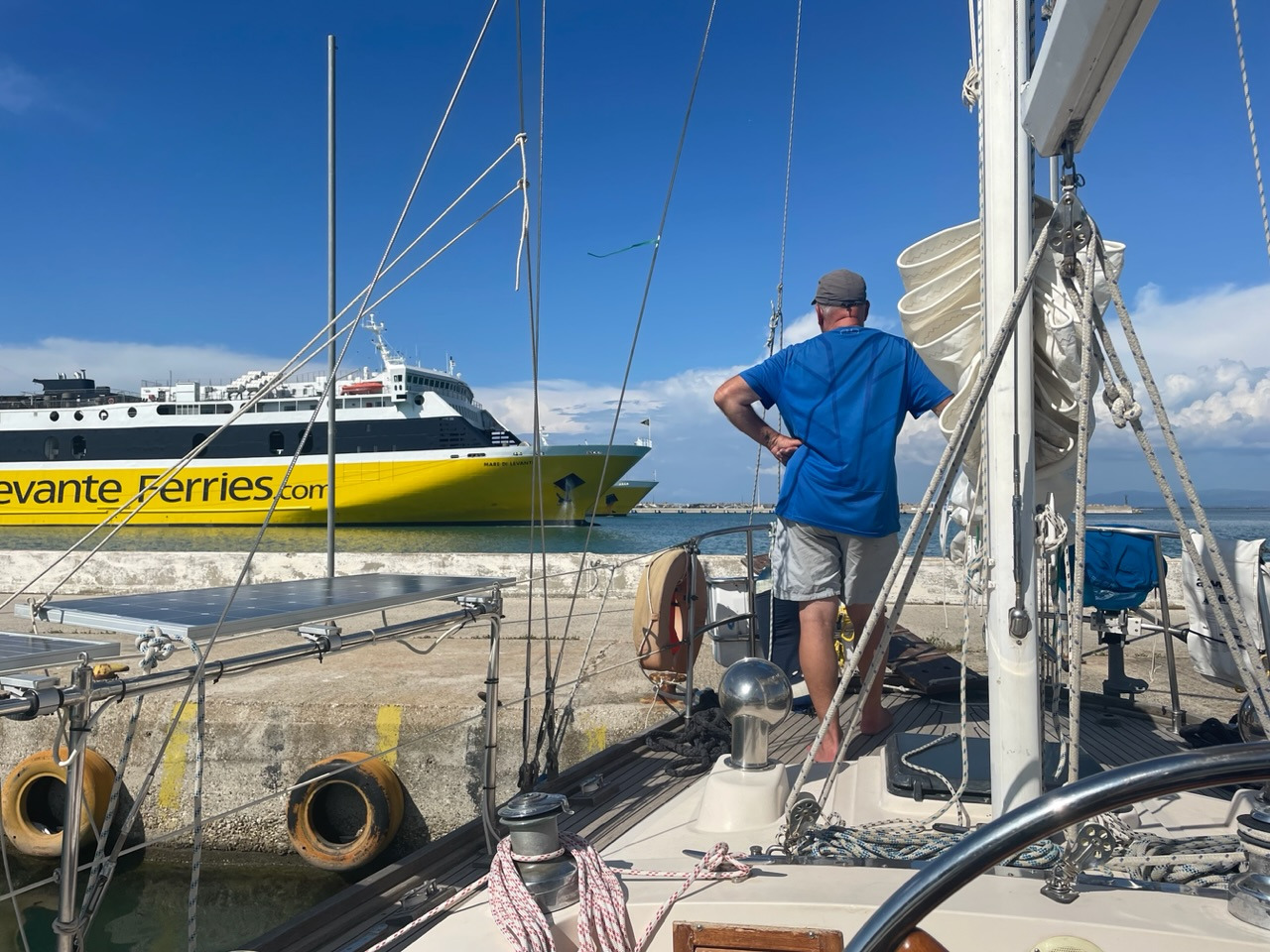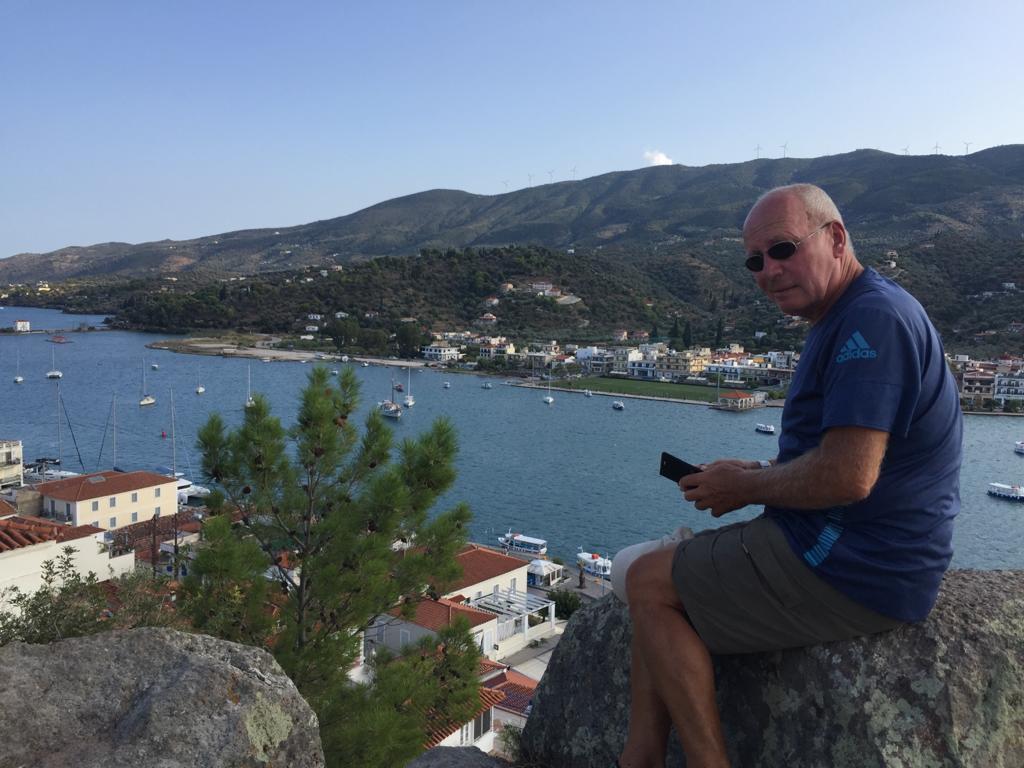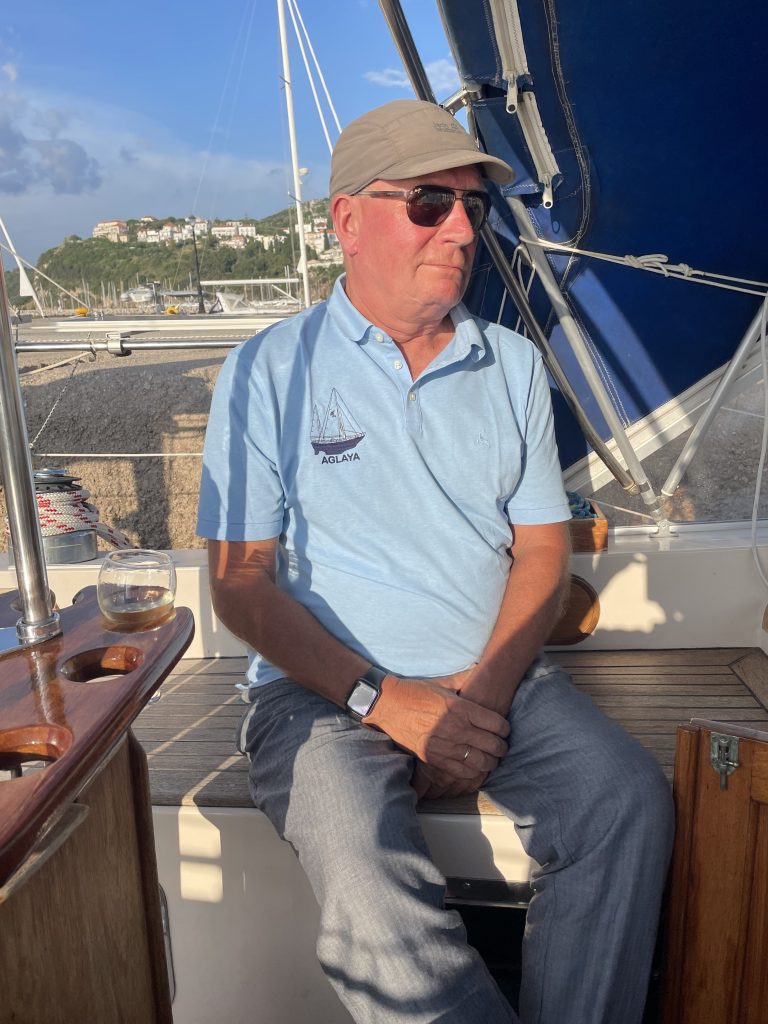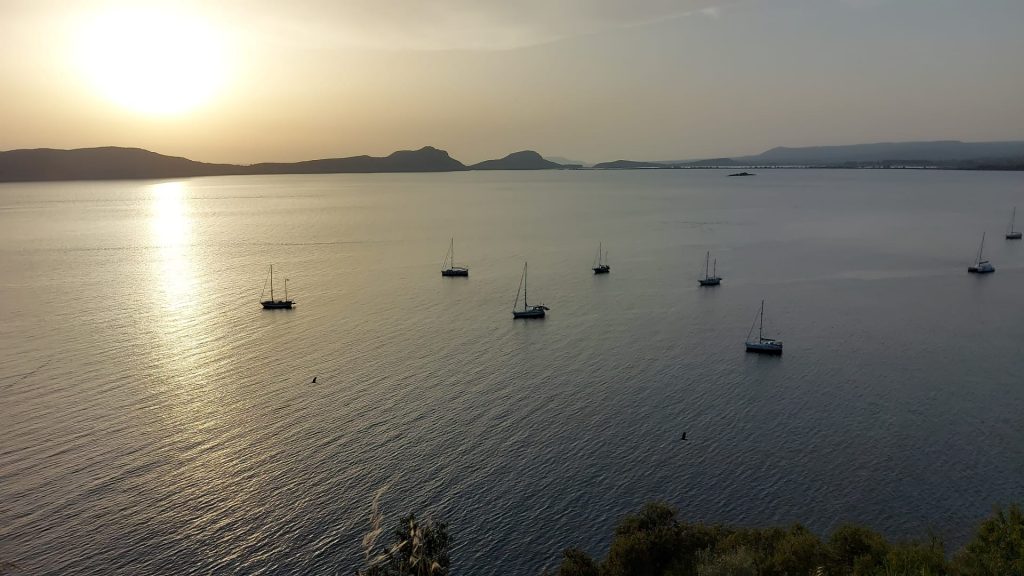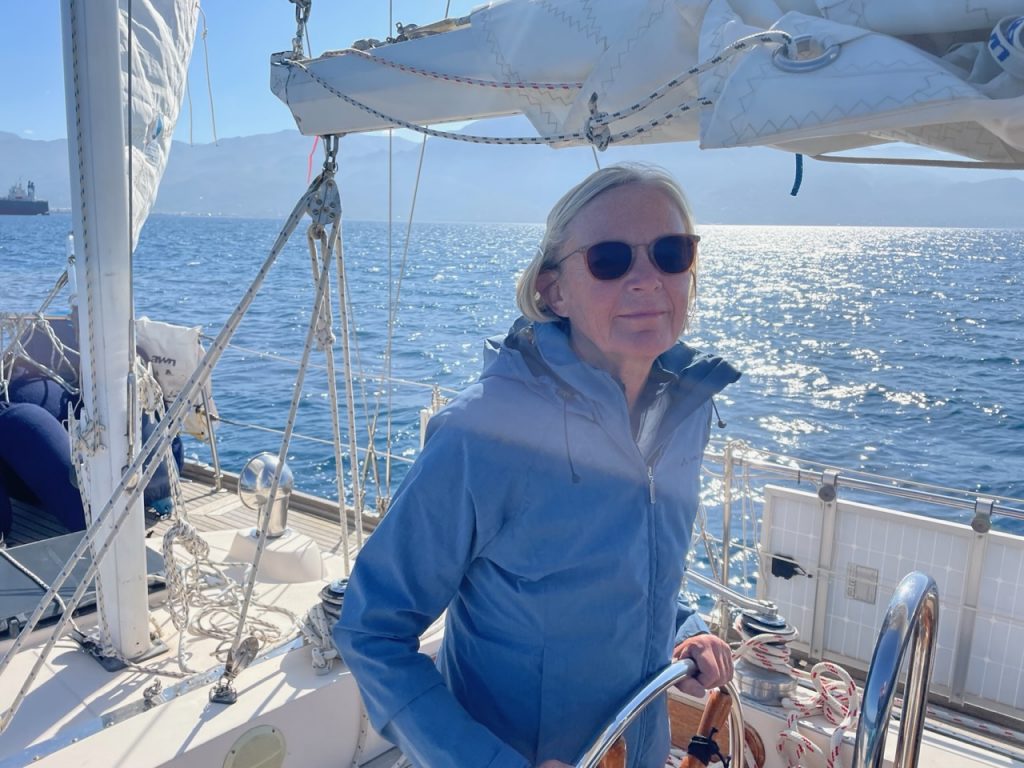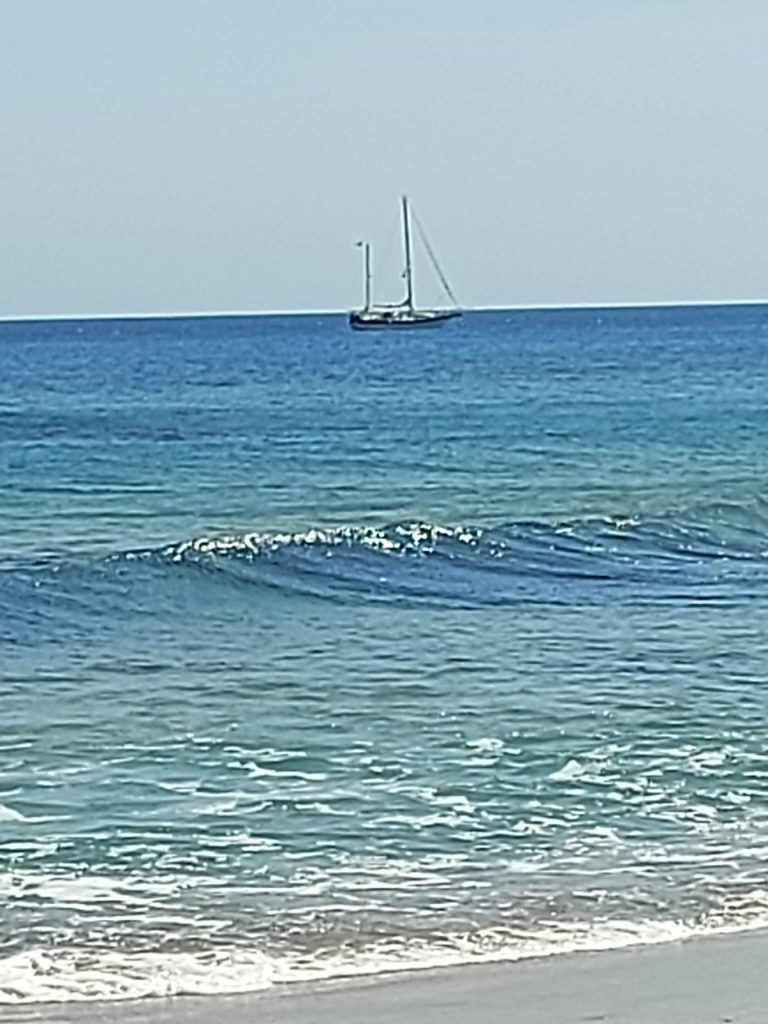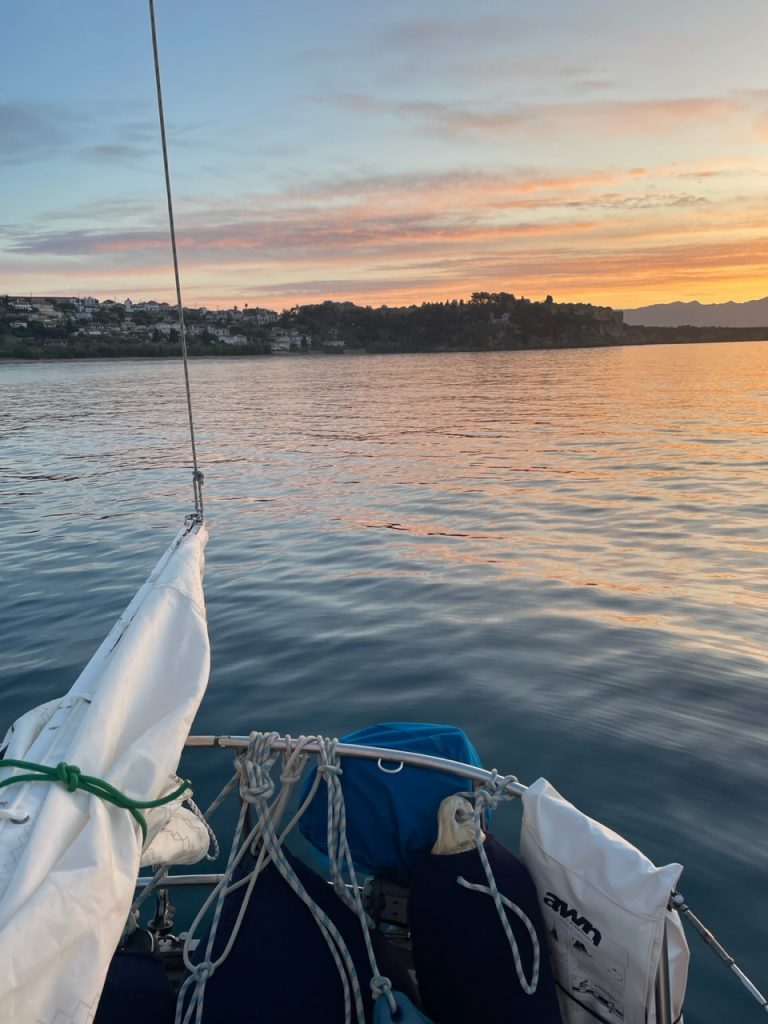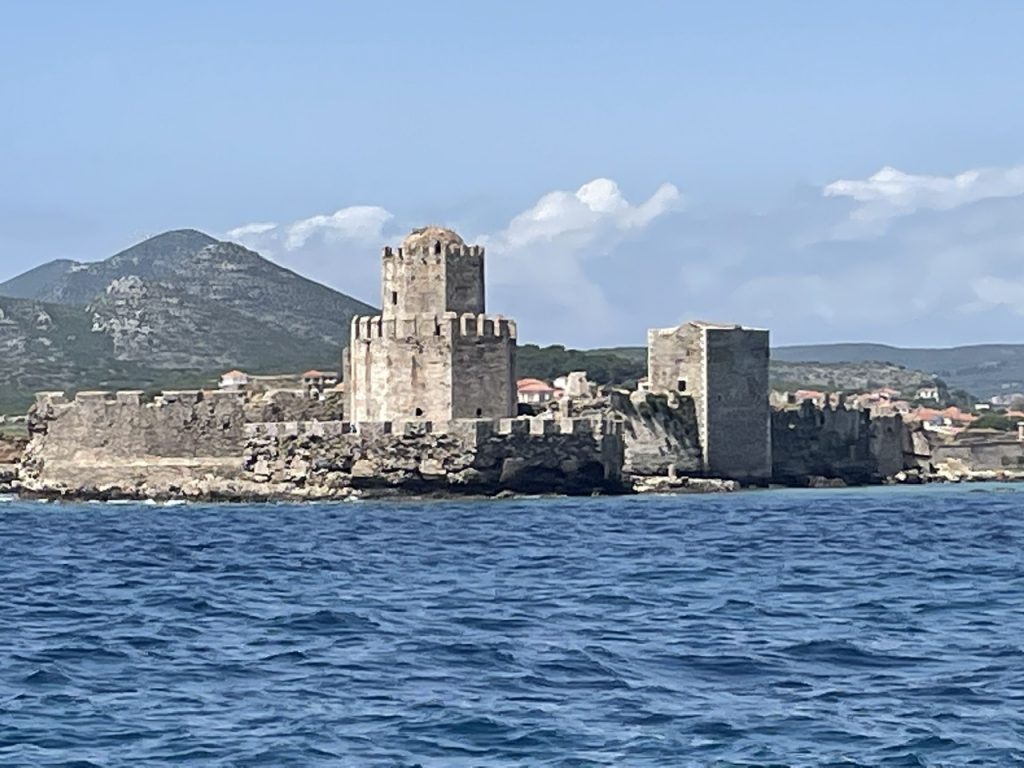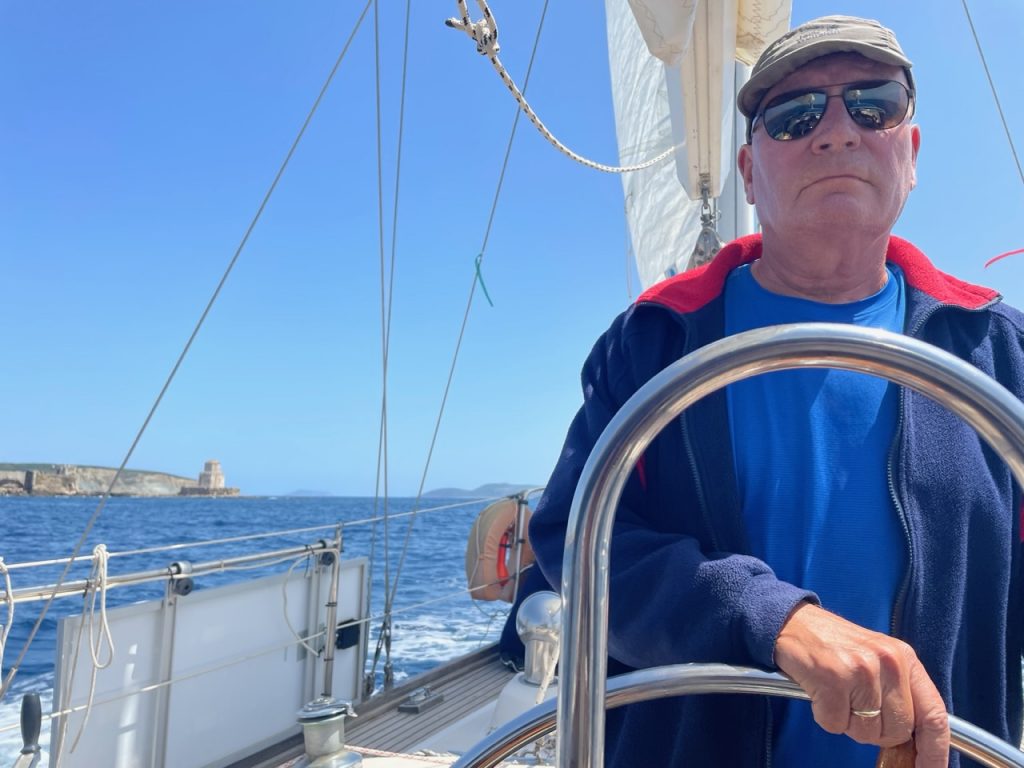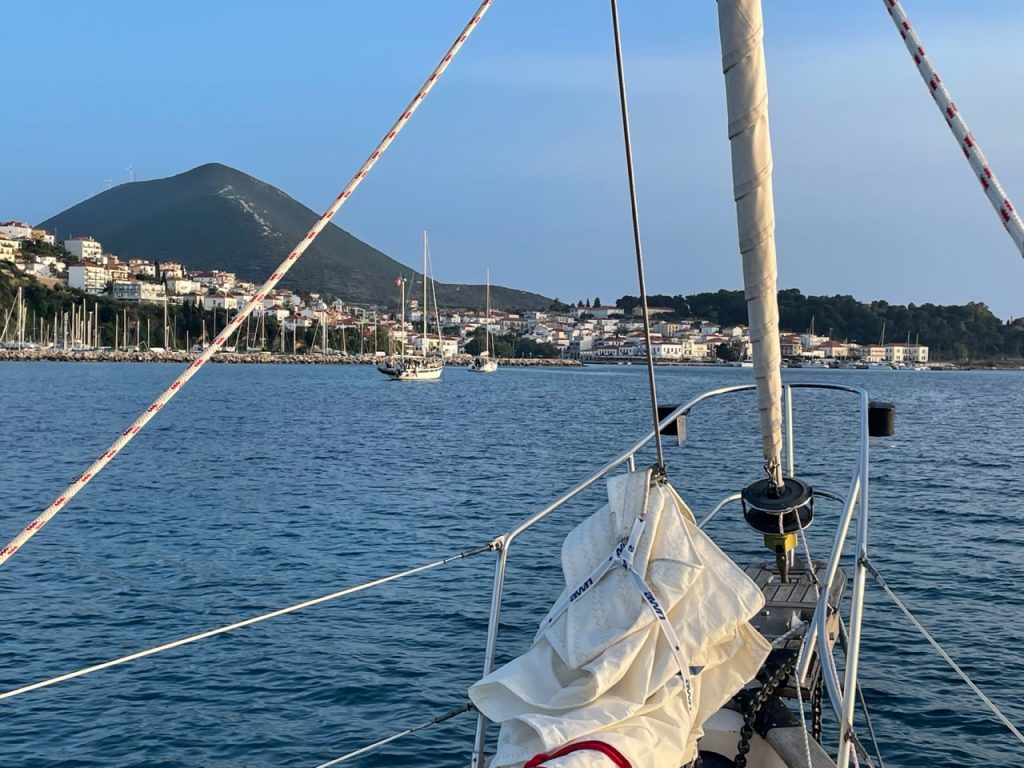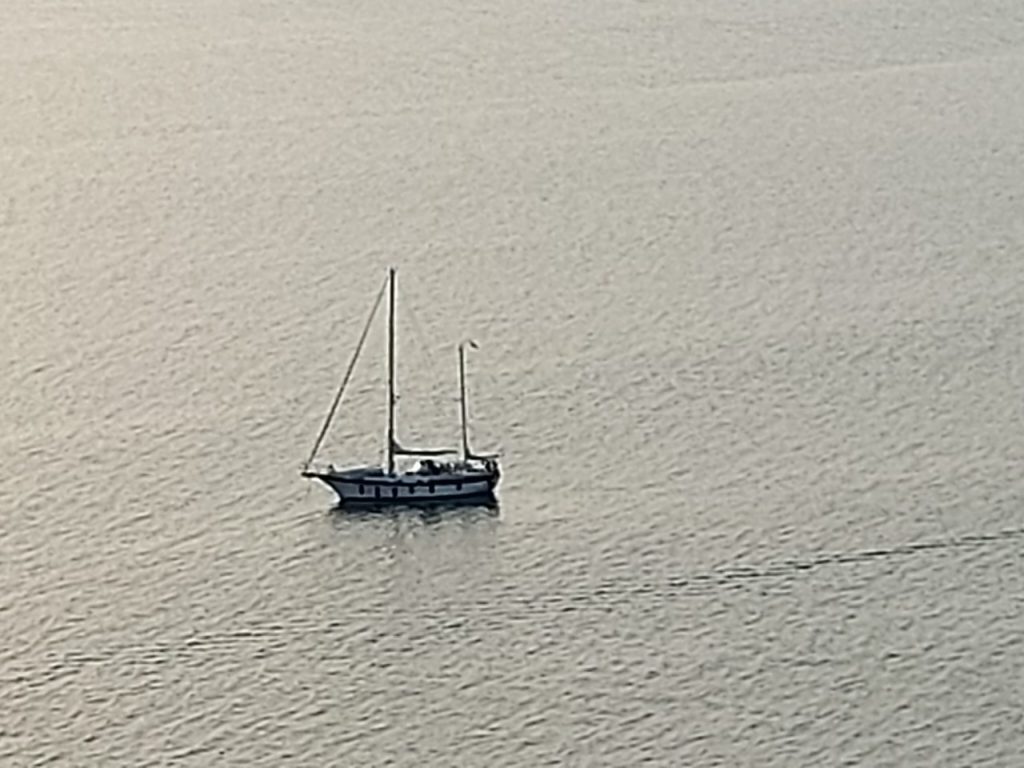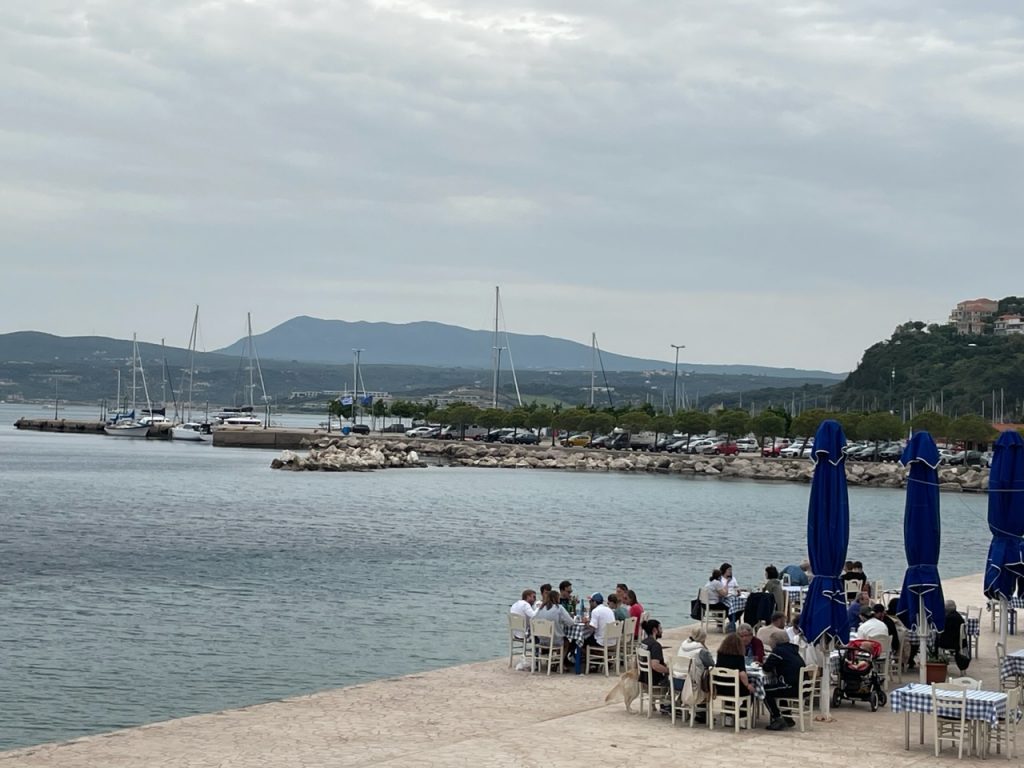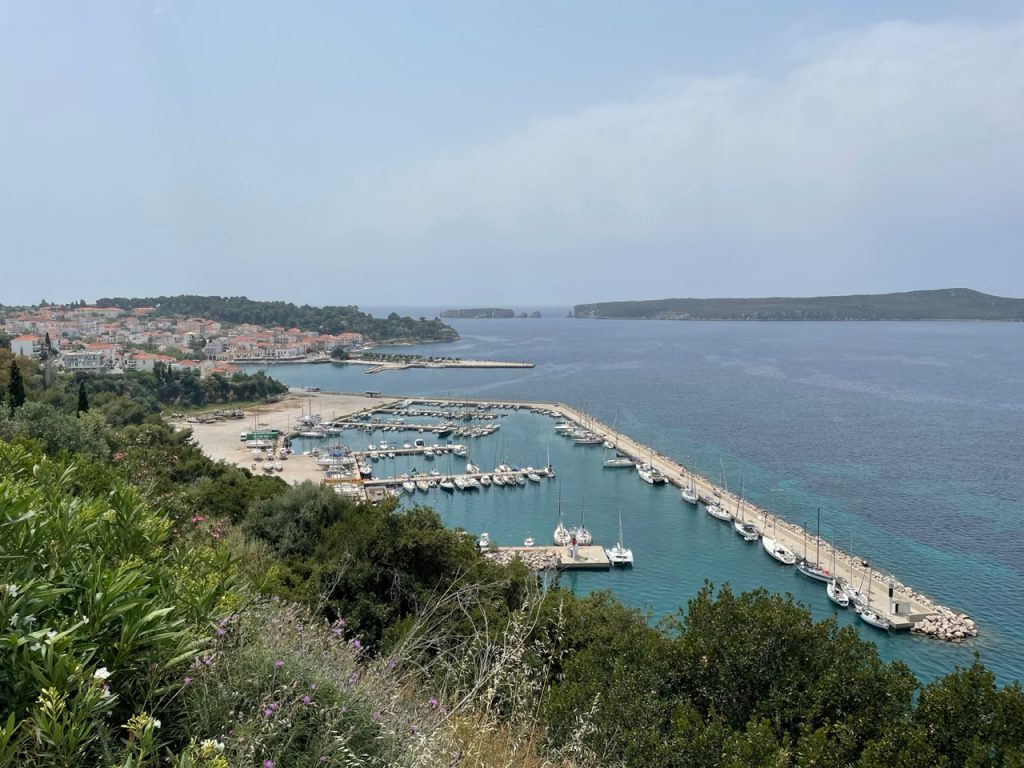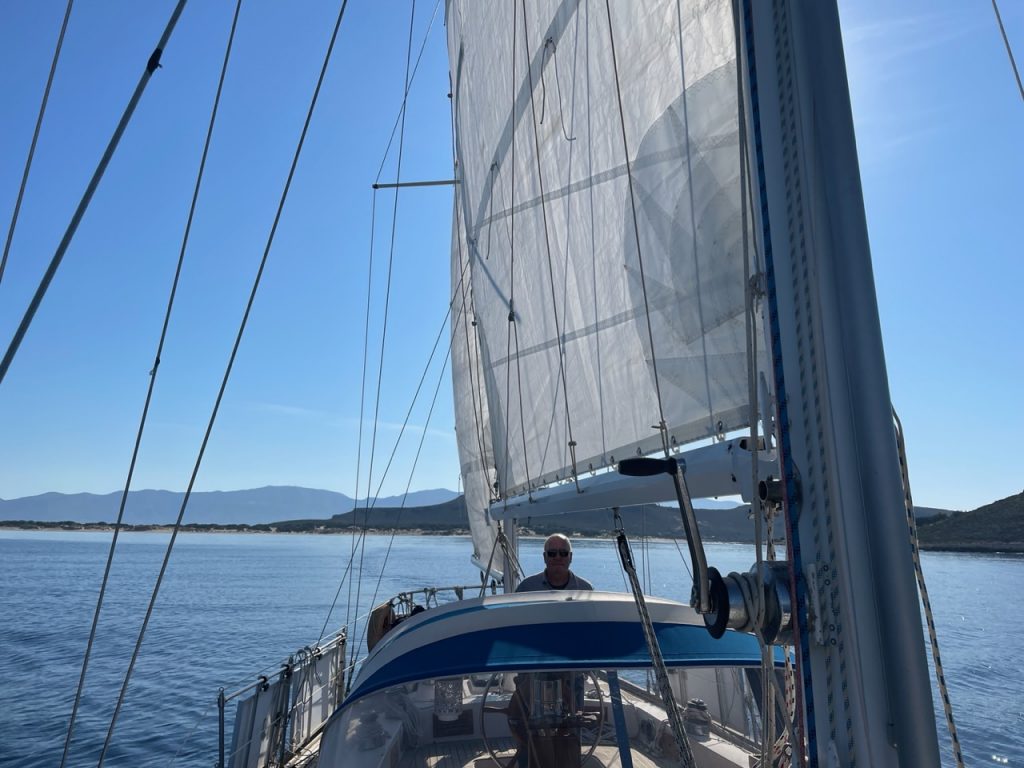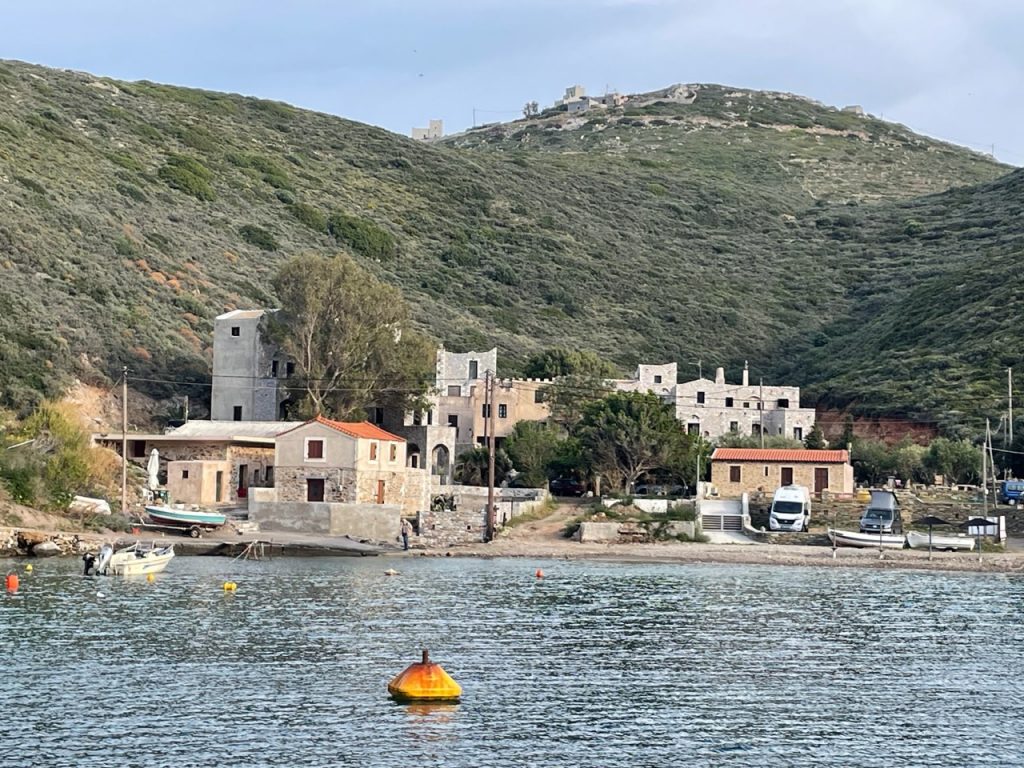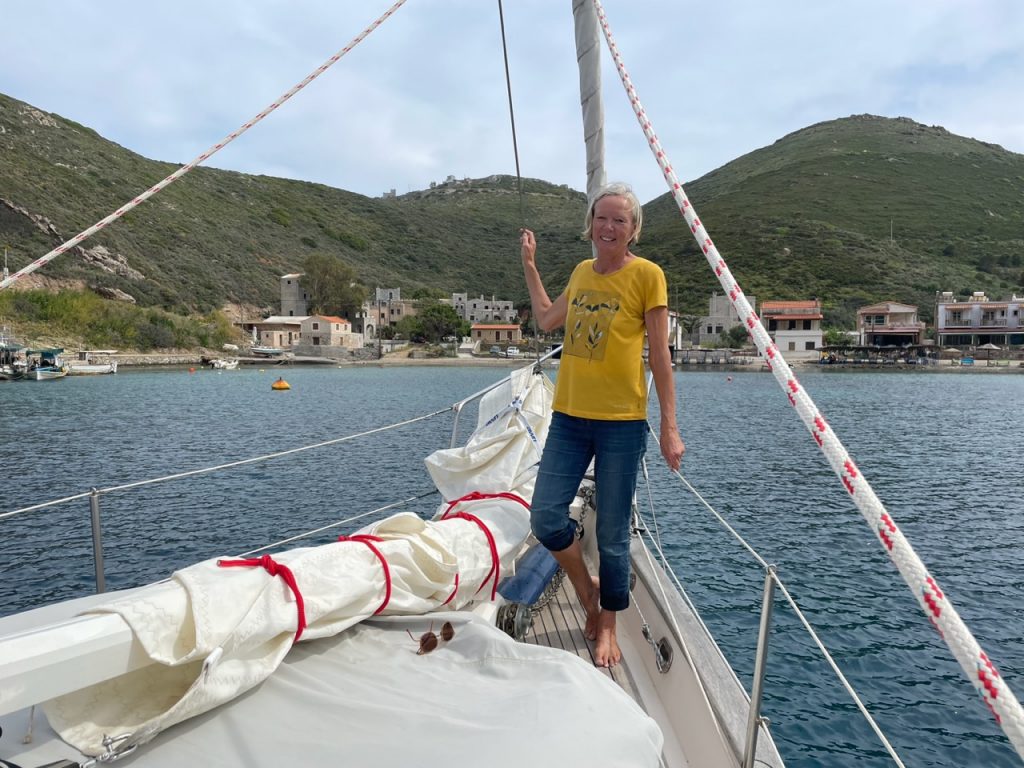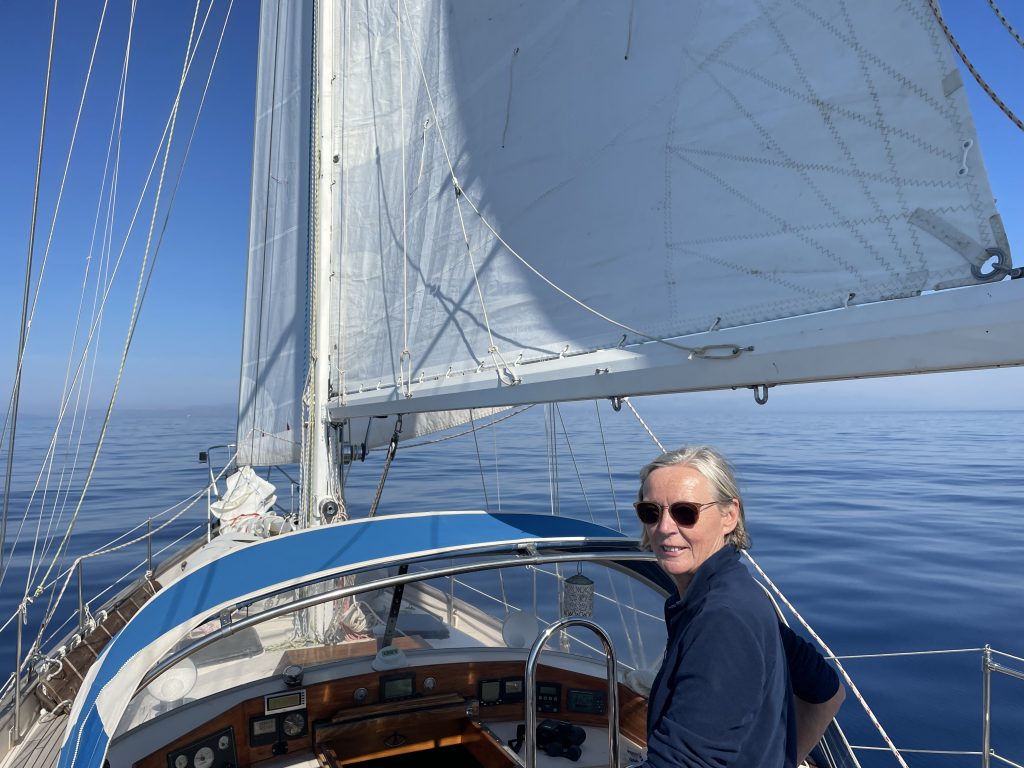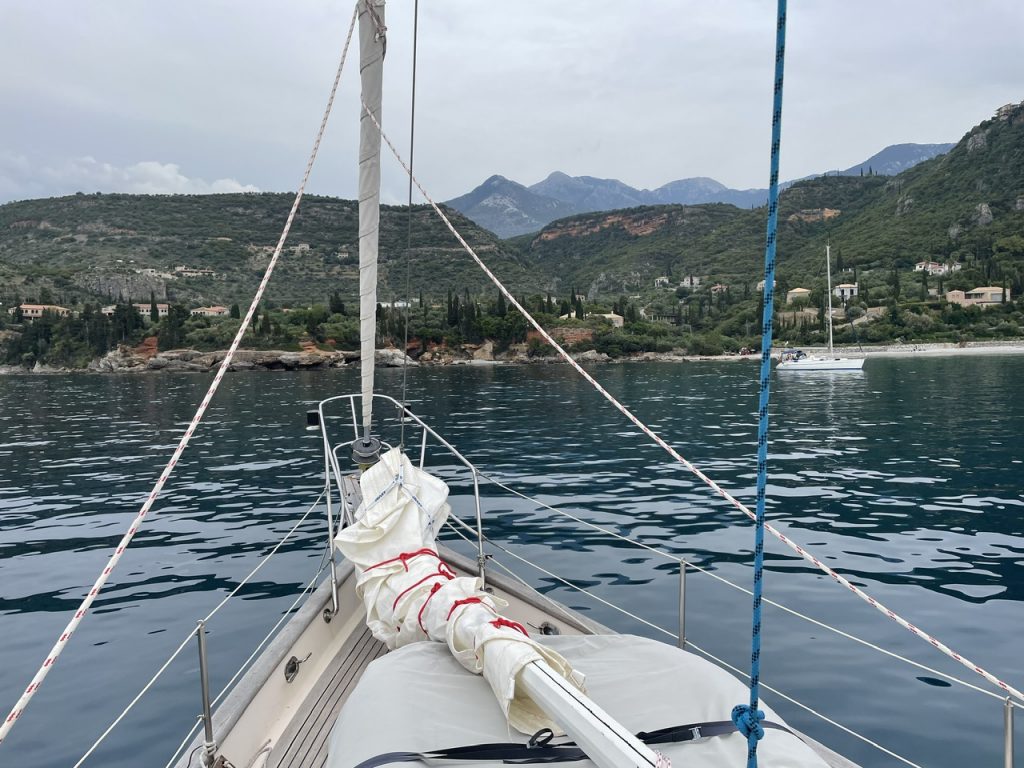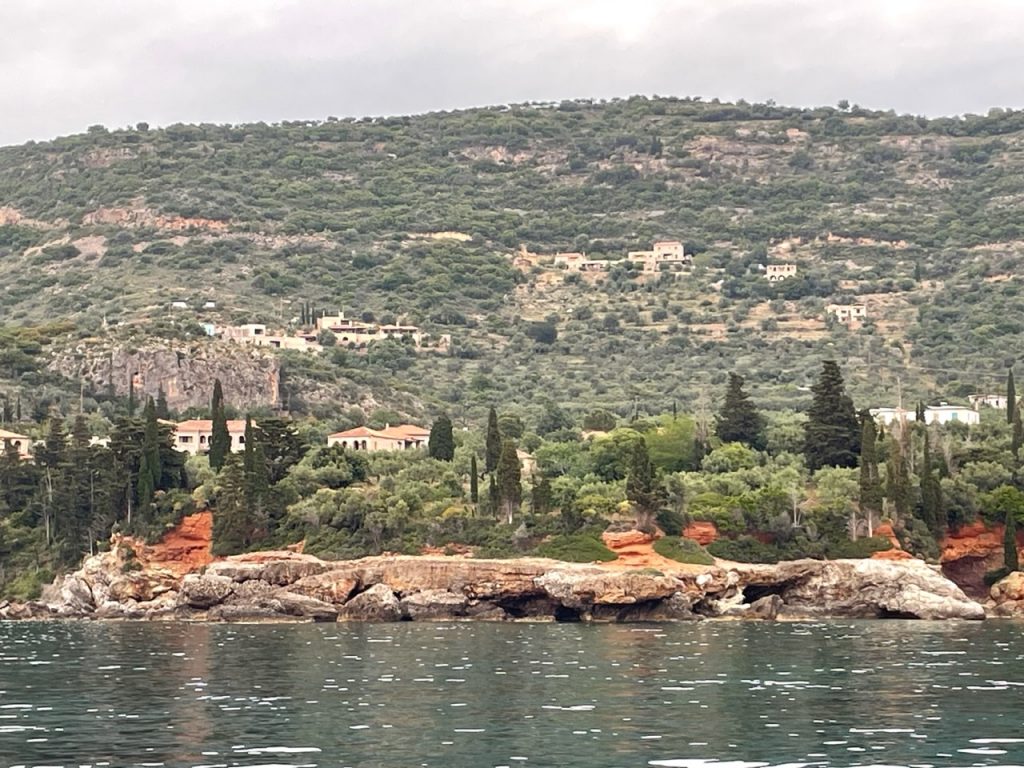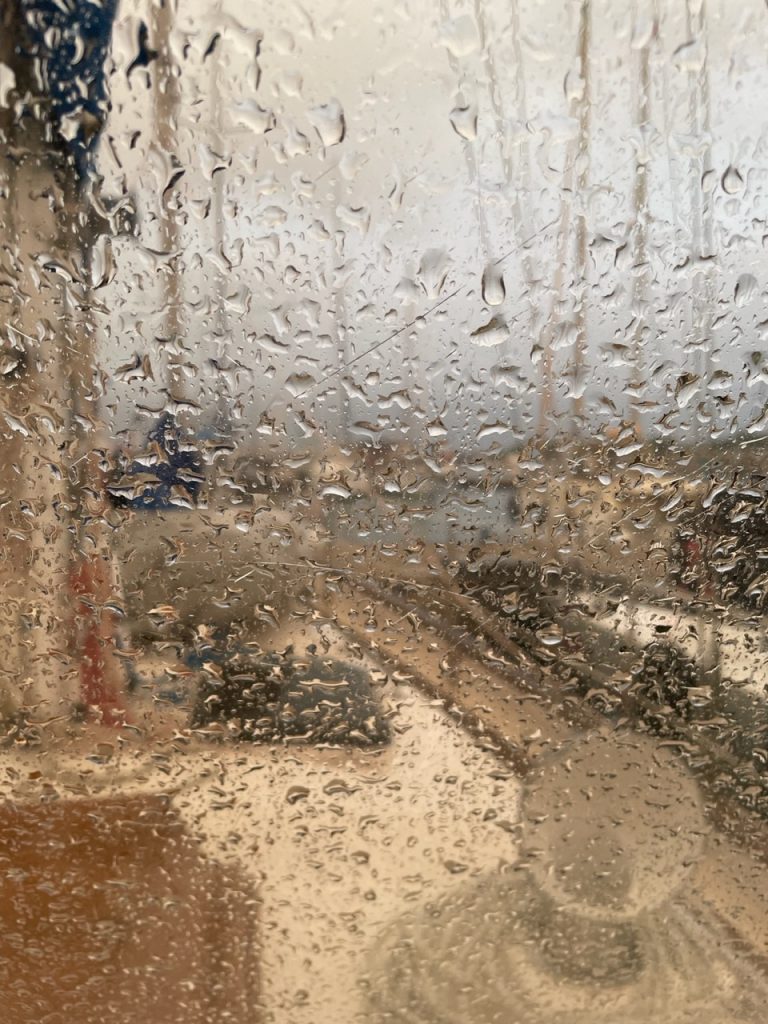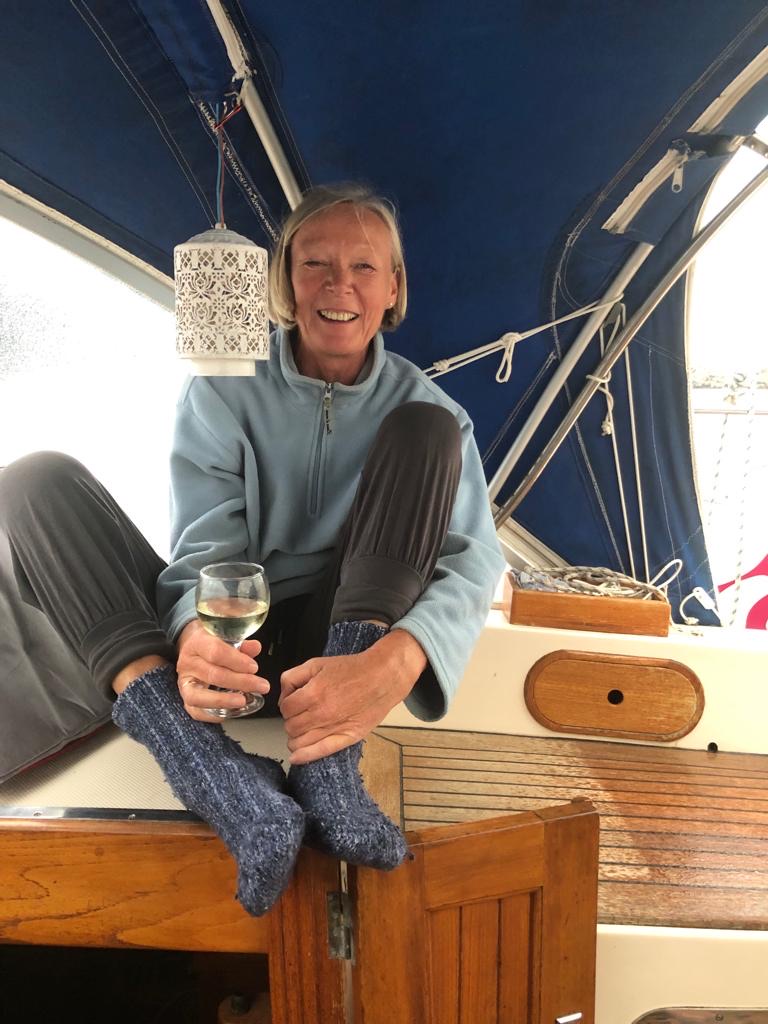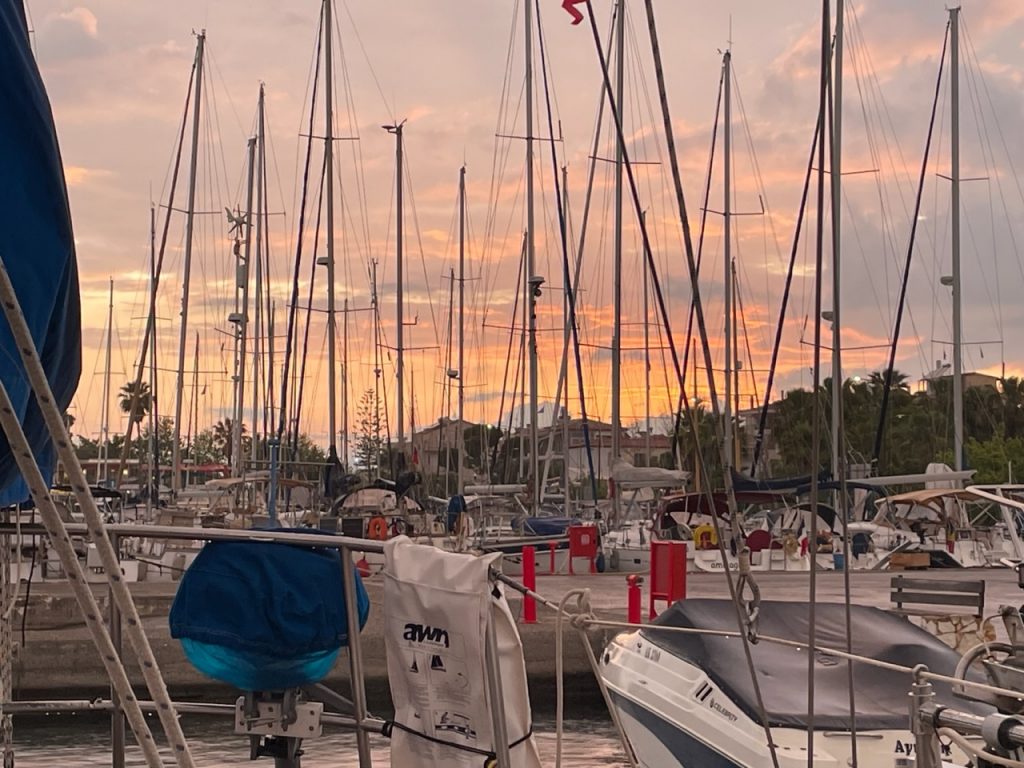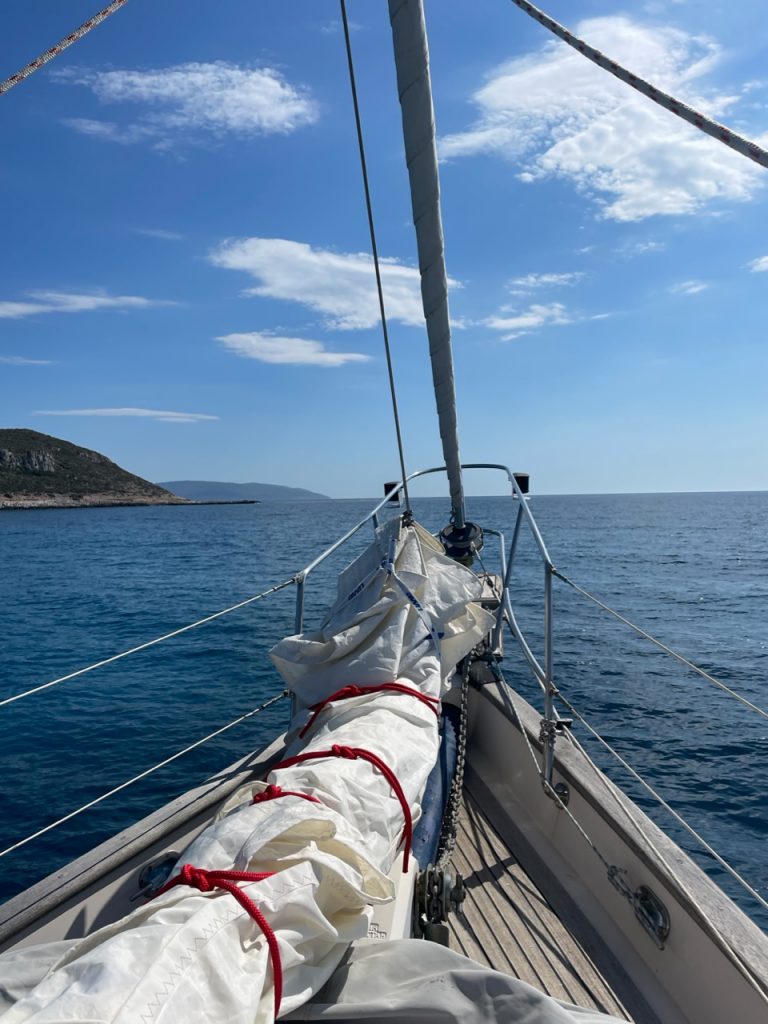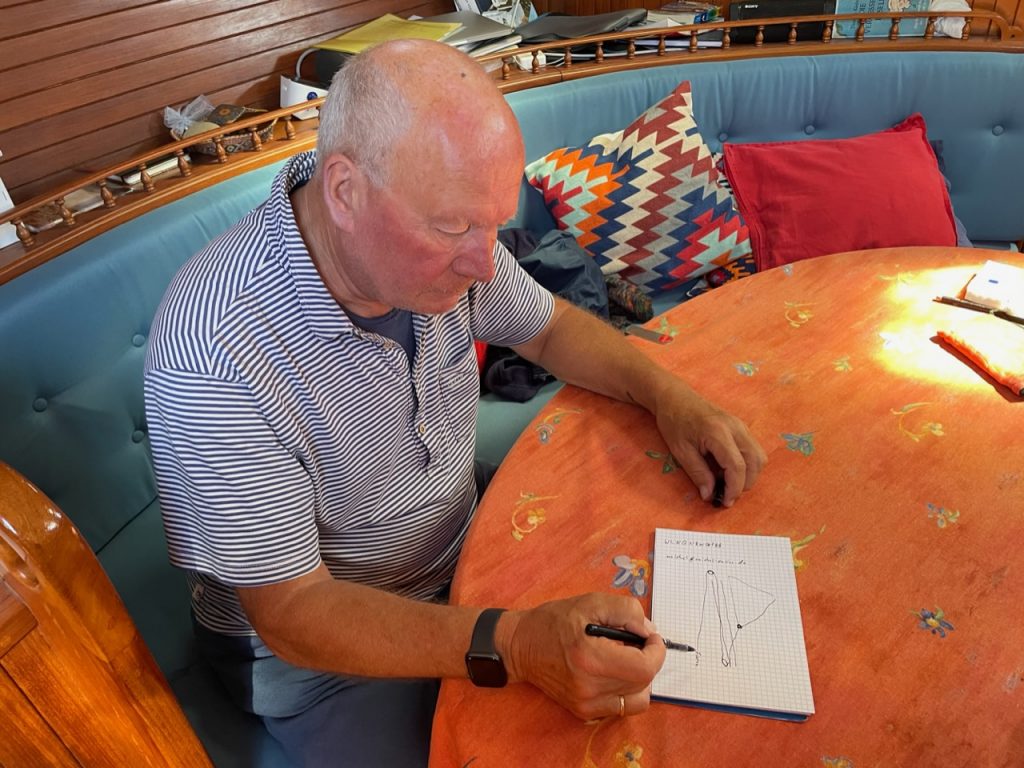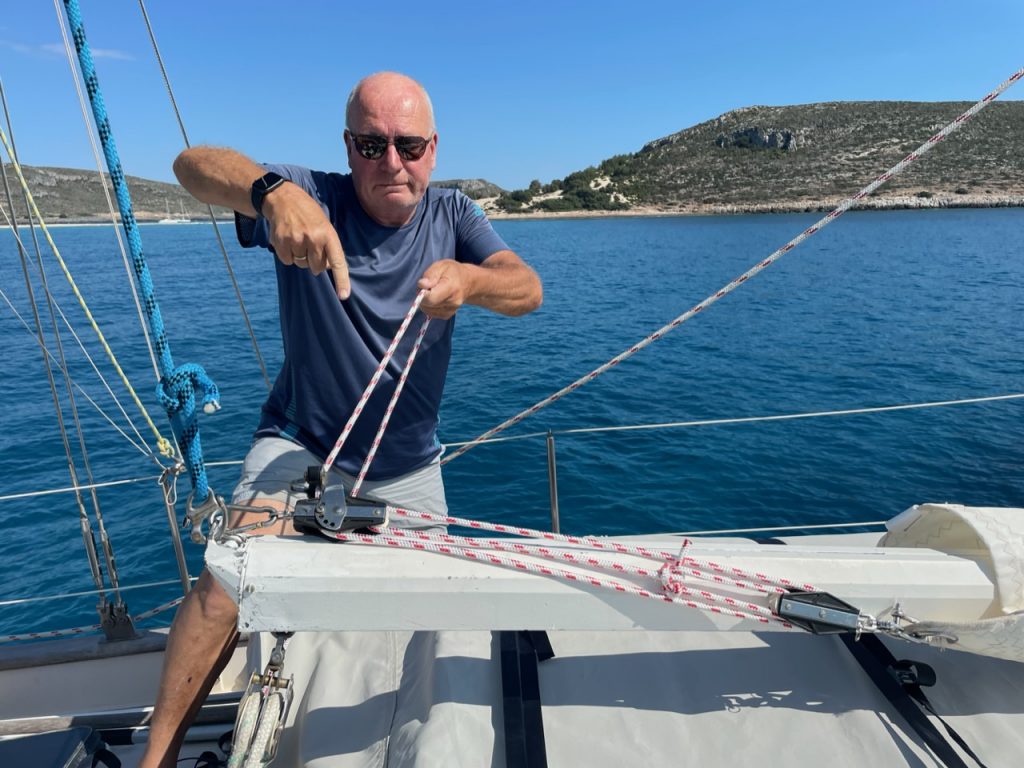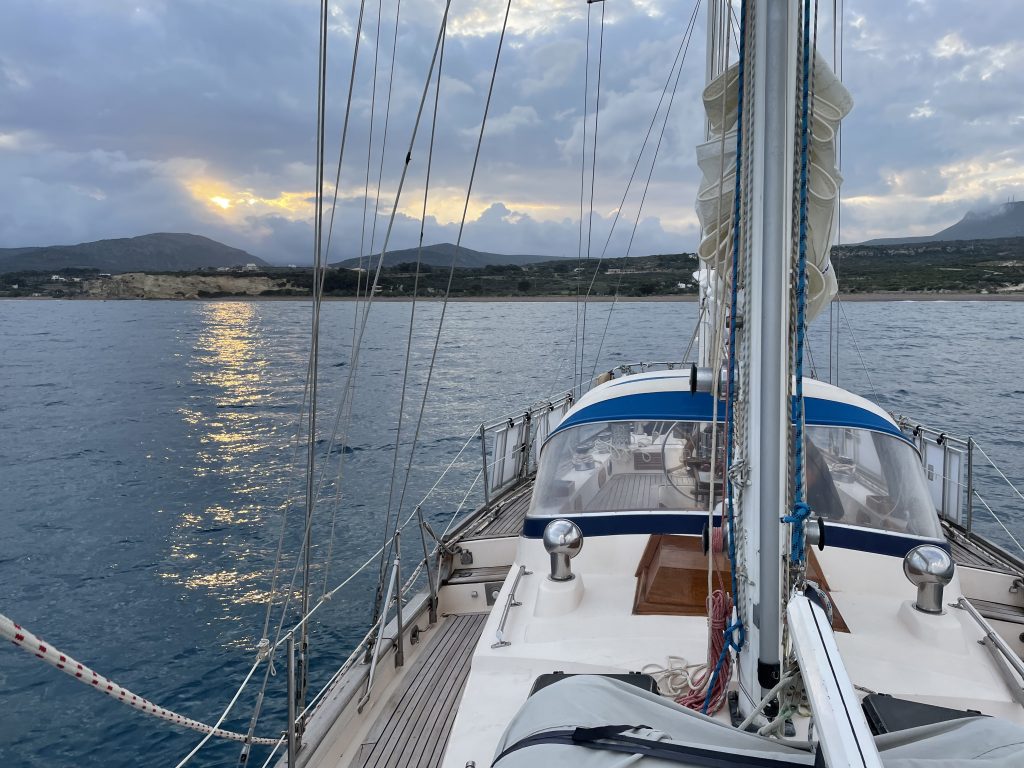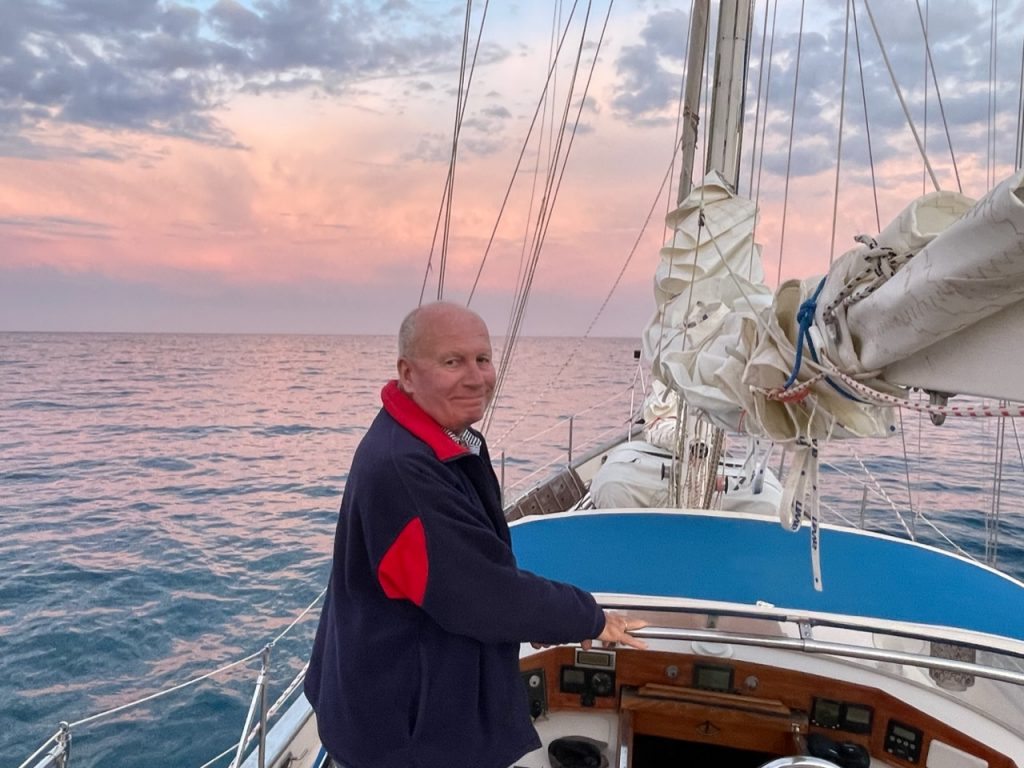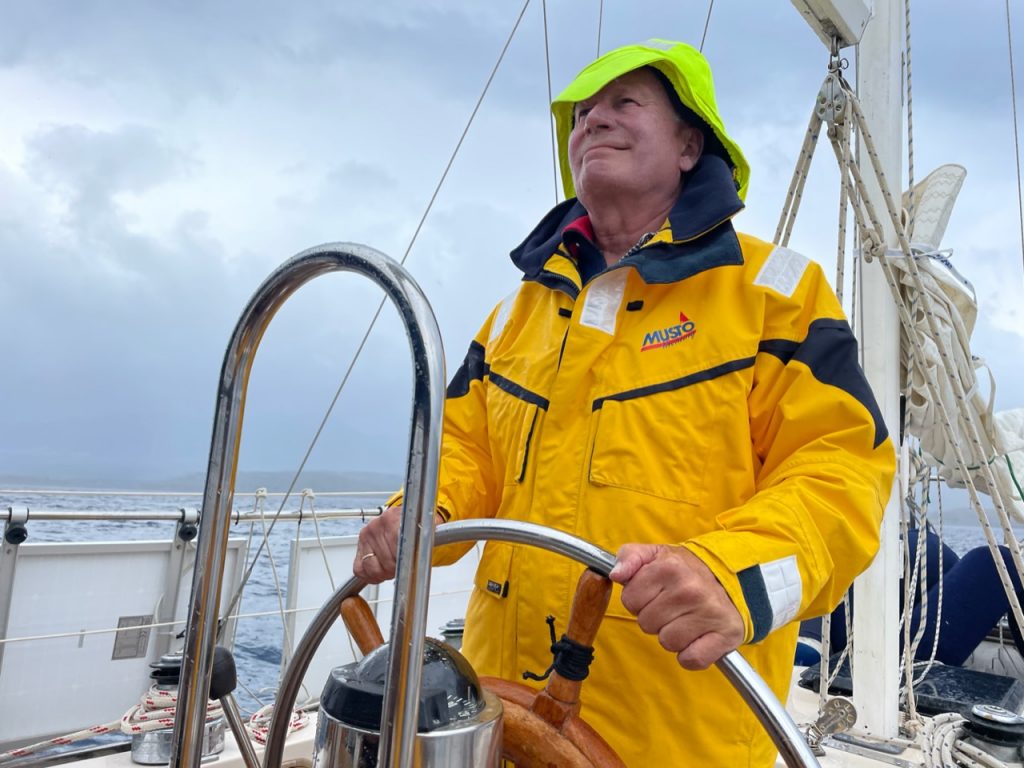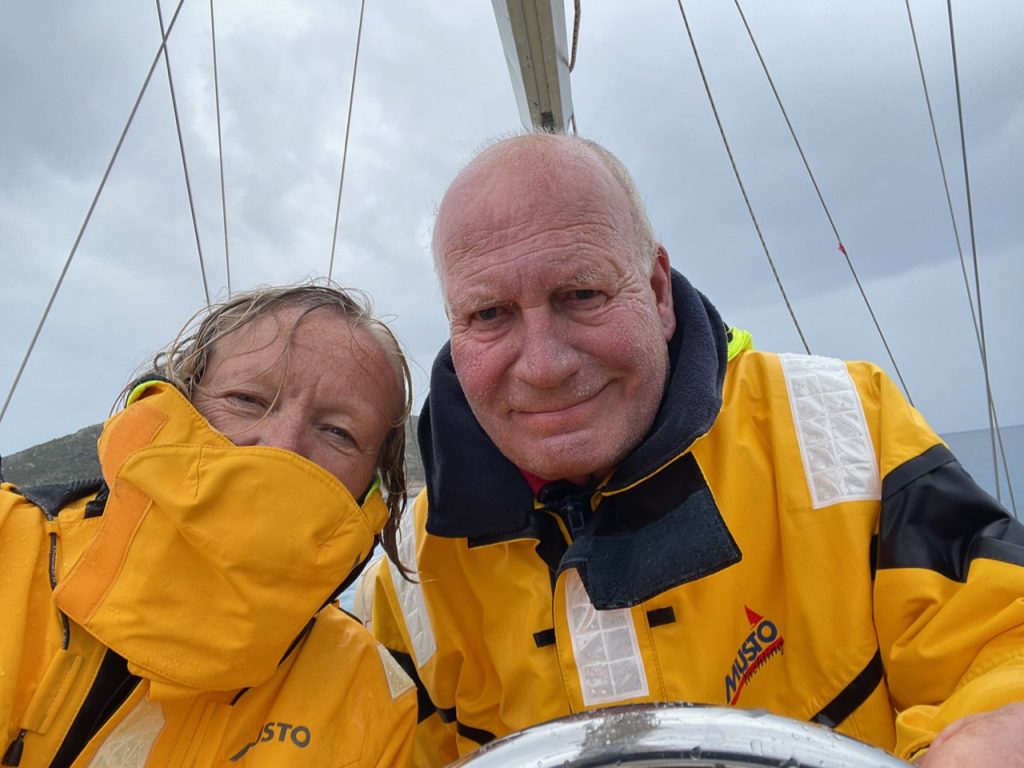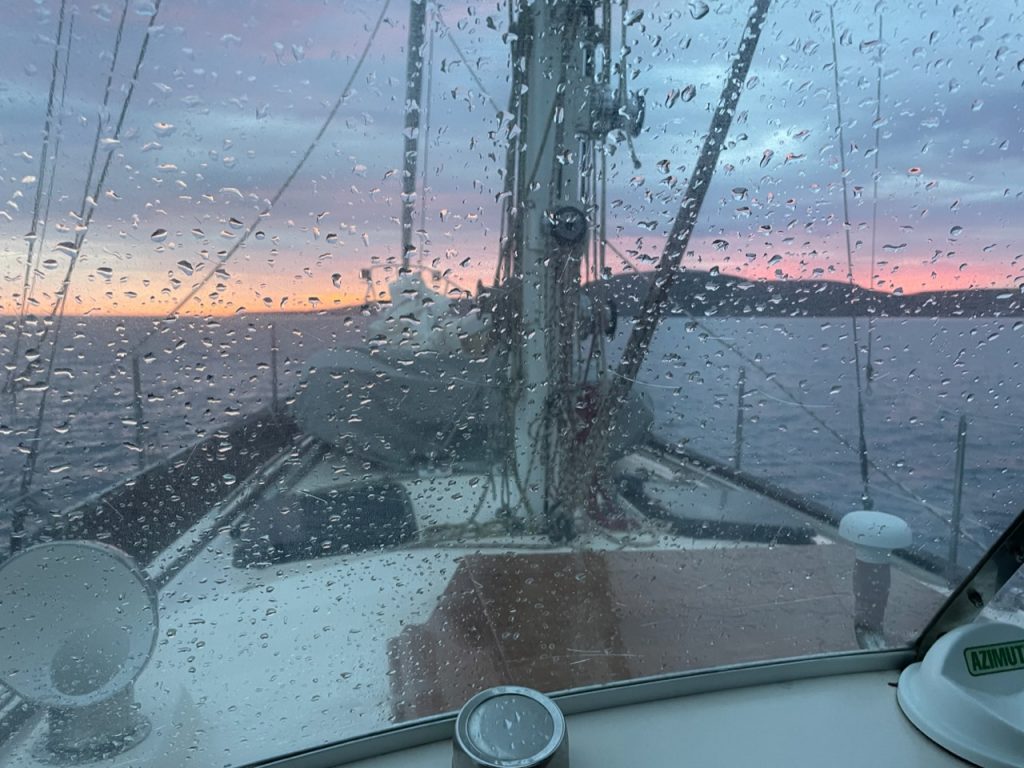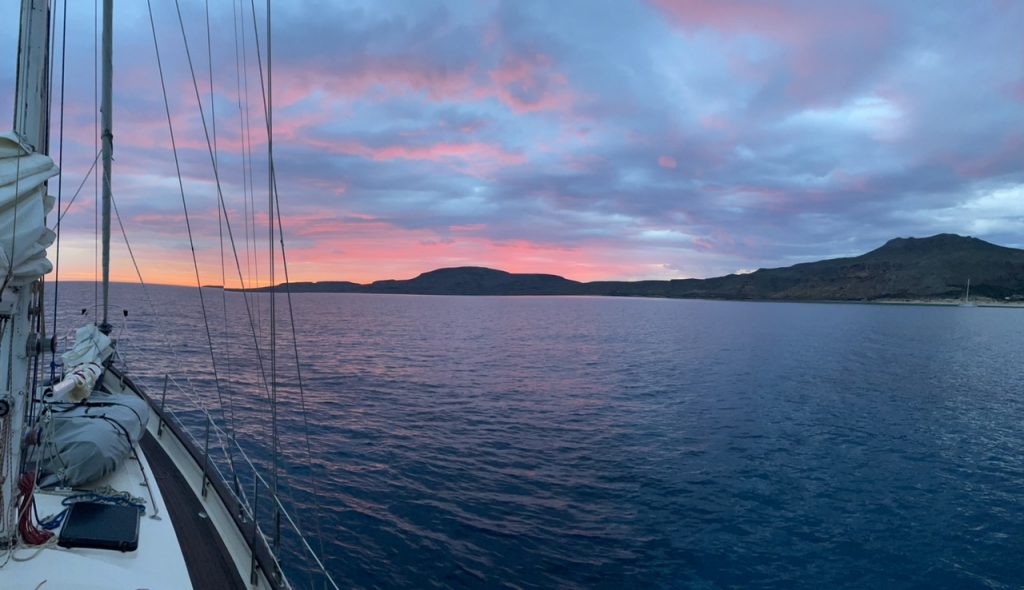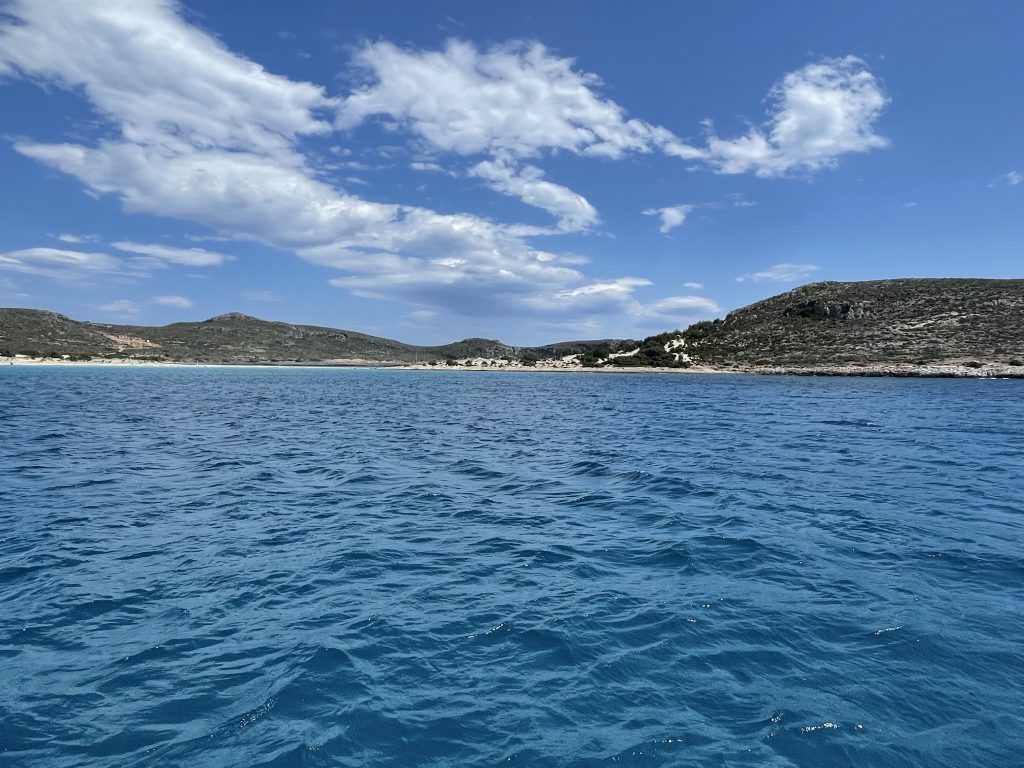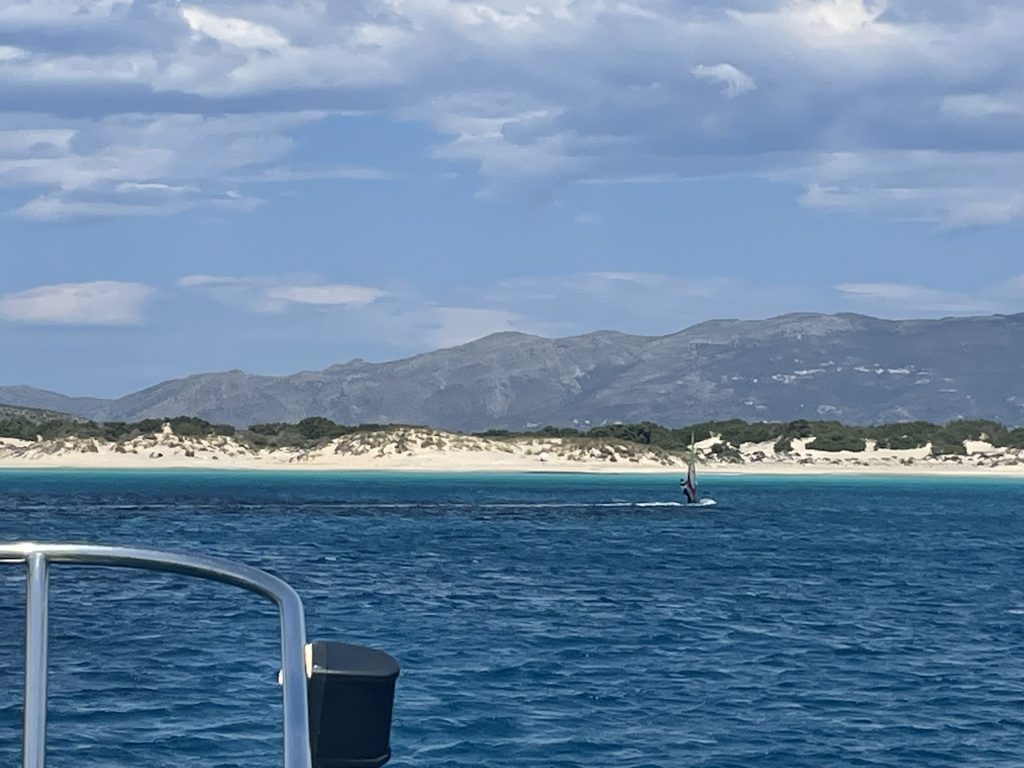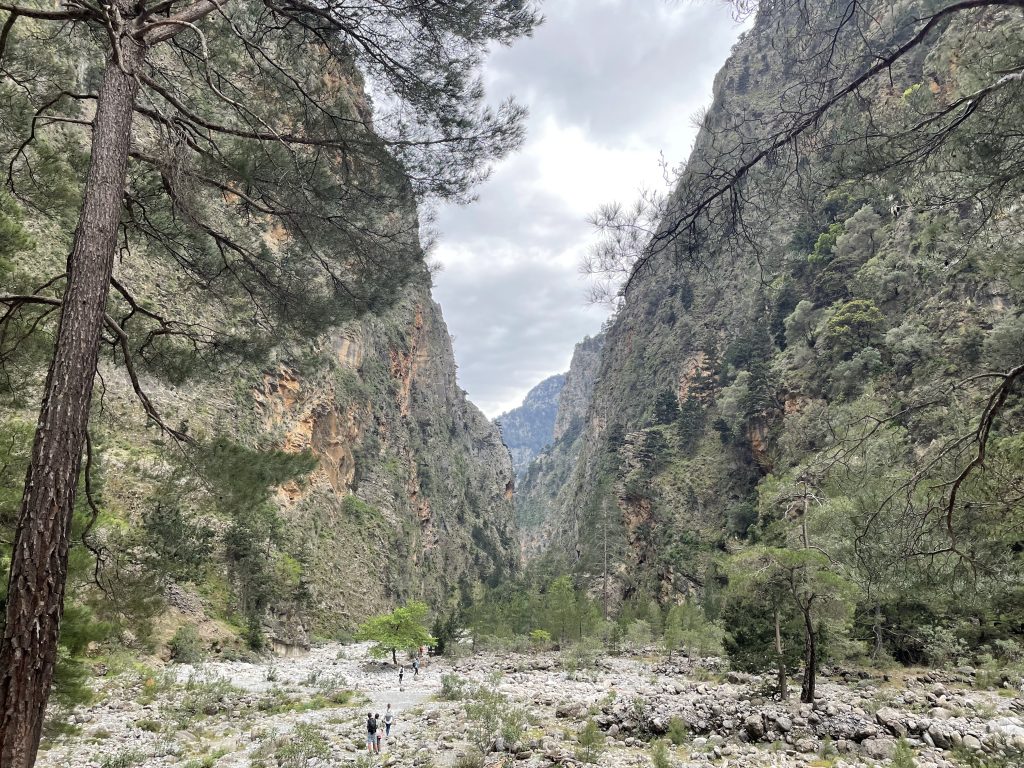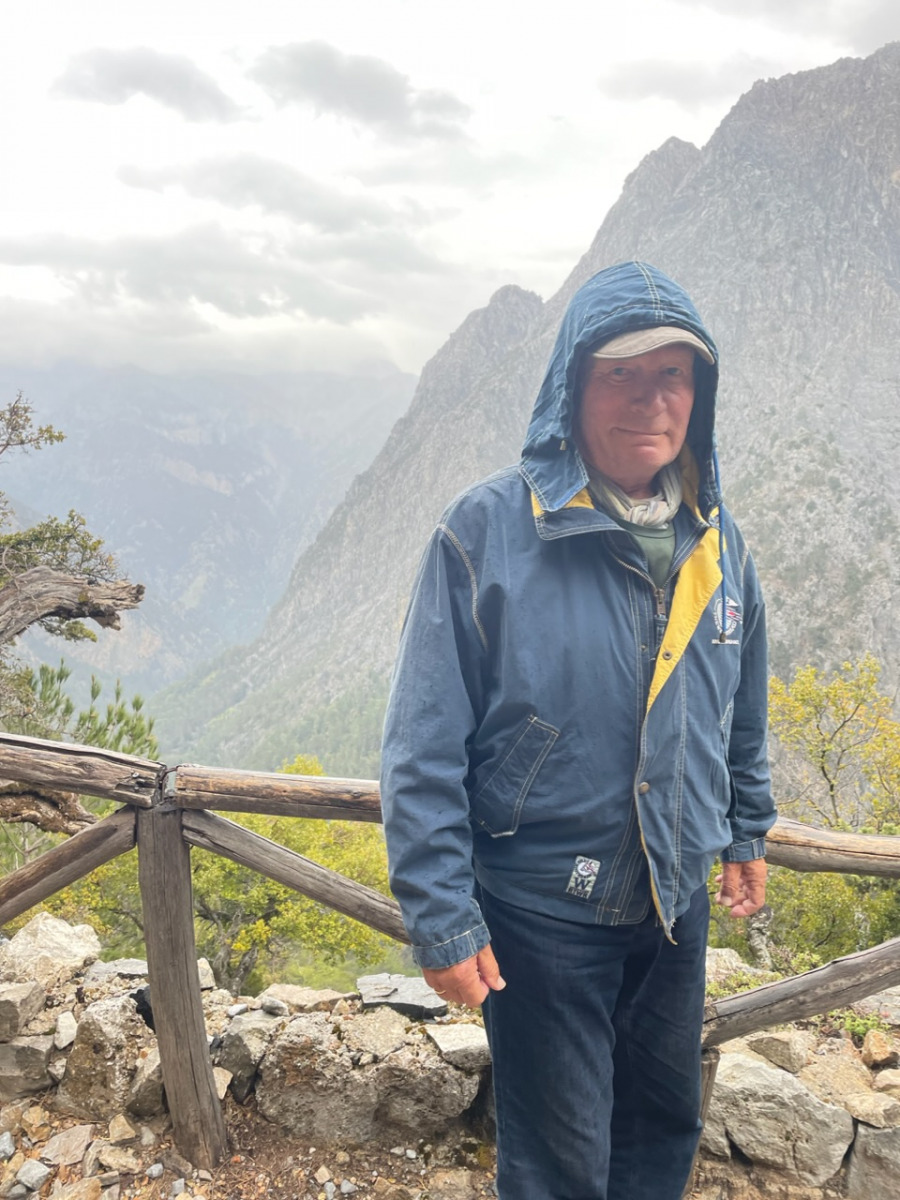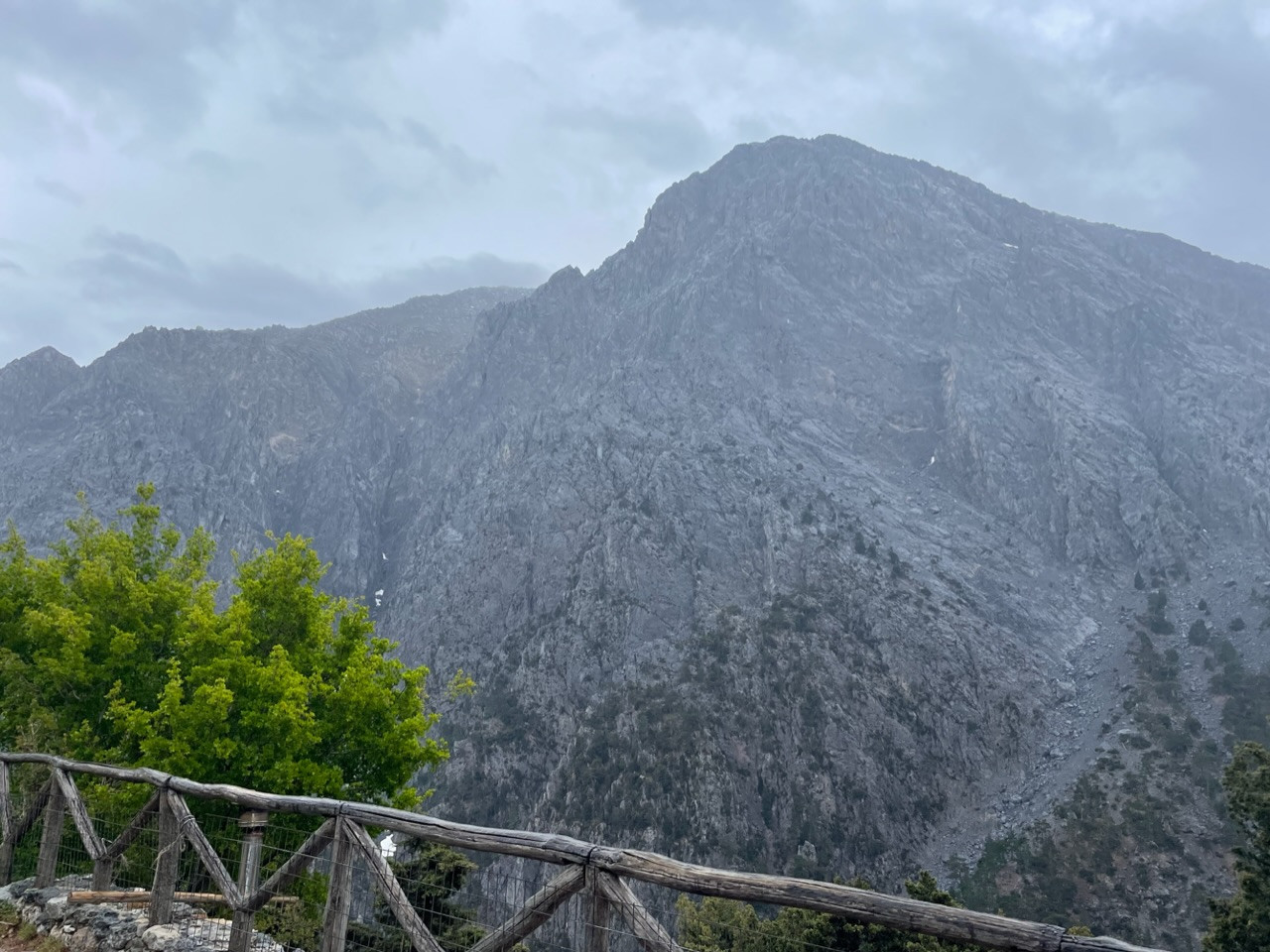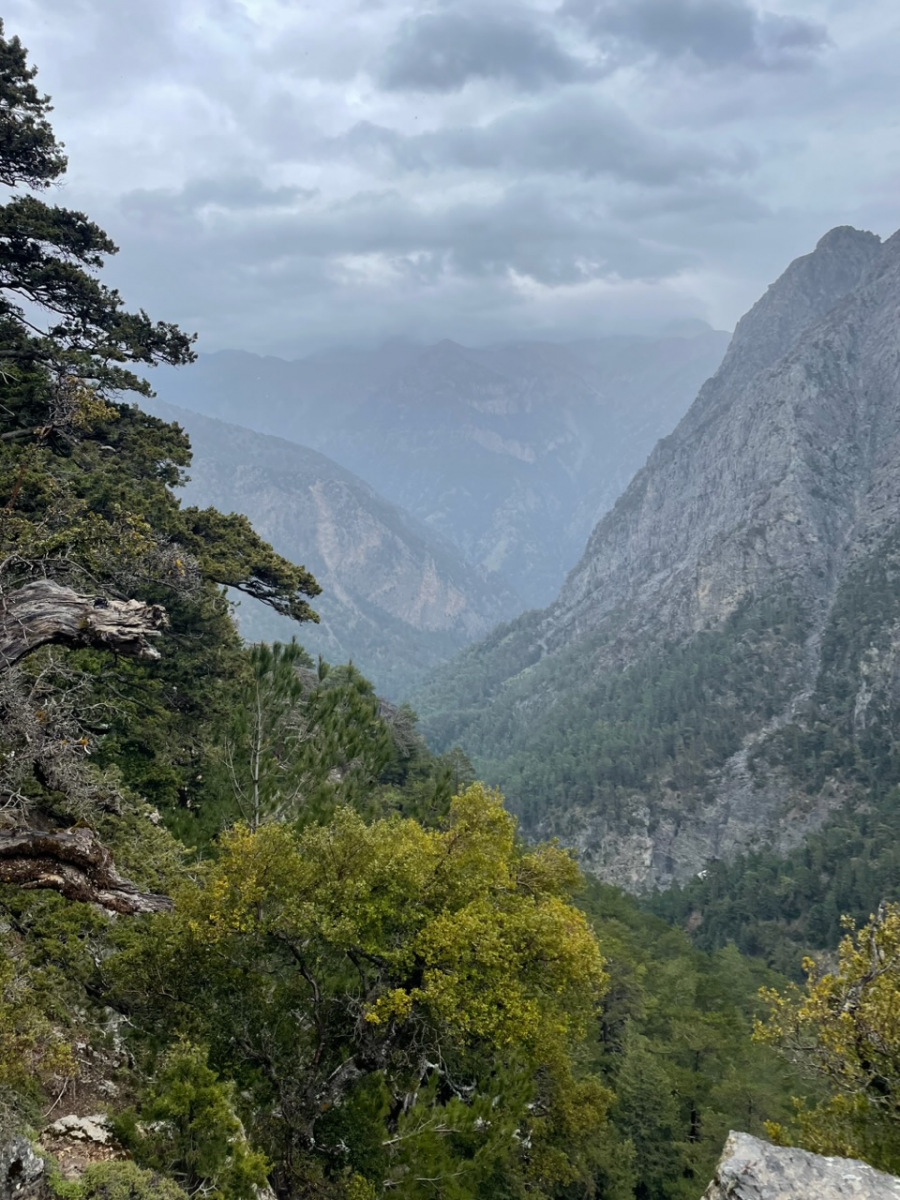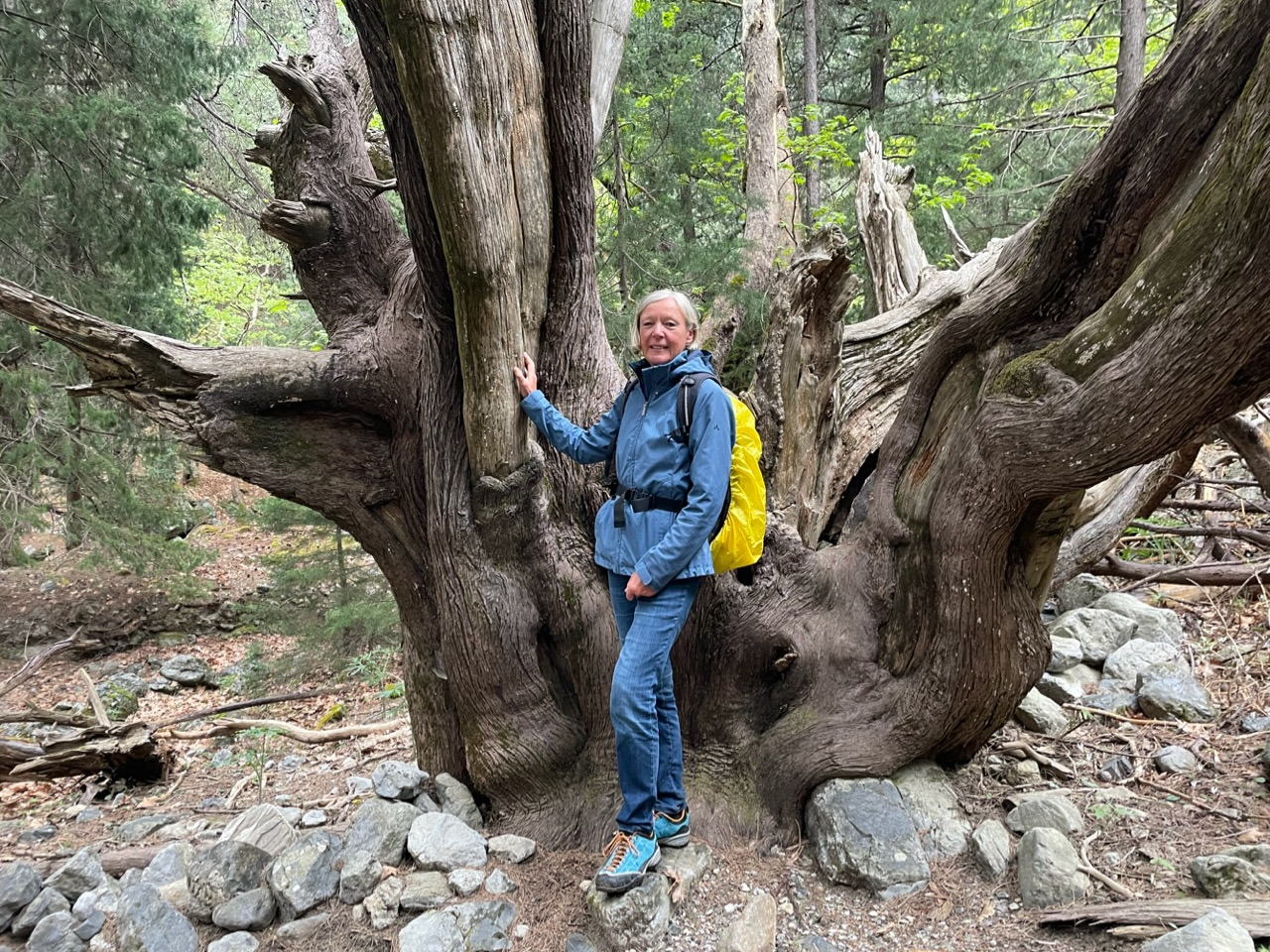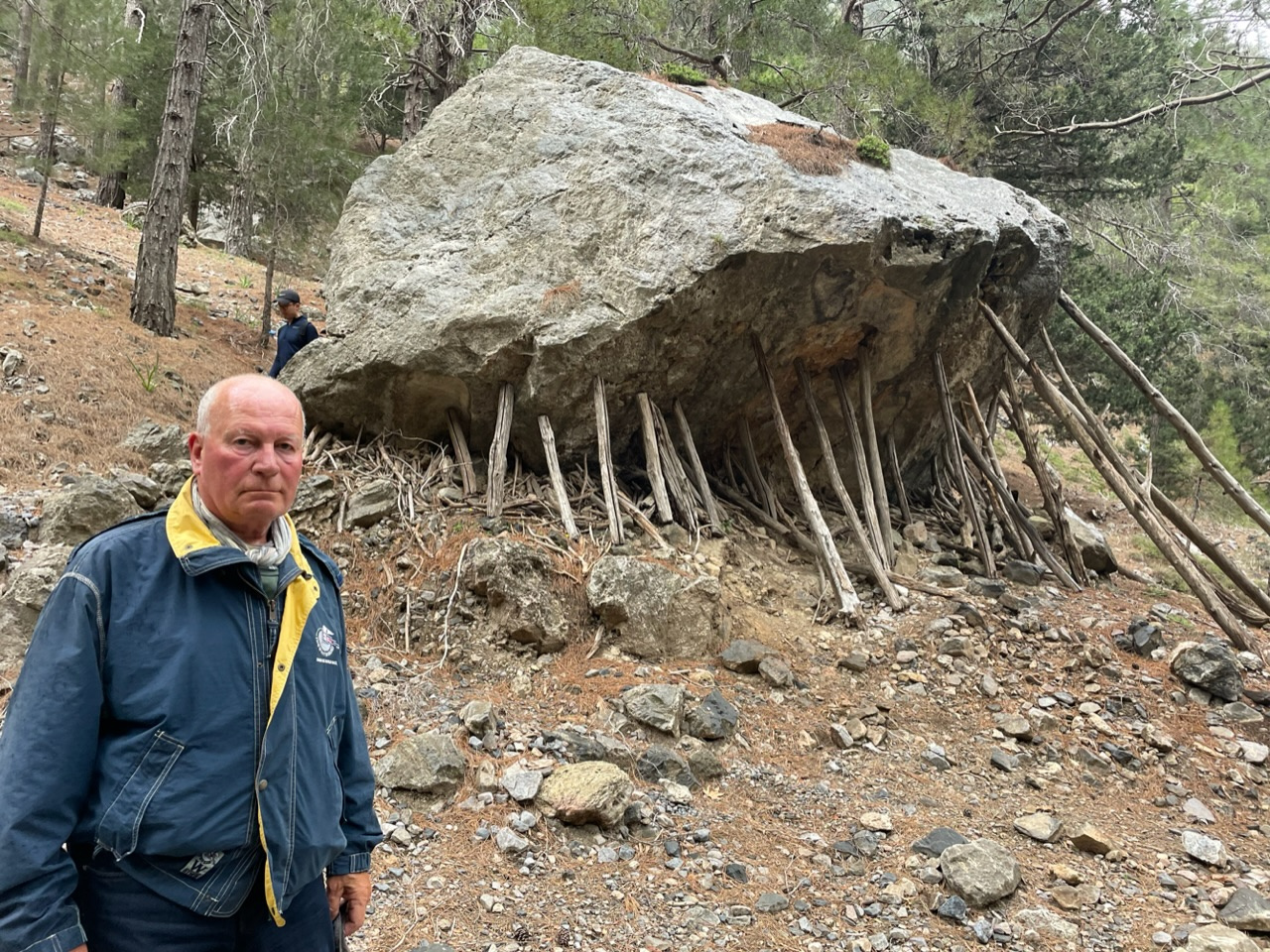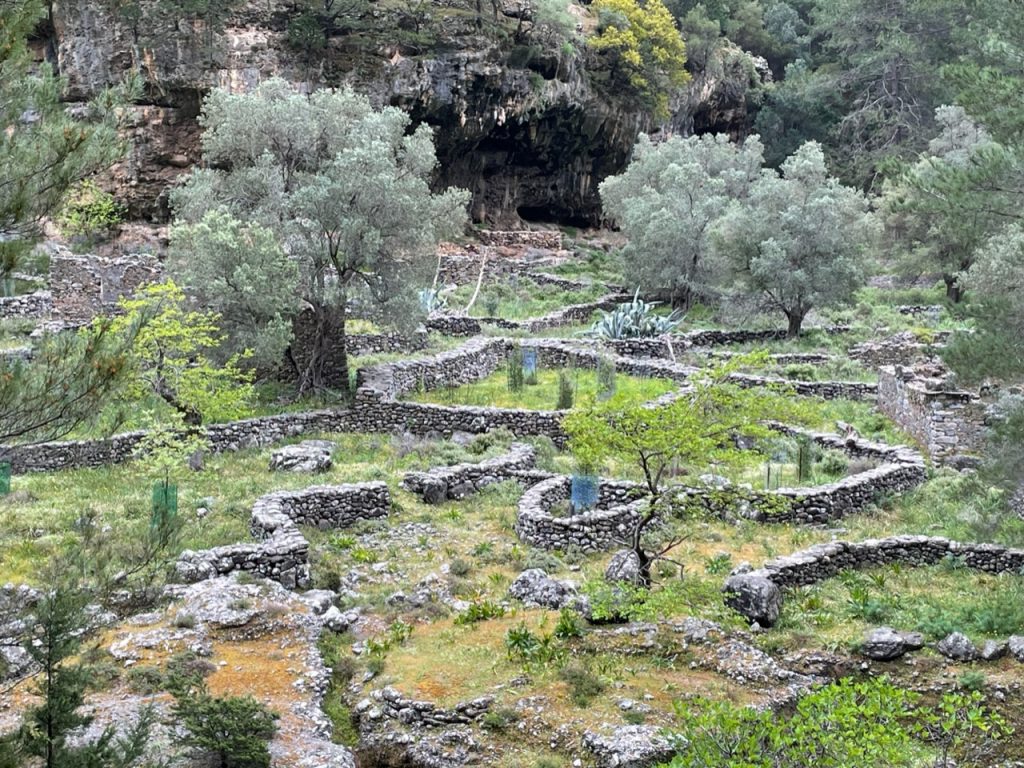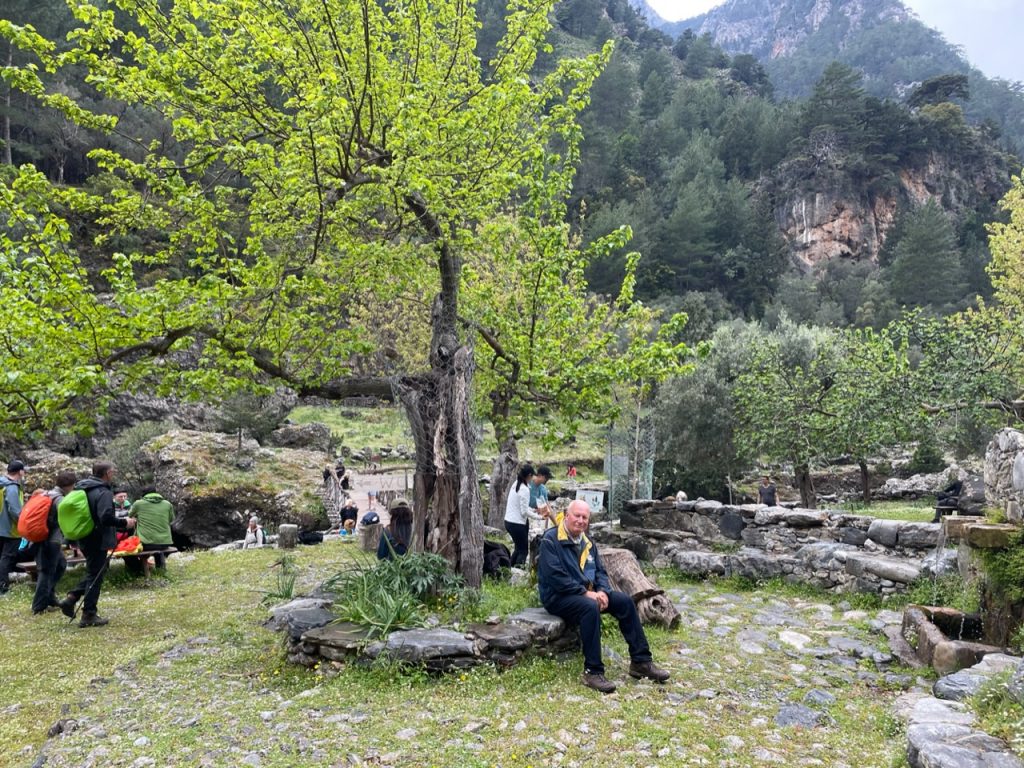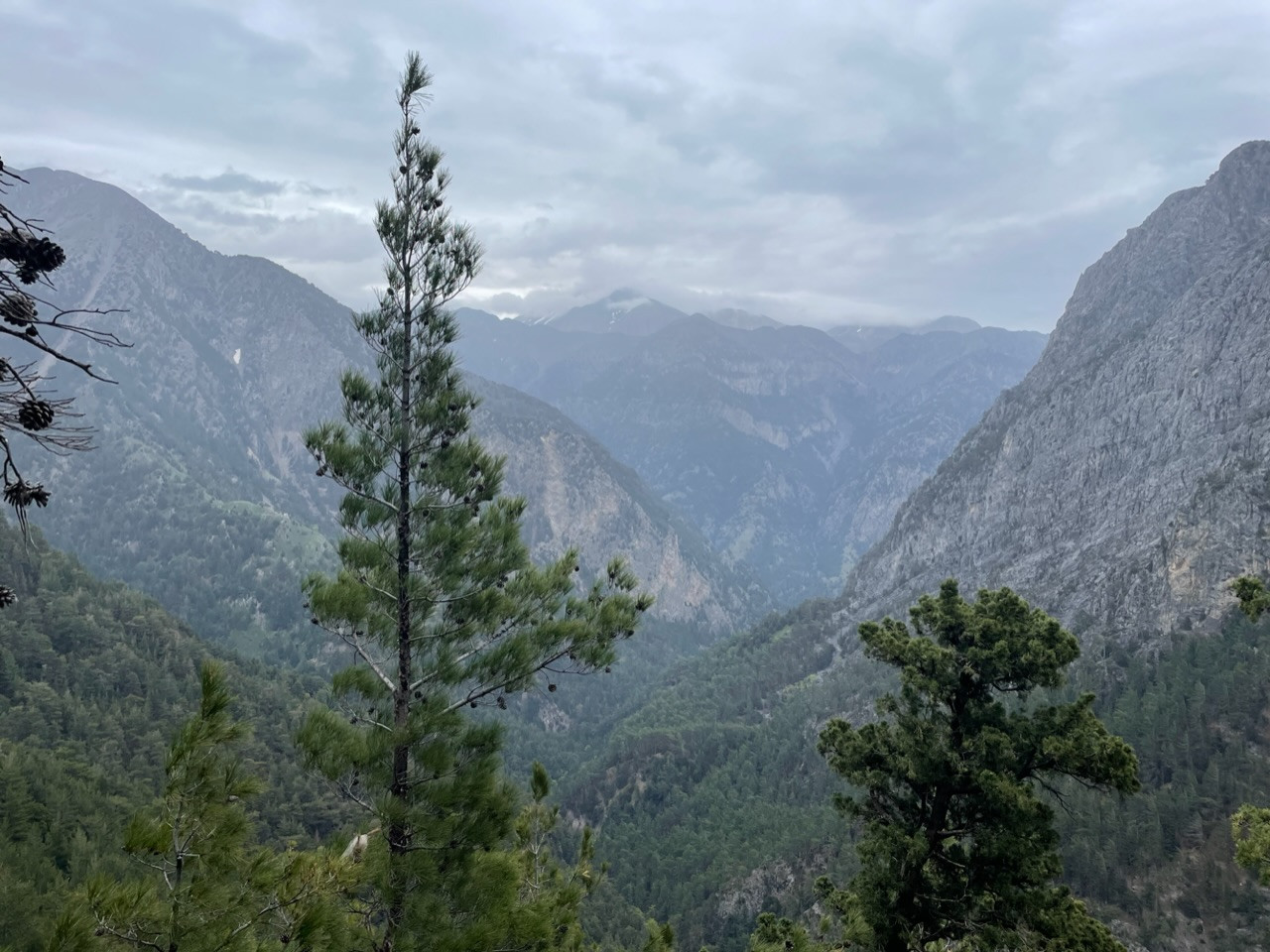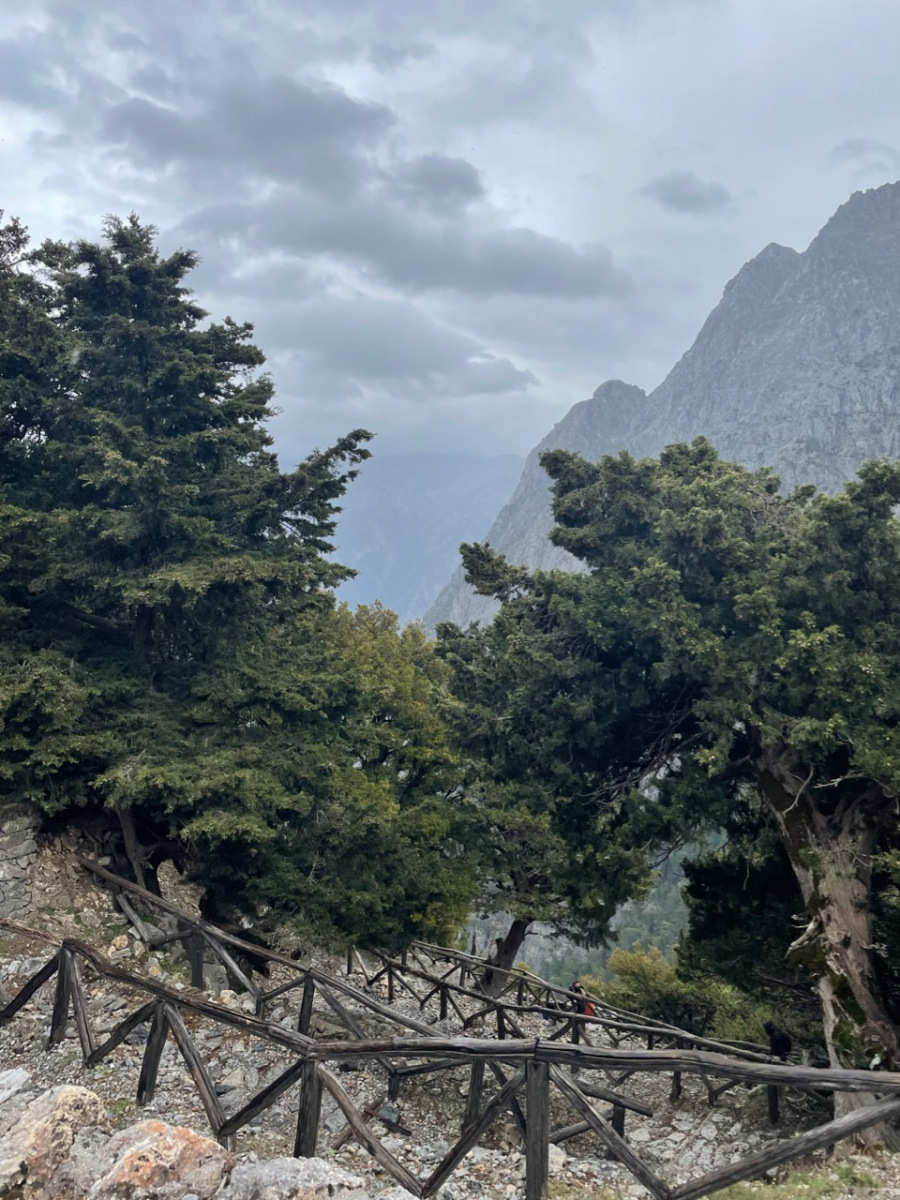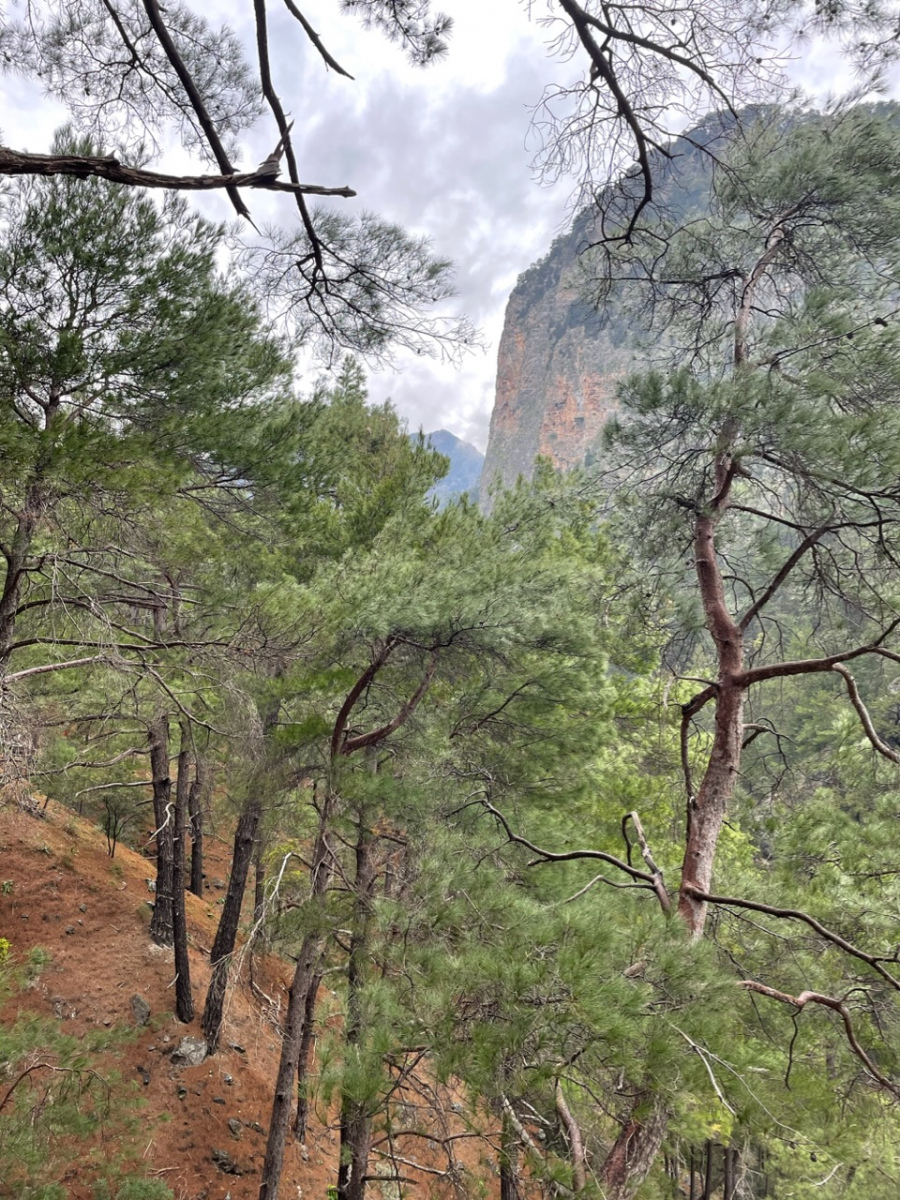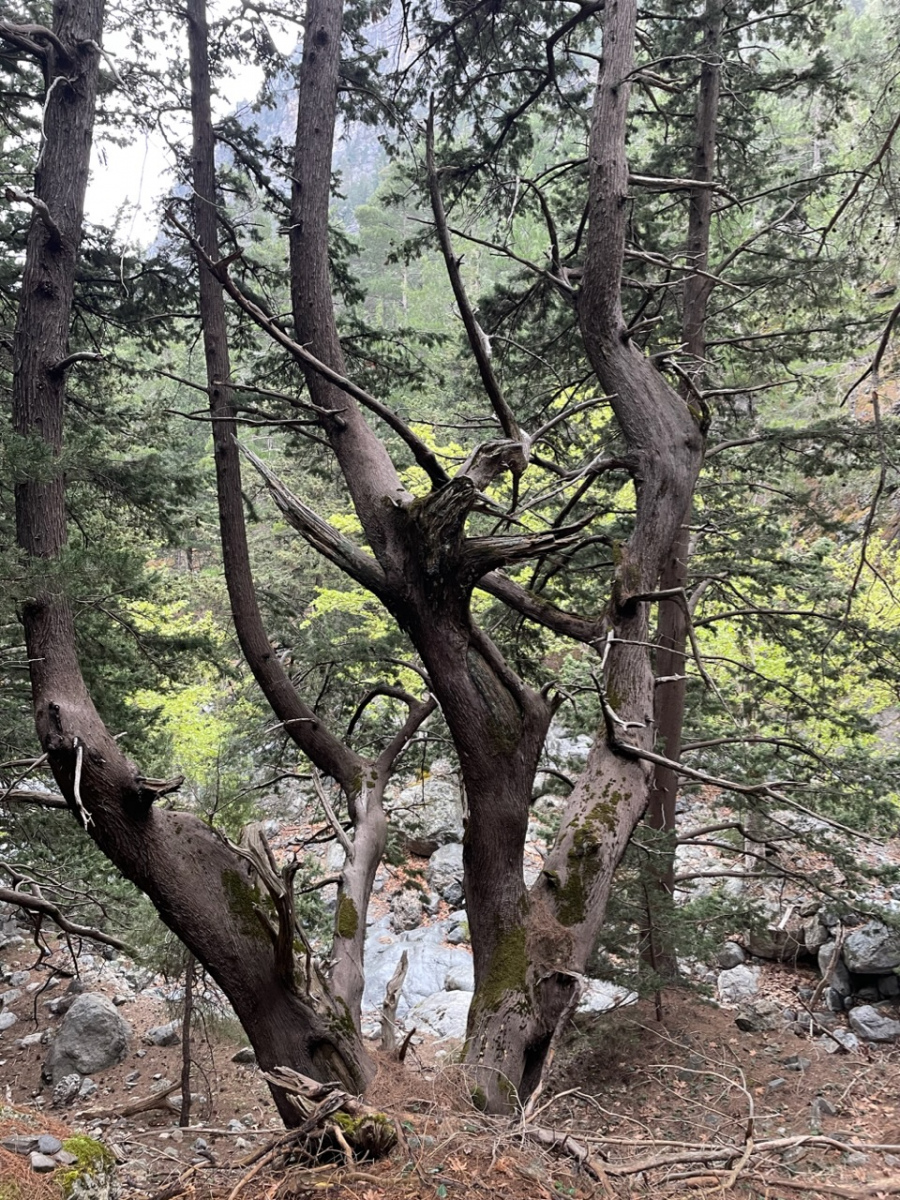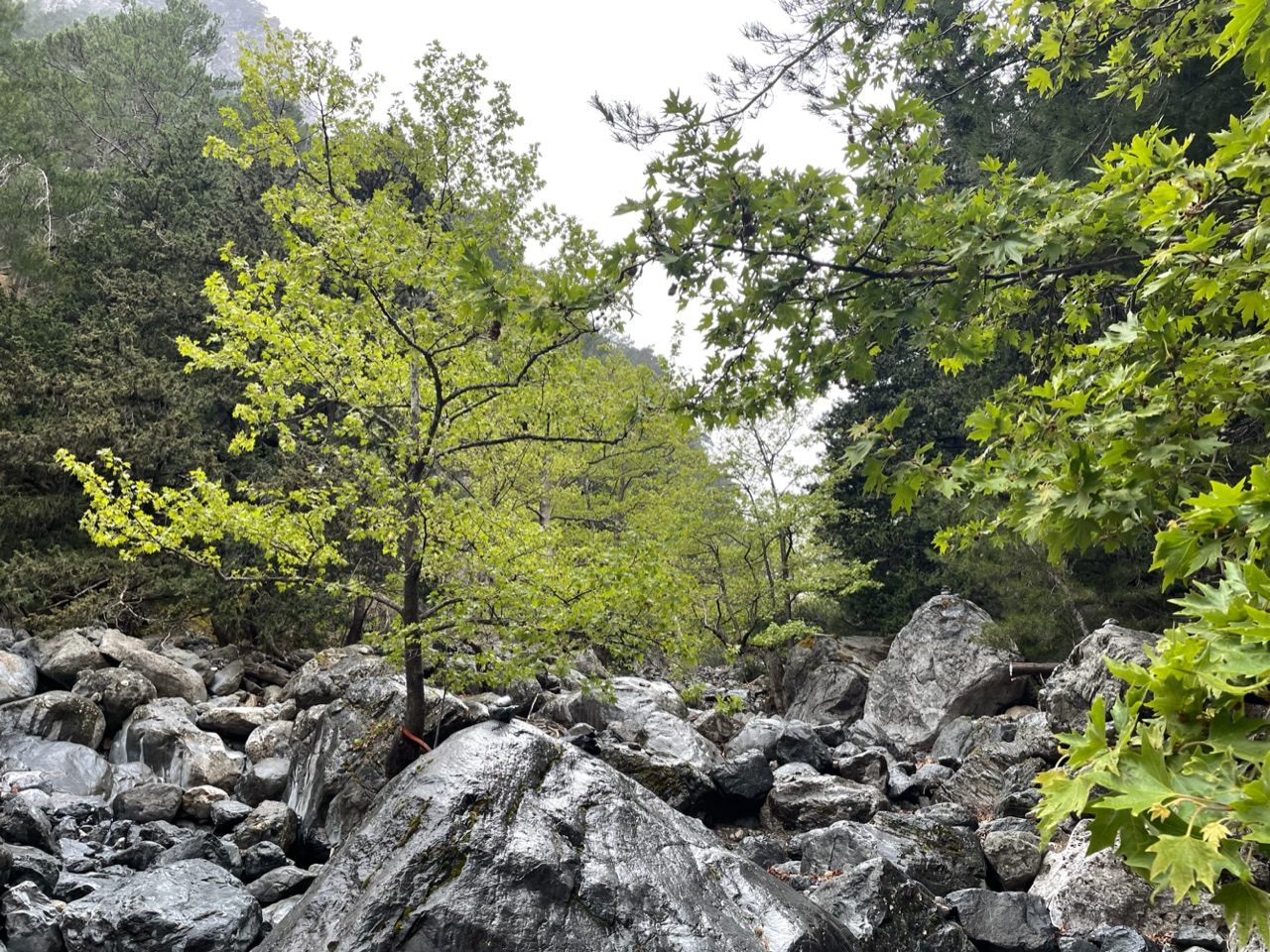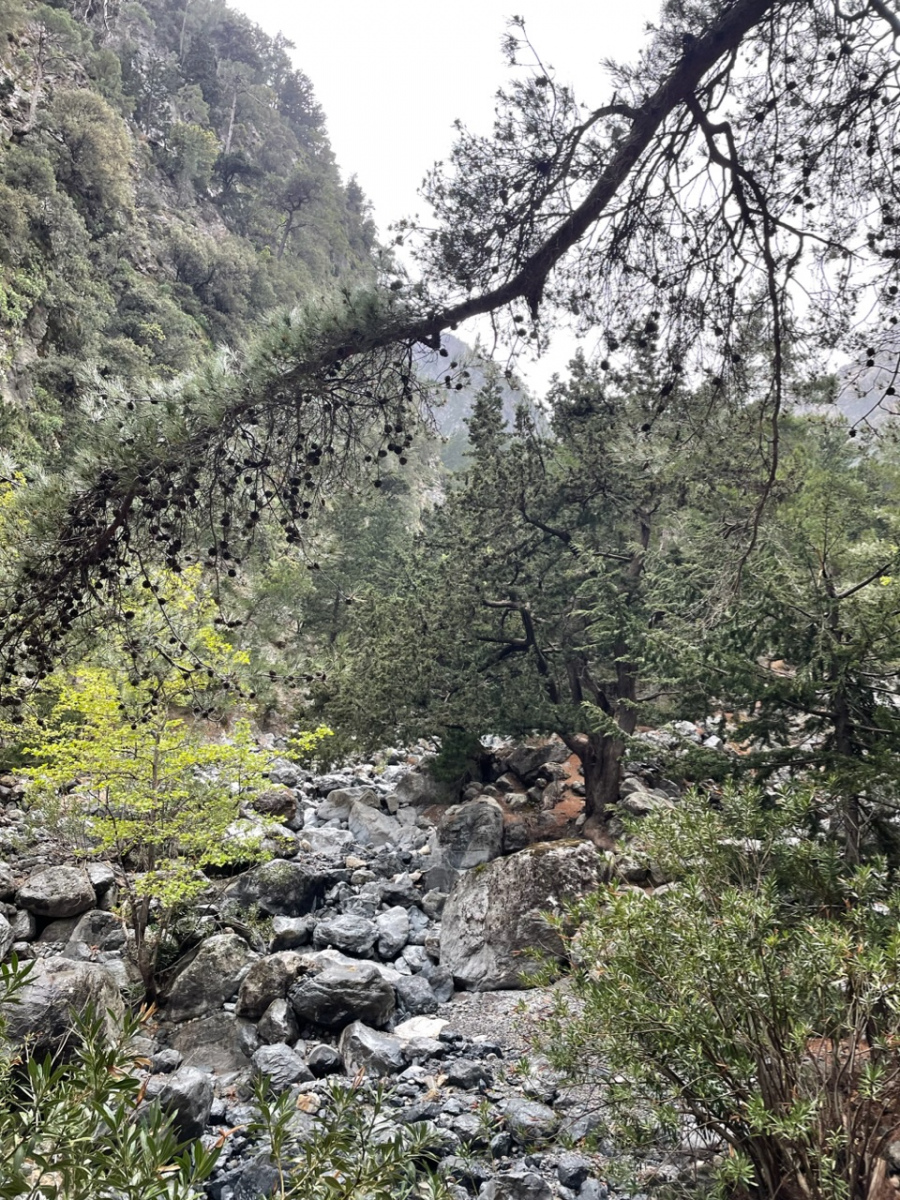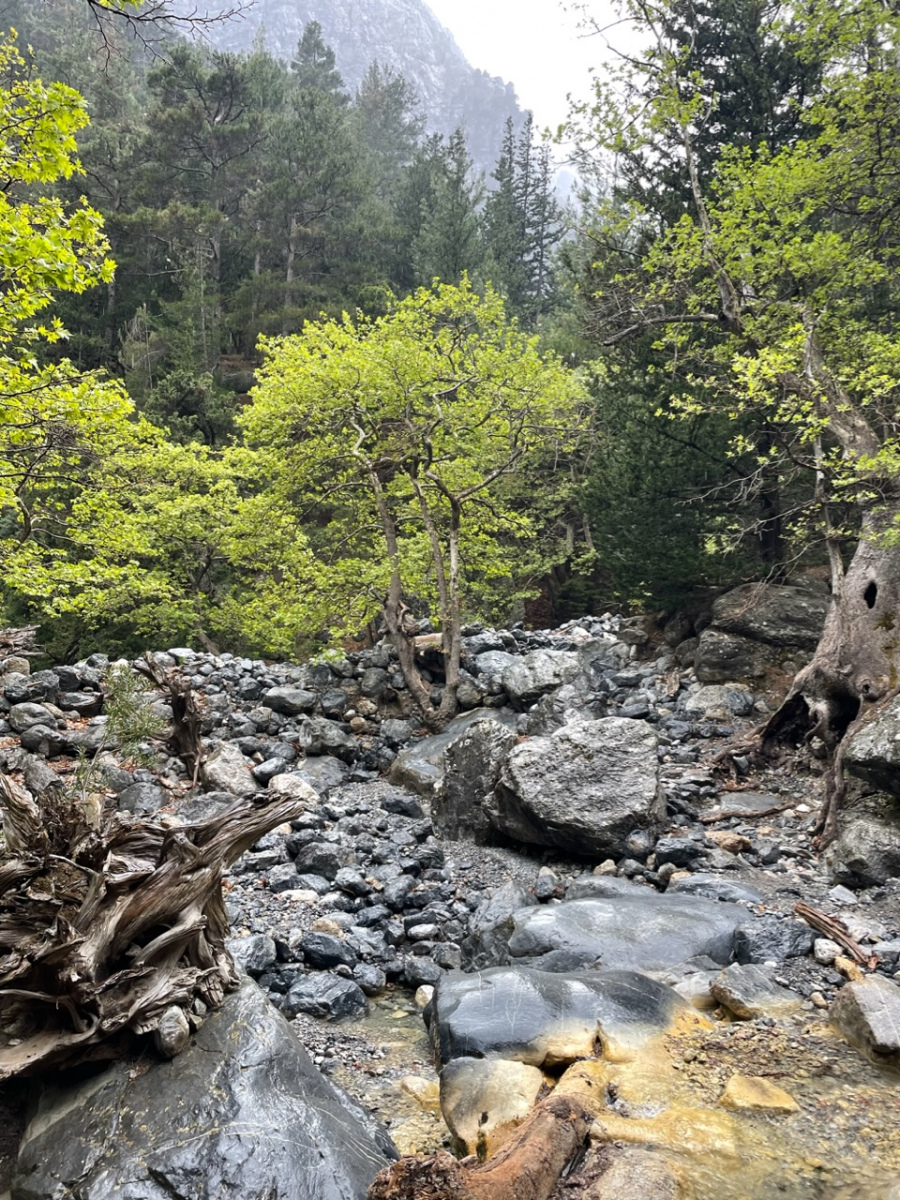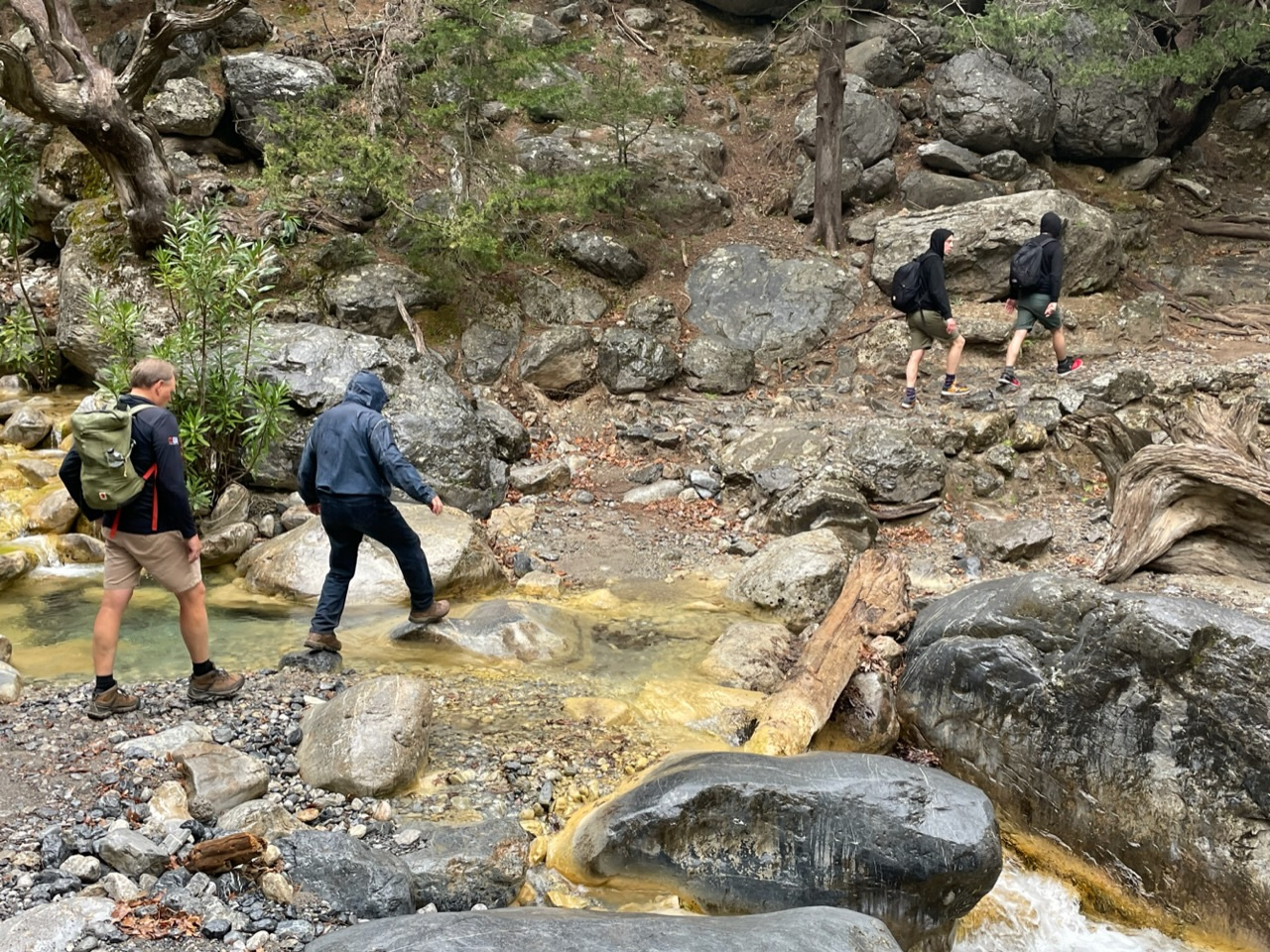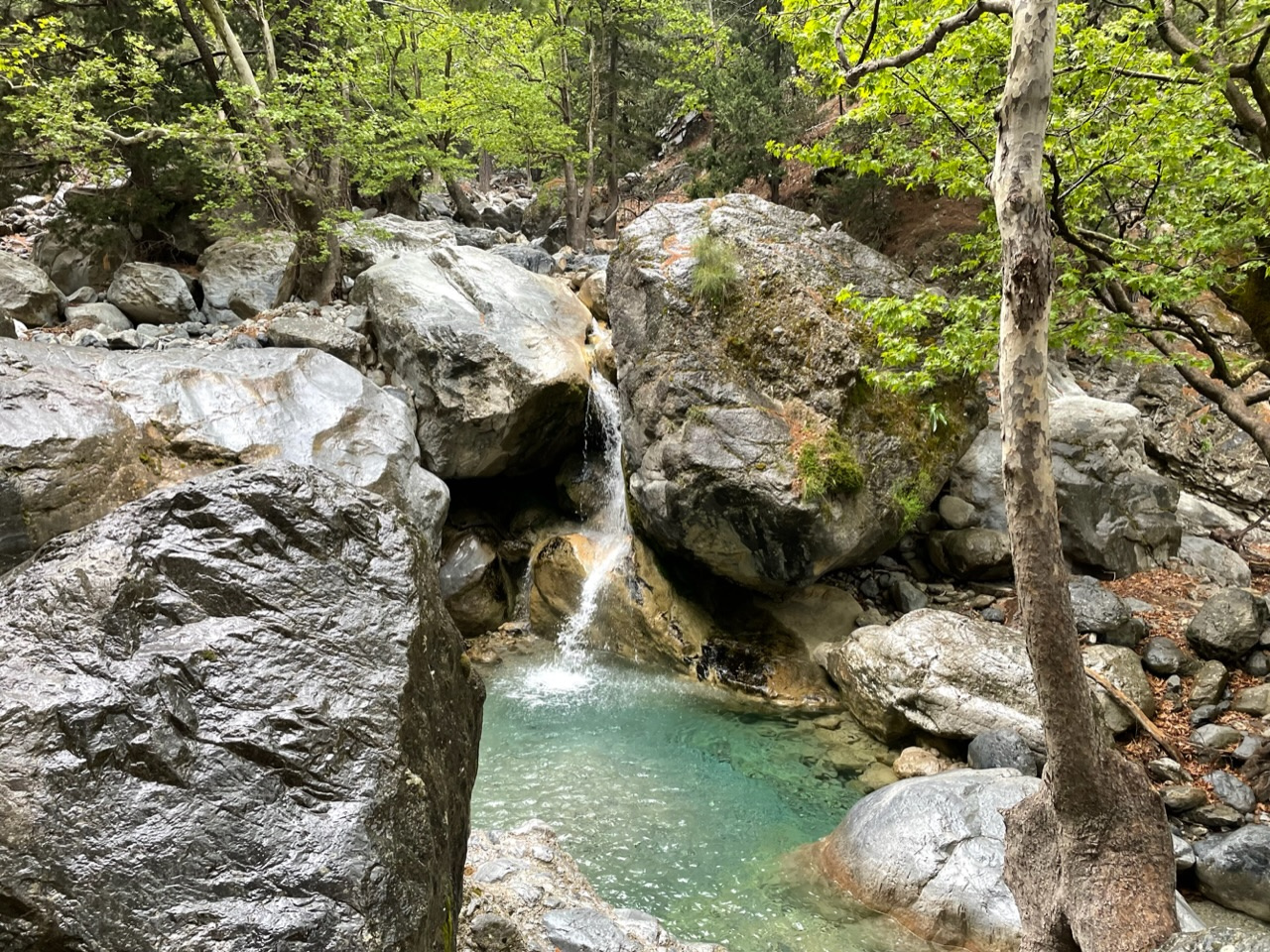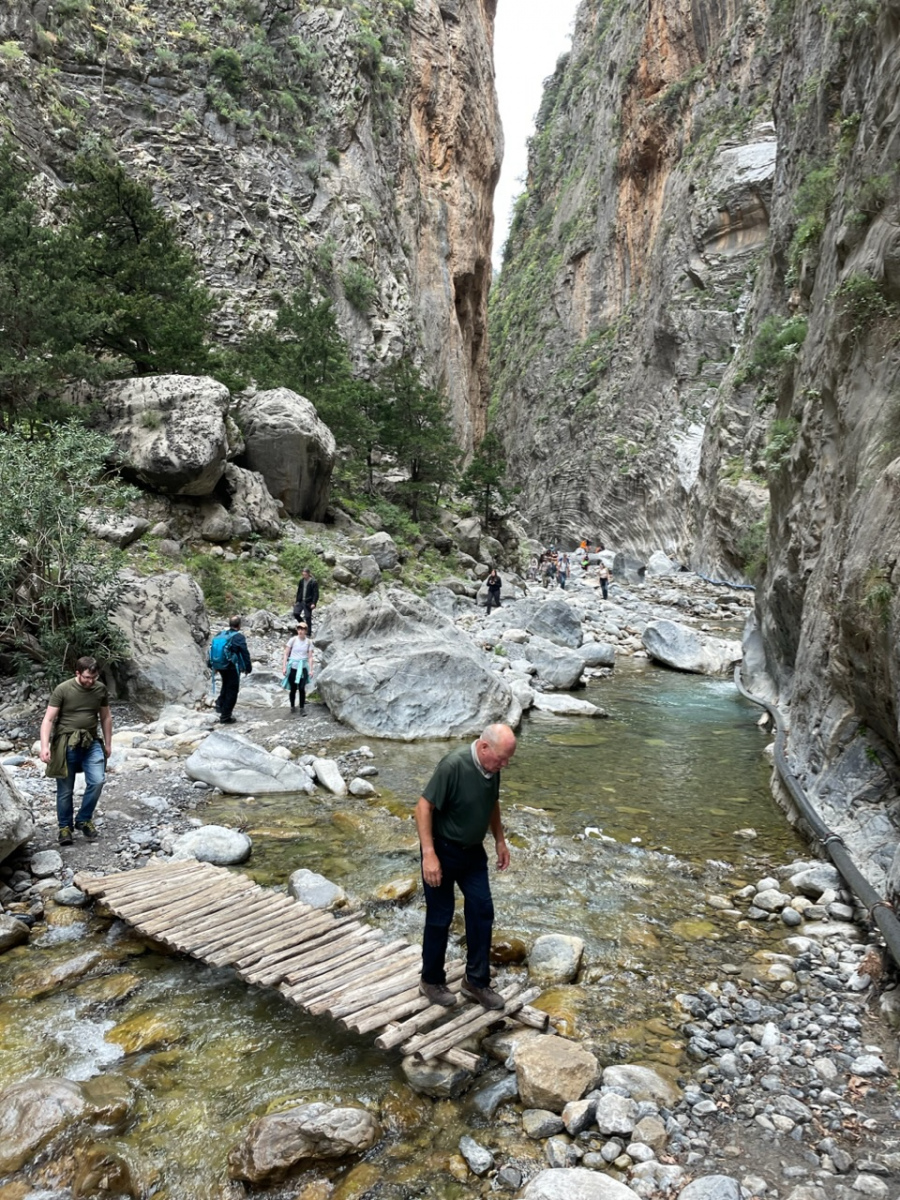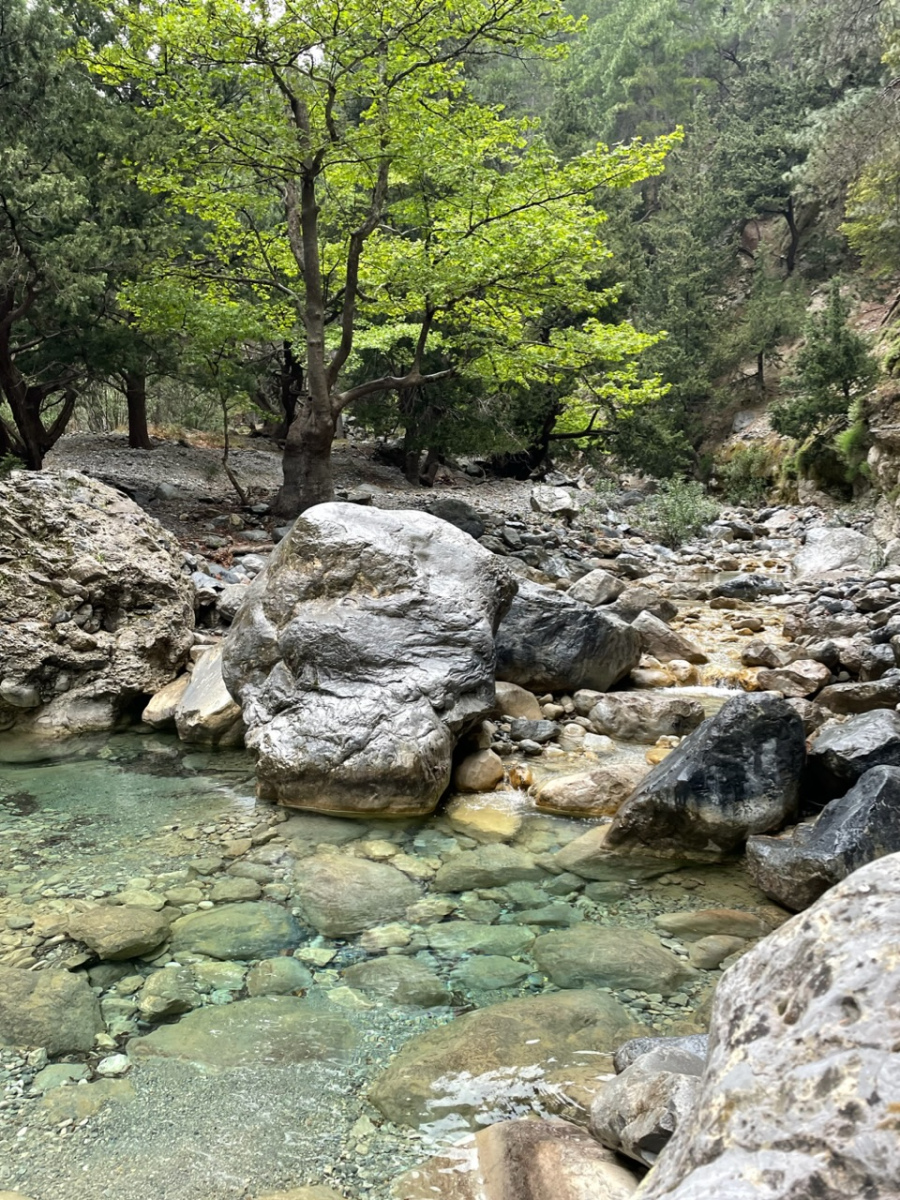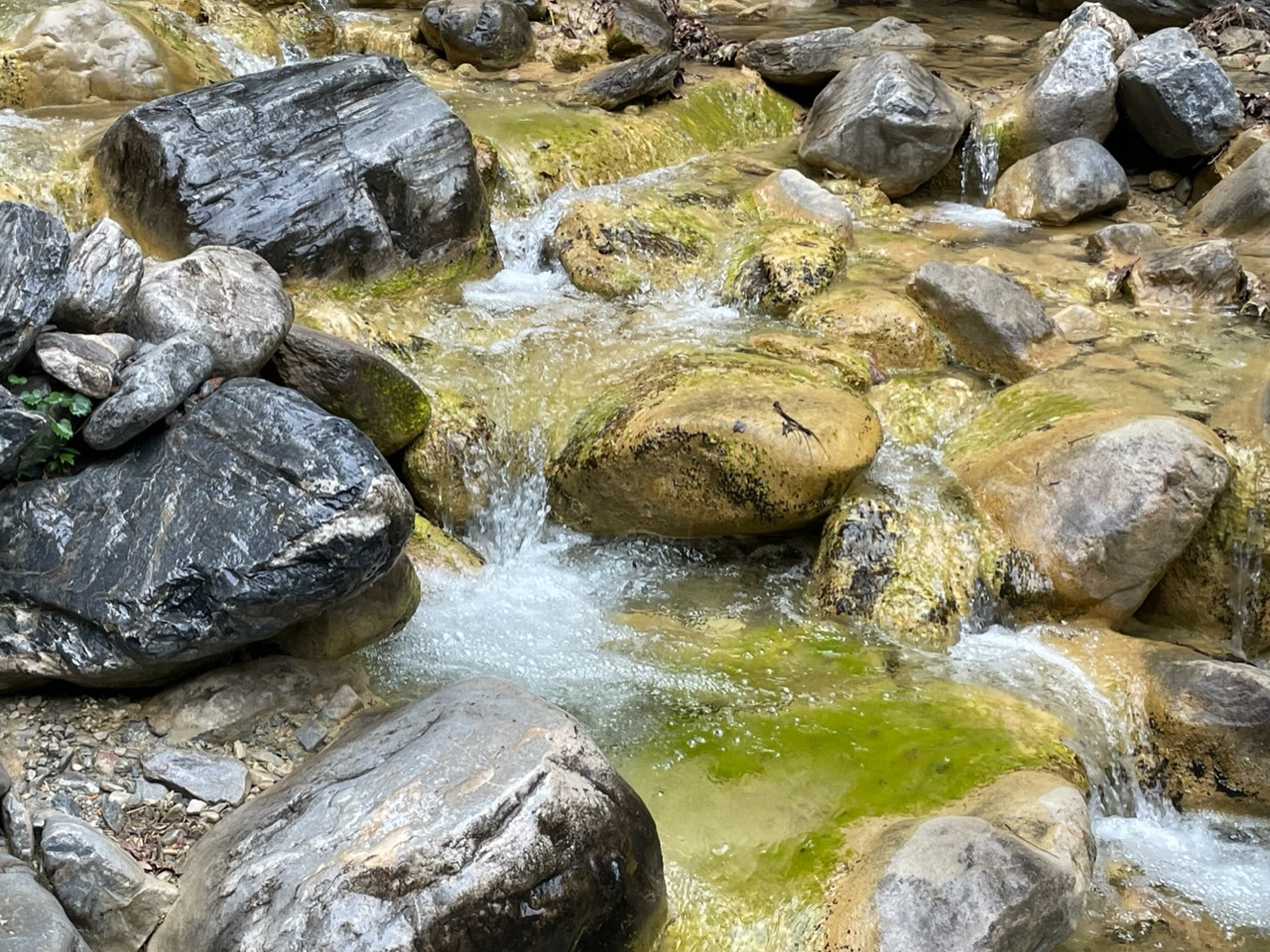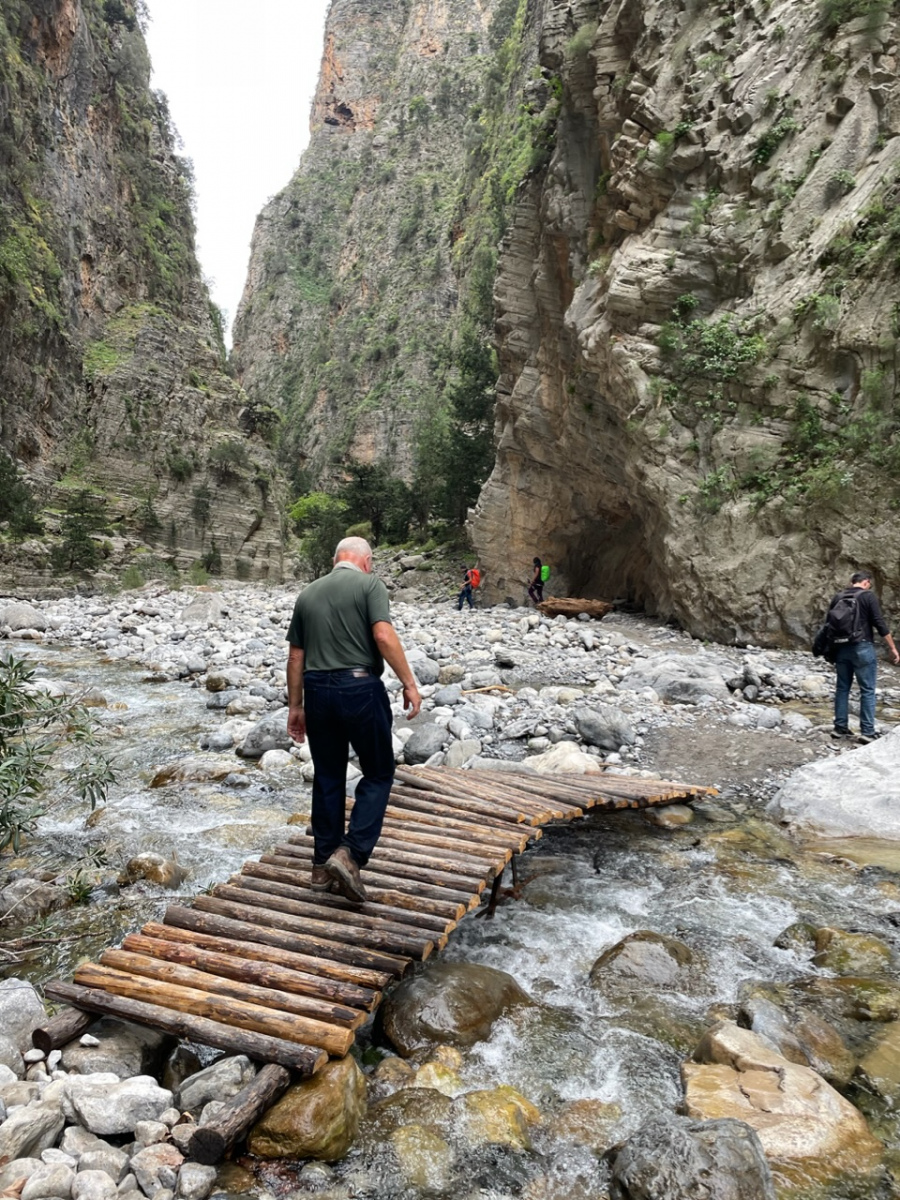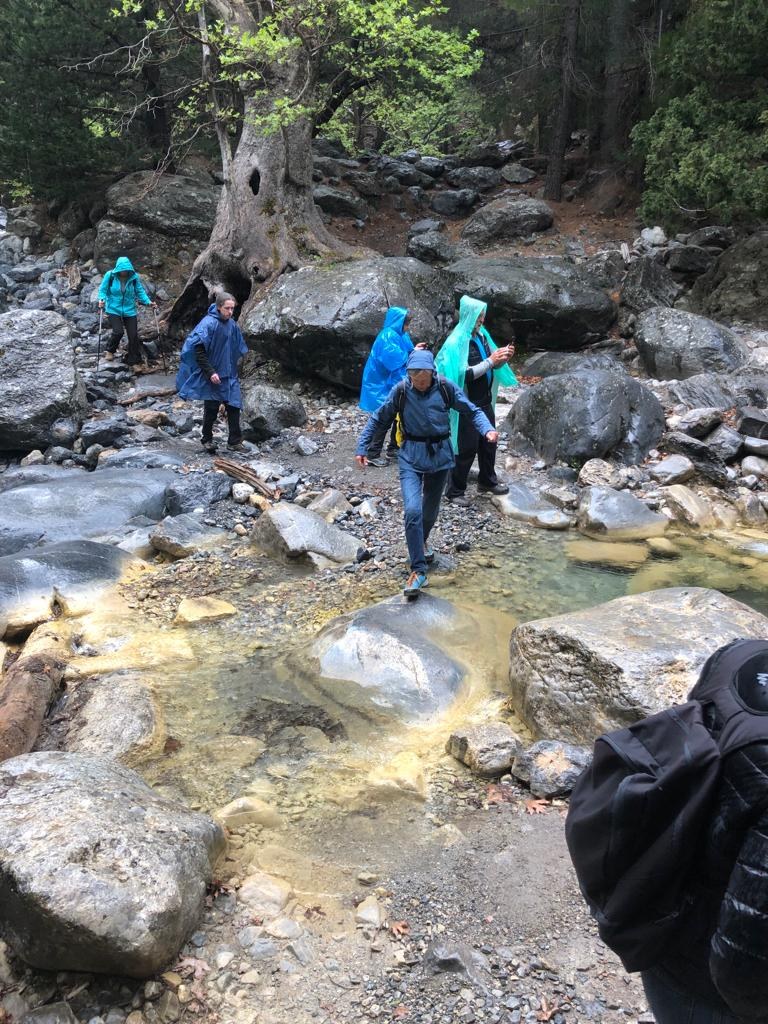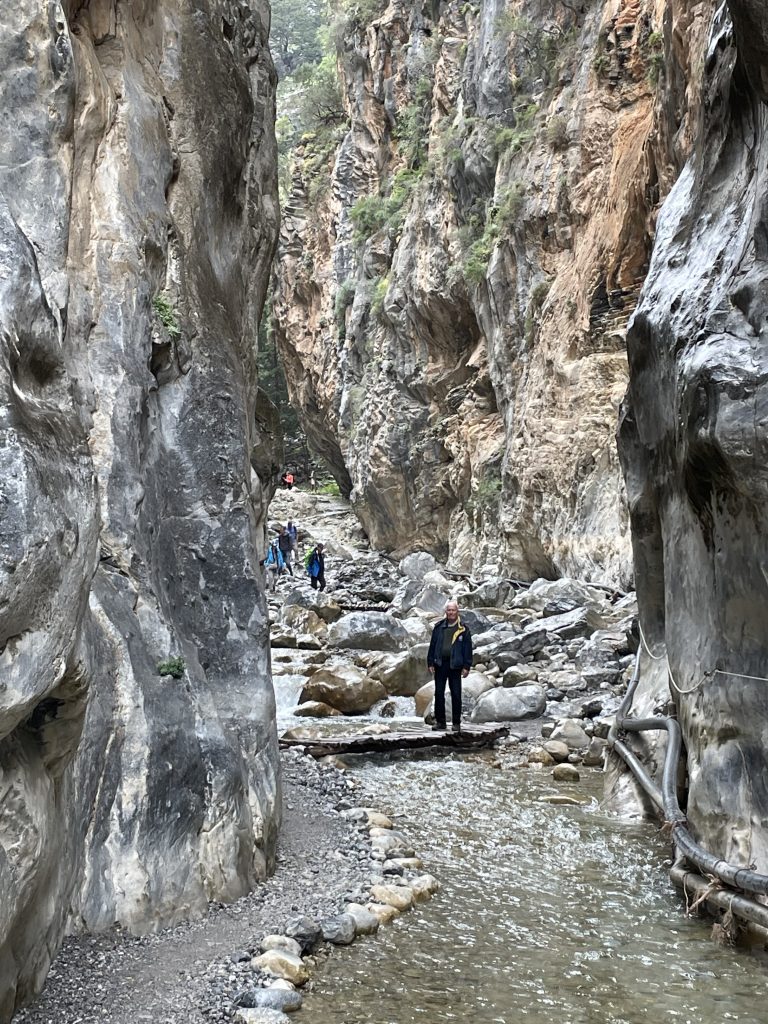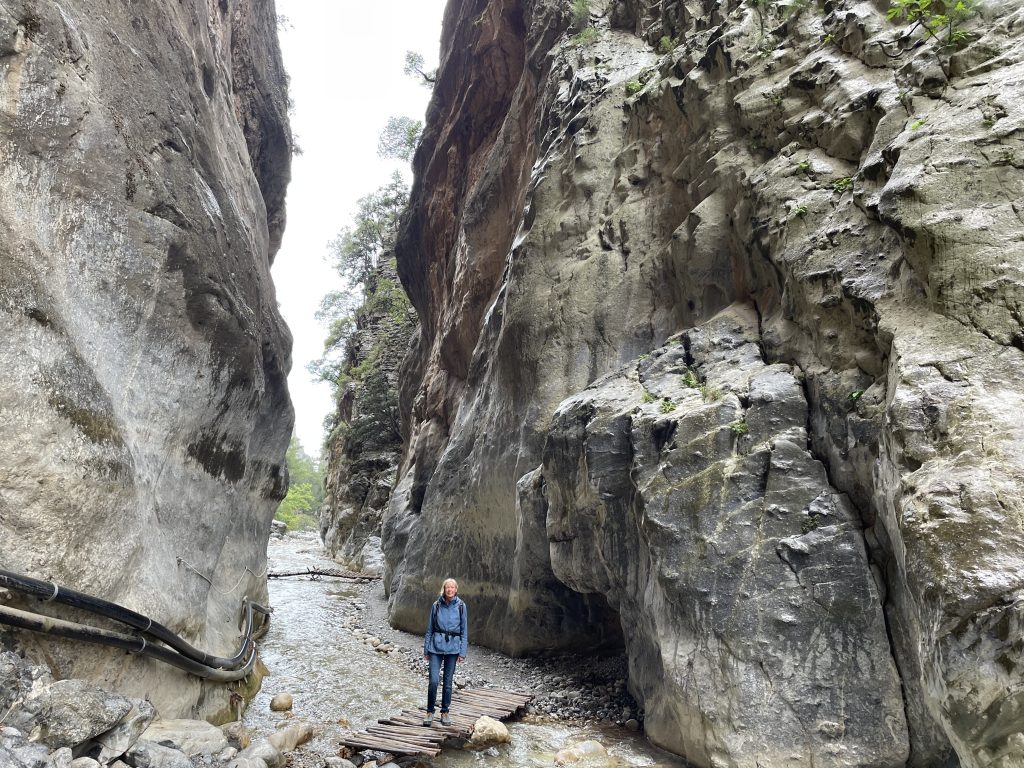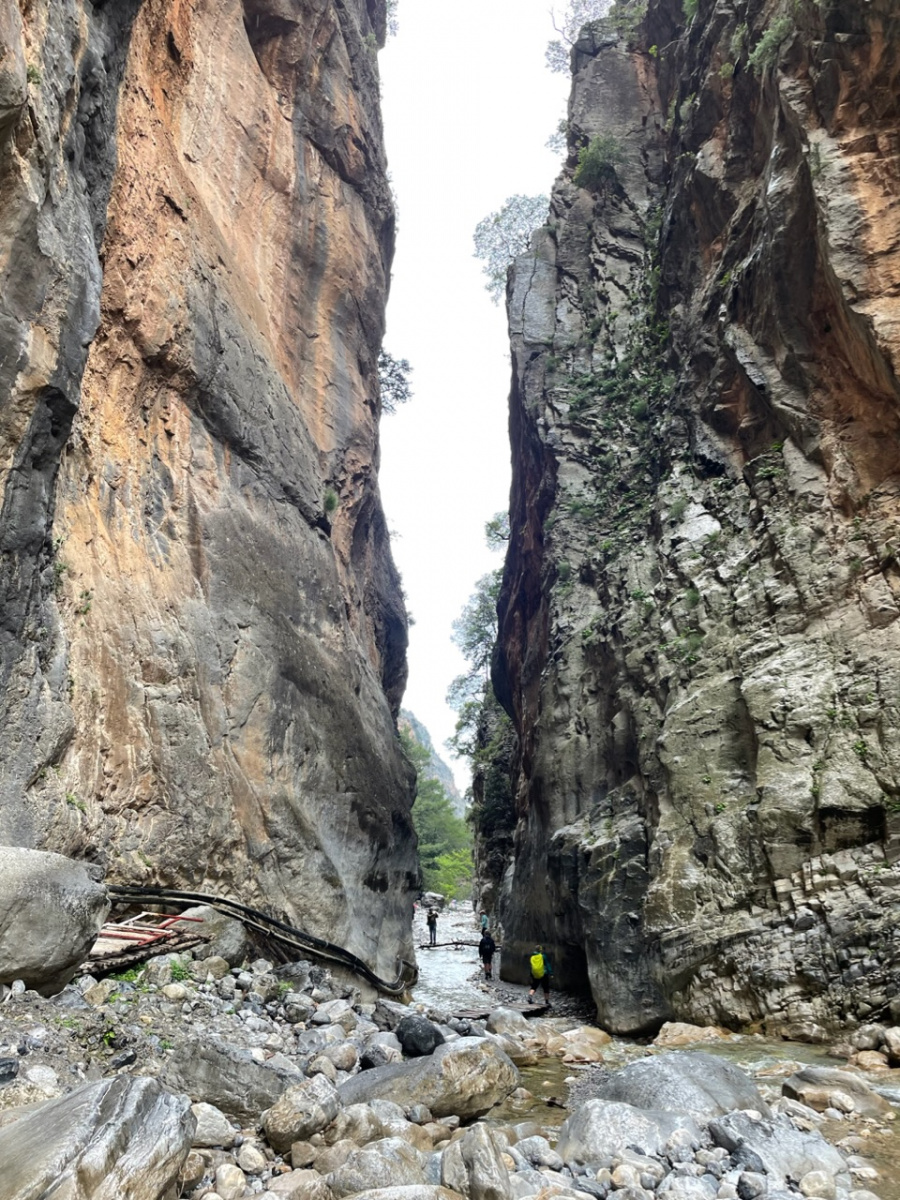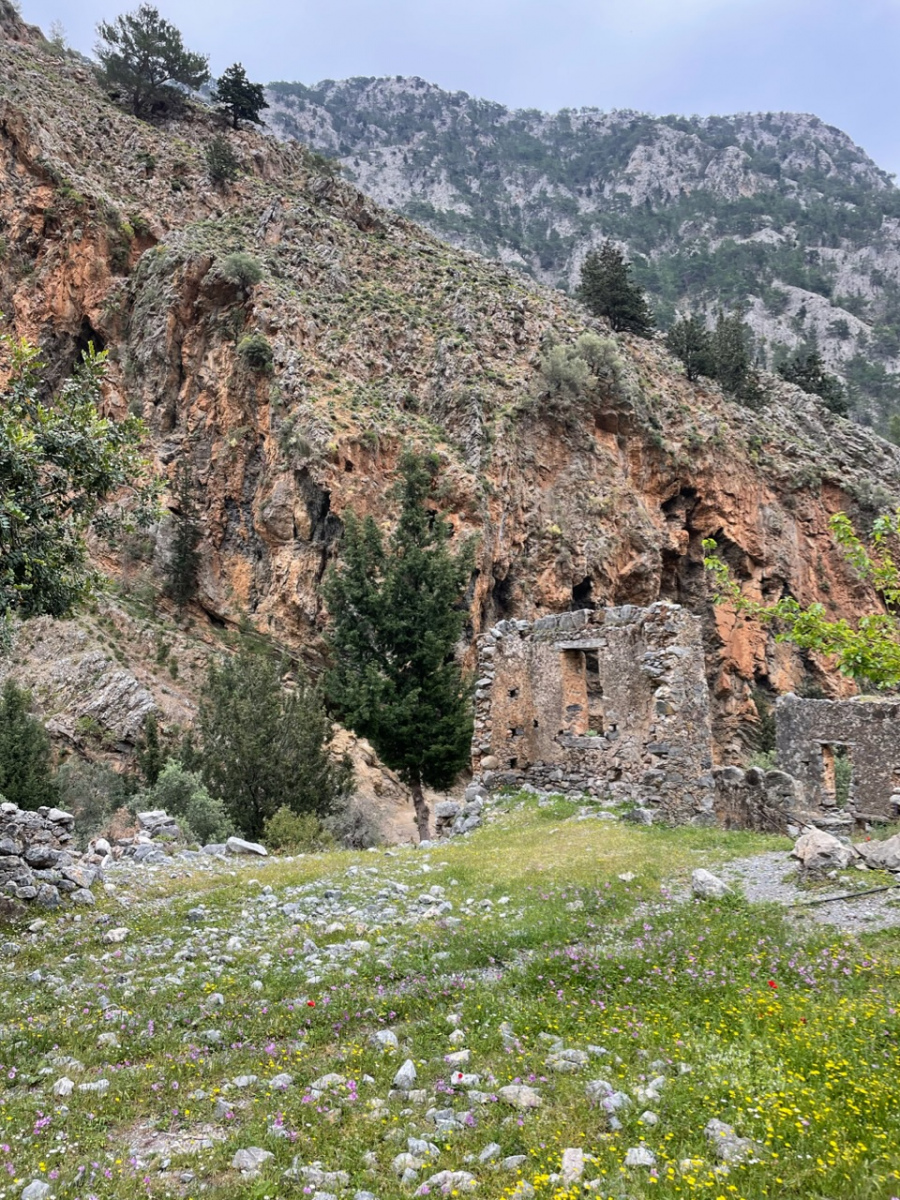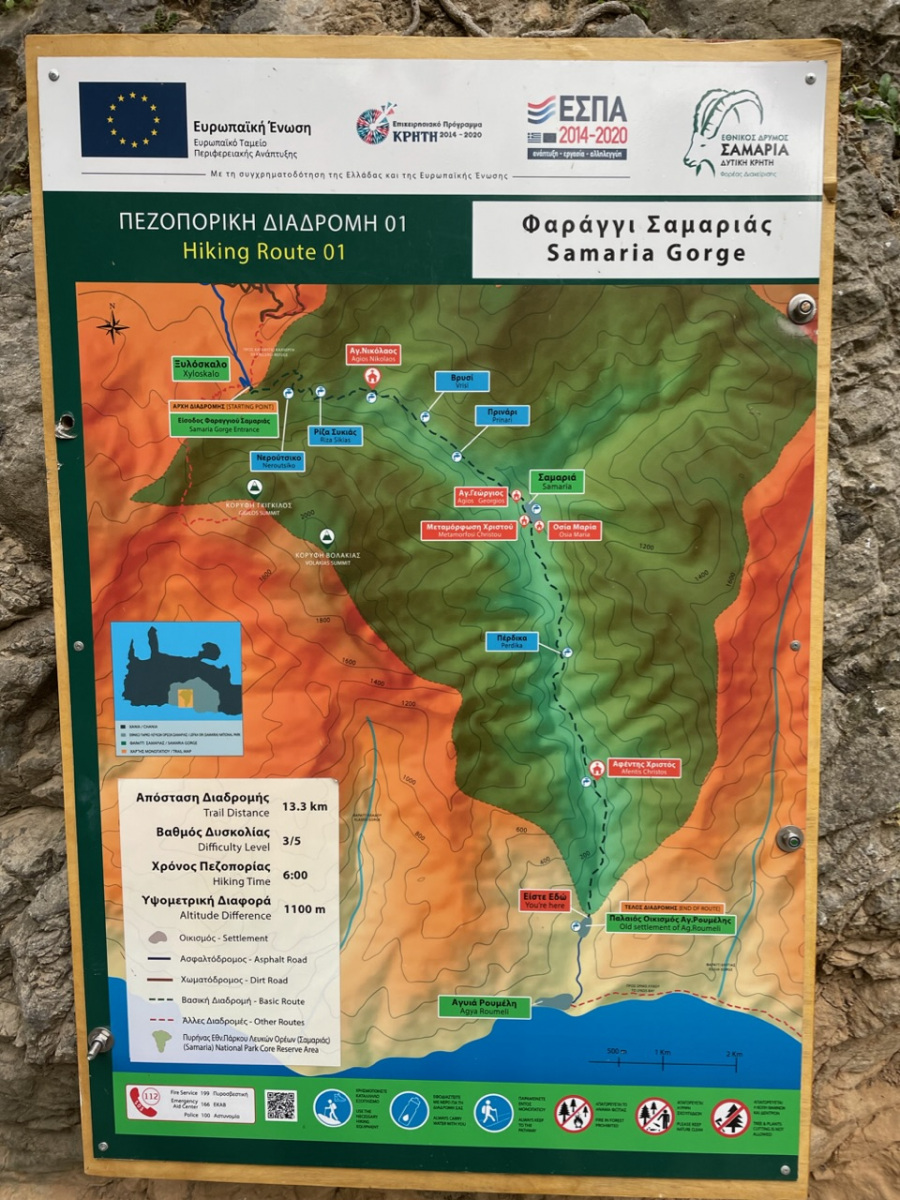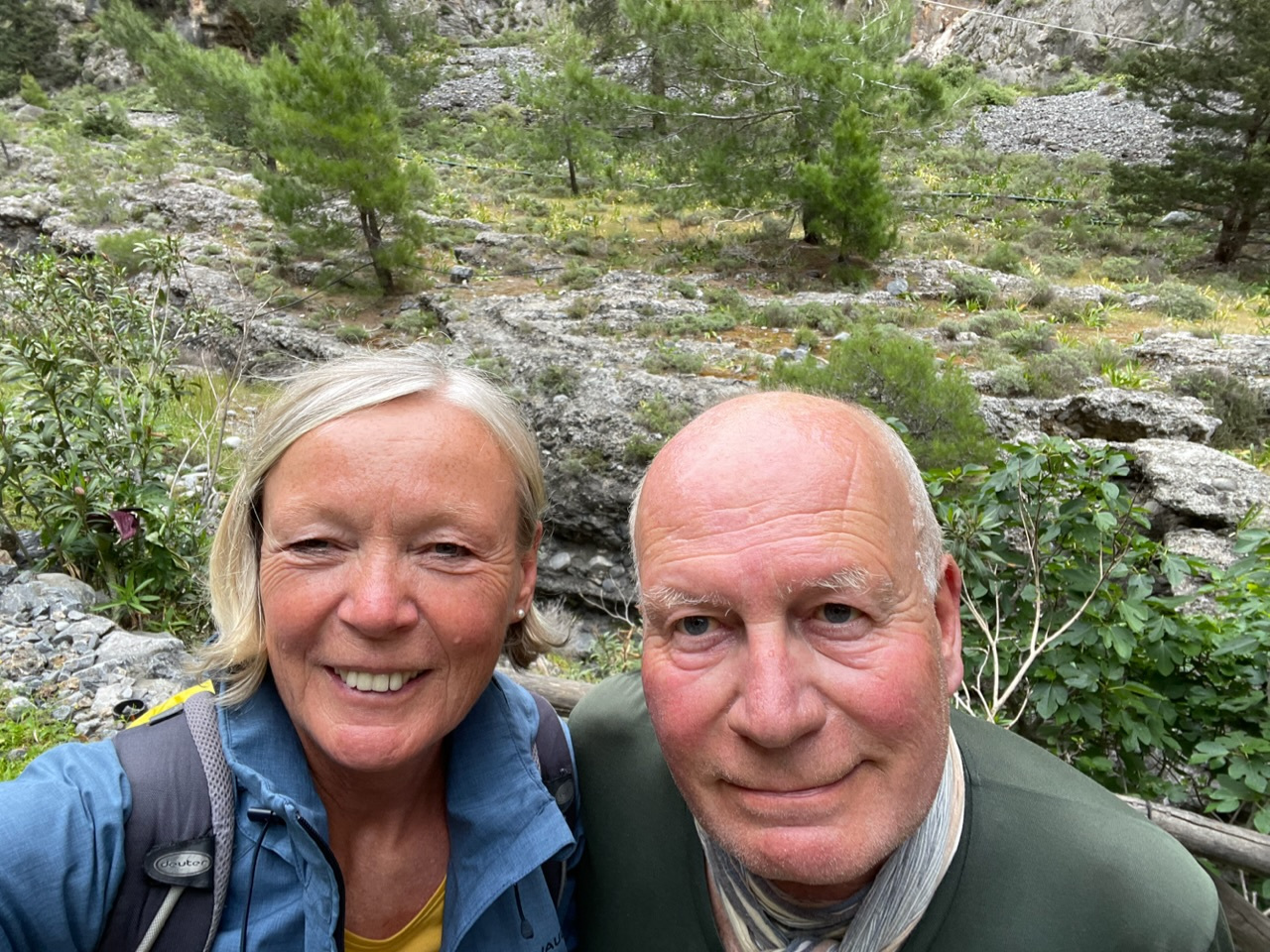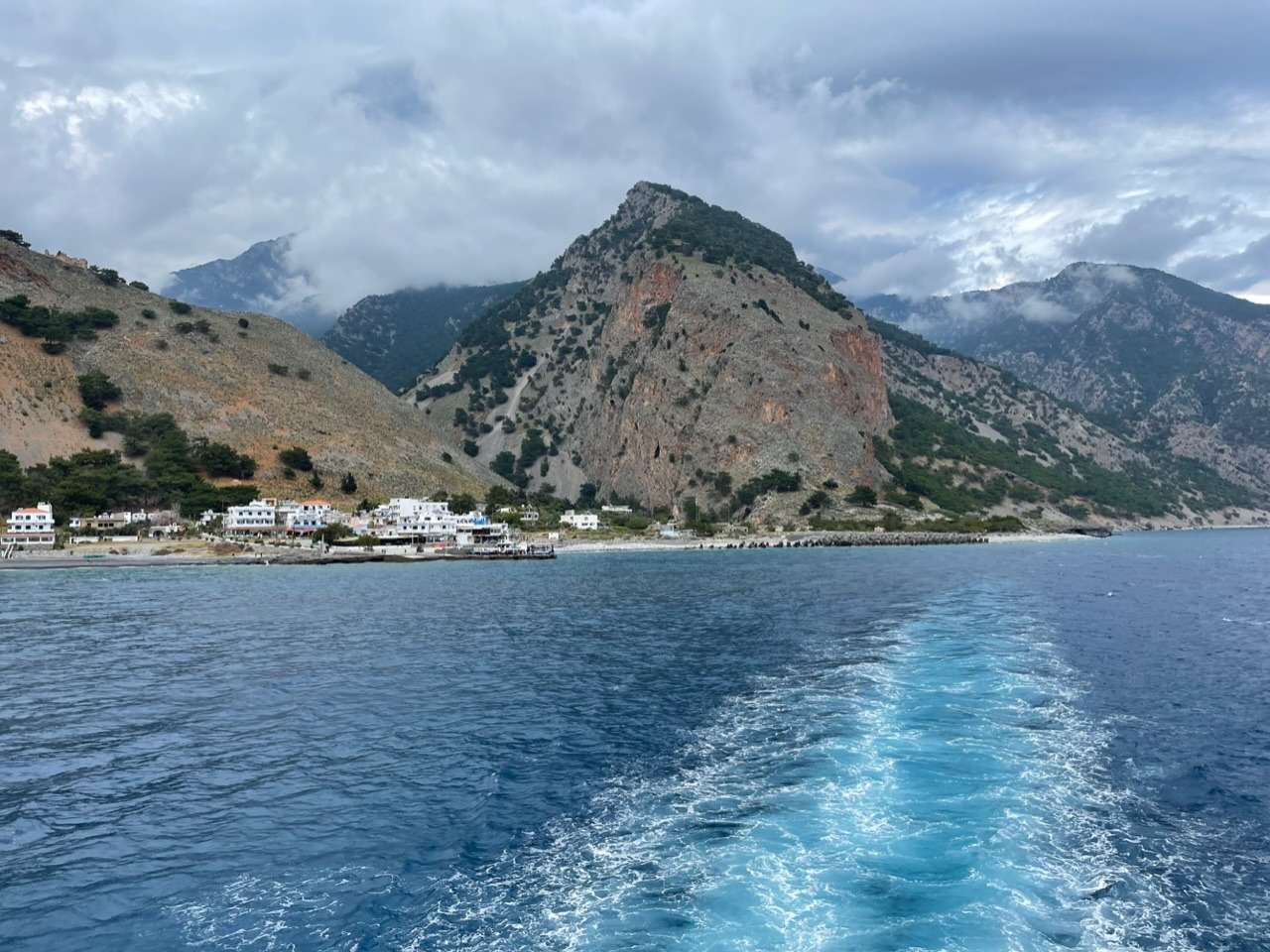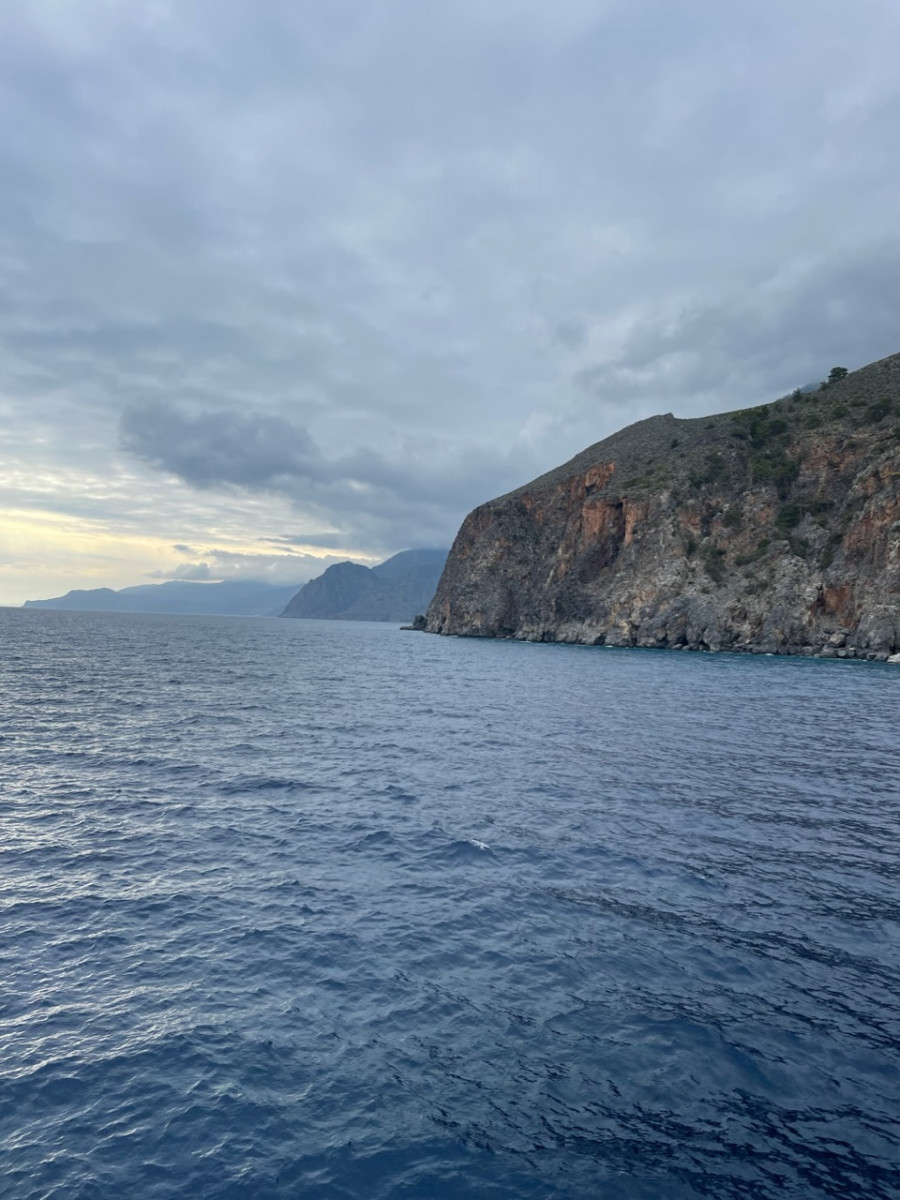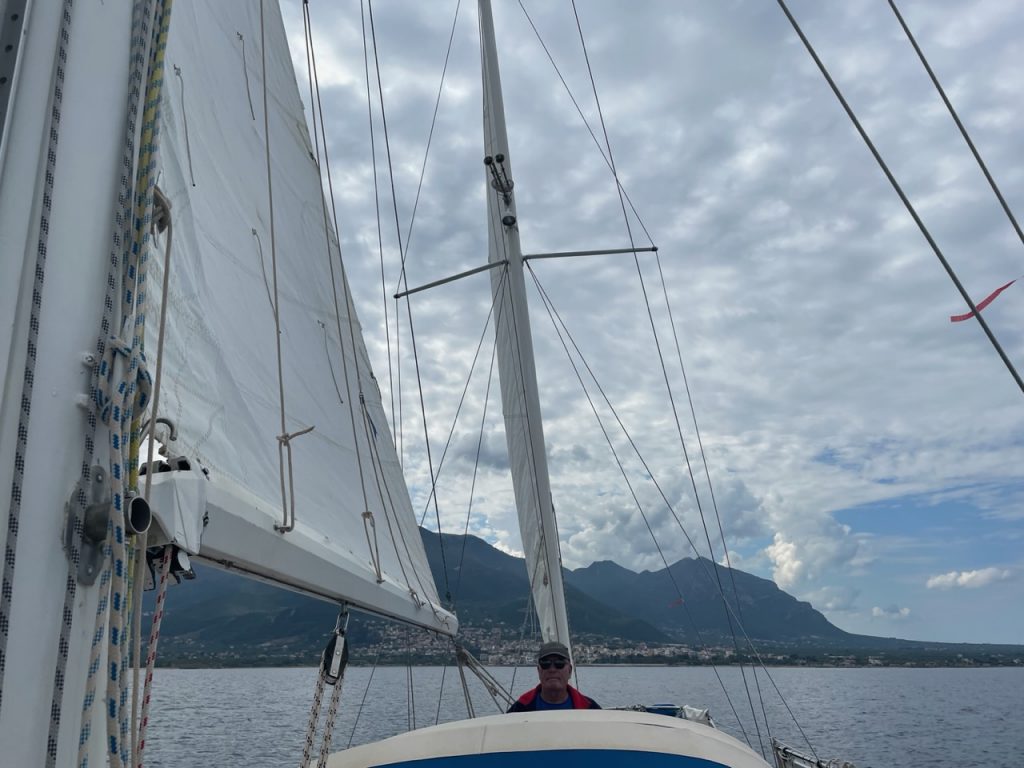
Yes, in Pylos you can also get the Poros-Syndrome. We stayed there for a few days. Had a visit on board from our friends Jürgen and Gisela, had a nice dinner together. We visited the Nestor Palace in rainy weather. Impressive, what was built there in Mycenaean times - the buildings, but also the social structures and the social life.
There was only one local bus to go there there. Back we got on the bus of a French tour group. We were just lucky again. To say goodbye we anchored again nicely in the bay and admired the magnificent starry sky.
Then we took aim at the bizarre rocks that border the bay to the west and sailed through the narrows. Under sail this was too risky for us. But that's what we have our Nannidiesel for in the basement.
Next stop: Kiparissia. We already know the place and the harbour quite well from two previous visits. We could observe seven big sea turtles in the harbour basin. The climb to the castle ruins above the village was worth it - because of the great view and because of the bar, where we had so enjoyed sitting during our first visit in 2020. We discovered "The Old Watermill" in the hinterland. In the past, there were several water-powered mills in the fertile valley near Kiparissia. One is still in operation. Here grain is grounded and processed into delicious savory and sweet cakes, which we of course tried.
Then: Cast off and continue north along the west coast of the Peloponnese. Light wind sailing with half wind. An acquaintance of ours calls this "ladies sailing". With our 16-tonner we make only slow progress in such a light wind (max. 13 knots) despite all sail up. Next port: Katakolon. From here we took the small train to ancient Olympia in 2020. We did not plan to do that this time. That was a good decision. The harbour was packed, there was only a small gap left, but we could not get into it backwards with a crosswind. So anchor up again and out into the bay. But before that we had to do a little extra task and get rid of the anchor chain of another boat that we had fished up with our anchor. We have already gained some experience with this, especially last year in the Aegean. It was done quickly. Reward: a nice quiet night at anchor in the bay and no anchor mess the next morning, when we wanted to leave to sail further north. Destination: the port of Kyllini in the northwest.
Again beautiful light wind sailing between the Peloponnese, over which the thunderclouds piled up every day as in the last days, and the island of Zakynthos. And in Kyllini we find a gap at the pier. Here we take a rest day - no a work day: Boat washed, us washed, food supplies procured. And of course fish for Dinner bought.
And where to go tomorrow? From Kylinni there are many options to sail to the Ionian Islands. We will ask our wind and weatherfrogs tonight, make a decision, knowing full well, what our friend Mats from Messolonghi advised us, "Don't trust an app." Let's see where the wind blows us.
